

Cruise, Play, Stay
With all the comforts of home, arrowcat brings back the 20' center console, a unique design, understand why.
Enjoy your boat year-round and stay warm and dry during cooler weather or overnight trips, while also having a comfortable and private space to retreat for whenever you need a break. Here are a few reasons why an ArrowCat power cat is an excellent boat to consider.
A Catamaran Boat
Catamarans have two hulls, which provide more stability in the water. They are less likely to roll or pitch, which means they offer a more comfortable ride, especially in rough conditions and for people who are prone to seasickness.
Power catamarans are typically more fuel-efficient than monohull boats of the same size. It requires less energy and yields more performance per HP. The two hulls create little to no drag or resistance to get on plane, resulting in greater fuel economy. Allowing for longer journeys with fewer refueling stops.
Power catamarans have a shallow draft which means they can navigate in diverse cruising grounds – beaches, islands, rivers, channels, and coastal areas with limited water depth.
An Express Cruiser
Cabin boats are designed with comfortable sleeping quarters and living spaces. They feature a sleeping space with a bed, a galley with a stove, sink, and refrigerator, and a head with a shower and toilet.
Cabin boats provide protection from the elements, such as wind, sun, and rain. This allows for comfortable cruising in a variety of weather conditions, as well as providing a haven during storms
Express cruisers are designed for efficient and fast navigation, offering higher speeds compared to traditional cruising boats. They usually have powerful engines that enable them to cover long distances quickly, making them ideal for day trips or weekend getaways.
Powered By Outboard Motors
Outboard motors can provide excellent performance and speed. They can often reach higher speeds than inboard motors of the same horsepower.
Outboard motors have a simple and standard design and are relatively easy to install, they do not require additional components such as a transmission, propeller shaft, couplings, and struts, that inboard engines do. They are easily assessable and cost less to maintain than inboard motors because they are mounted outside at the rear of the boat.
Outboard motors are often designed with features that make them easy to maneuver. For example, they can be tilted or rotated to provide precise control and handling in tight spaces and shallower waters.

ArrowCat Power Catamarans
The outboard powered express cruising catamaran.
ArrowCat Express Cruisers are designed from the ground up to maximize comfort, performance, durability, and fuel efficiency, making them a better choice for both in-shore and off-shore family cruising. We build our powercats with your safety and enjoyment in mind, designing our signature interior cabin so that you’re not limited by the outside elements, but rather have the ability to enjoy your vessel at any given time, regardless of weather or location. Superior construction, optimized performance, economy, and safety can be found in every ArrowCat we make.
Explore Our 32' & 42' Signature Cabin Models
Perfect for offshore and inshore cruising, long distance and overnight trips, cold off seasons and hot boating seasons, and much more. The ArrowCat 32-foot and 42-foot models provide an exciting and versatile experience on the water. Explore to see which one could best suit your boating lifestyle.

ArrowCat 320 Coupe
Express Cruiser Catamaran Hull Planing Hull Design Twin Outboard Motors Standard Layout: 2 Cabins/ 1 Wet Head Trailerable Optional Tower Upgrade LOA: 31′ 2″/9.50 meters Beam: 10’/3.05 meters Draft: 20″/.508 meters
ArrowCat 420 Coupe
Express Cruiser Yacht Catamaran Hull Planing Hull Design Twin Outboard Motors Standard Layout: 2 Cabins/ 1 Full Head LOA: 41′ 9″/12.73 meters Beam: 14′ 9″/4.5 meters Draft: 18″/.46 meters
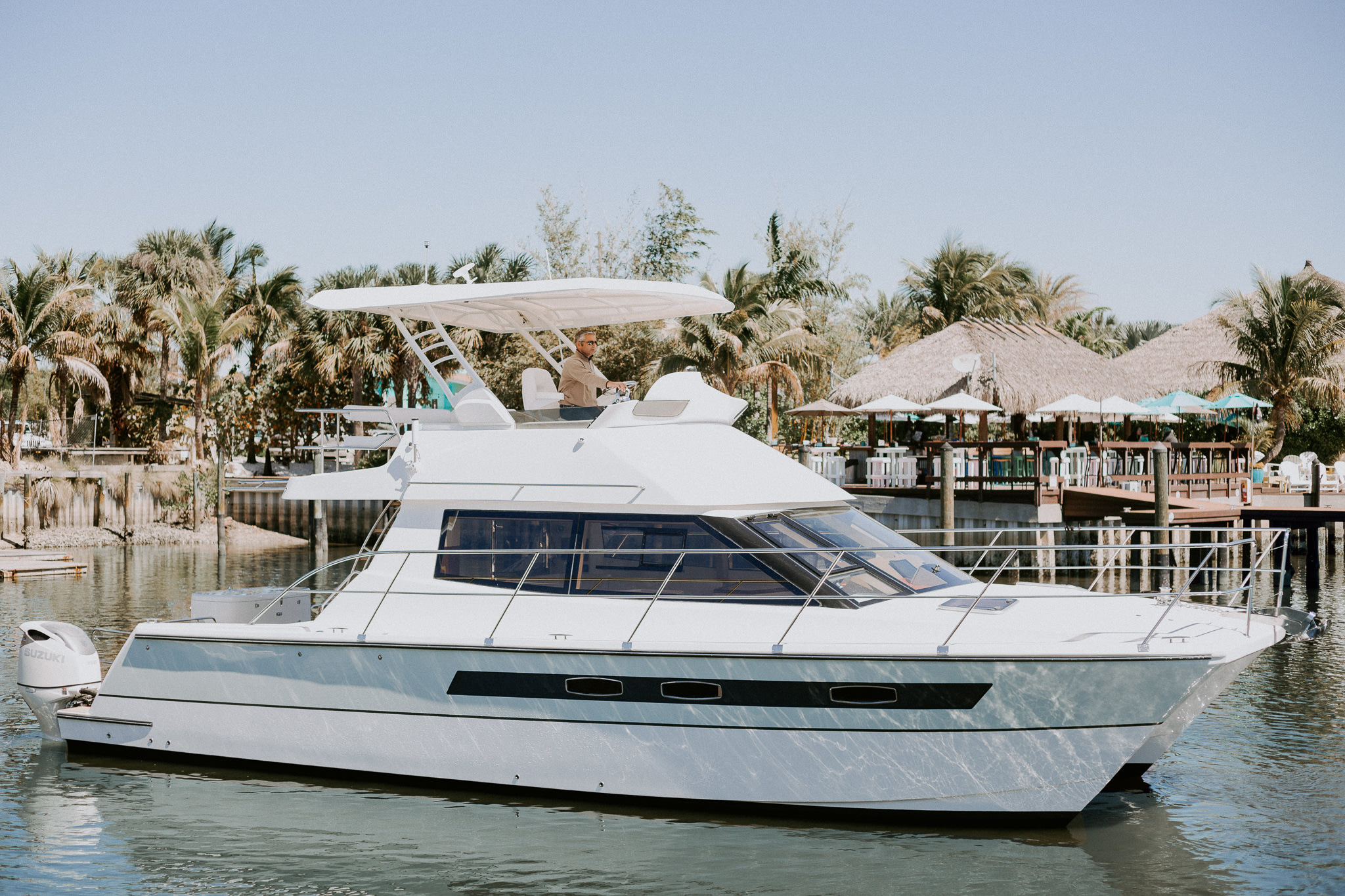
ArrowCat 420 Flybridge
Express Cruiser Yacht Catamaran Hull Planing Hull Design Twin Outboard Motors Standard Layout: 2 Cabins/ 1 Full Head LOA: 41′ 9″/12.78 meters Beam: 14′ 9″/4.5 meters Draft: 20″/.5 meters
Smooth, Fast, And Stable Ride
Talk To One Of Our Sales Experts To Schedule A Sea Trial & Experience The Feel For Yourself
Privacy Policy
Boat Profile
Eco 5 Power Cat
A catamaran for cozy cruising
From Issue March 2016
W as it time for another boat? In the 1980s, it was a 16′ sailing dinghy that awakened my wife Barbara and me to the beach-cruising pleasures of the San Juan Islands in Washington’s Puget Sound. In the ’90s, it was a 19′ lug-rigged double-ender for oar, sail, and outboard that extended cruising to Desolation Sound. Then came a 20′ catamaran, sporting a wing mast with square-topped mainsail, that got us inside a comfortable cabin while offering exciting sailing in moderate conditions. But as years went by, sitting out in the weather and hauling sheets took its toll. Sailing was exciting when the wind was up, but boring in light summer winds. Why bother with sailing if we could motor at 10 knots? Was it time for a gasser?
And so it was, and we decided upon the Eco 5 Power Cat by Bernd Kohler in France. Its narrow hulls, wave-piercing bows, space-age profile, and three-tone color scheme really made it a looker. At 5.5 meters, it was about the same size and accommodation as our 6-meter sailing cat, and still trailerable behind our compact SUV. The twin 5-hp outboards specified in the plans were to drive the EcoCat at an economical 10 knots and spin it around in circles. Having them mounted on the transoms should eliminate weed pickup, as well as the between-hull wave buildup working against a centrally mounted outboard. I ordered plans, and the digital files came quickly via email.
The plywood-on-frame EcoCat is simply built, using chines sprung around widely spaced bulkheads. I opened the DXF files on an older Mac Cube still running Drawing Board CAD from Ashlar Vellum. With CAD, I made some design changes for a bit more cabin headroom, bigger windows, storage lockers forward, and extended cockpit sides complementing the cabin profile.
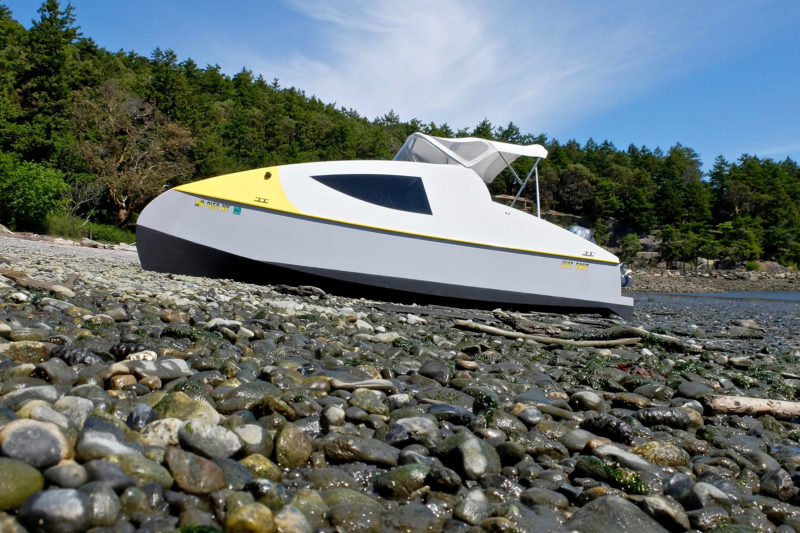
The Eco Cat rests comfortably on the cobbles between tides. There’s room aboard for an inflatable kayak when a dinghy is required if the Cat’s at anchor.
Once I had the design tuned to suit our needs, I nested parts for economical use of plywood sheets, created a tool path for the ShopBot CNC router I’d used for our rowing-shell kit business, and quickly cut out the parts from 6mm plywood. It sounds complicated, but it’s actually similar to laying out parts by hand—but with parts cut far more accurately, with beautiful, fair, and smooth curves everywhere. I milled clear Sitka spruce to dimension, scarfed it to full lengths, rounded edges, and precoated everything with epoxy. This self-made “kit” made for very fast building.
The building jig had only one temporary form; all other forms were bulkheads that remained with the hulls. The hulls were built upside down, planked, and even finish-coated with graphite-infused epoxy—later I’d paint above the waterline. The 6mm planking was patterned on the hull, as the actual faired shape may be a bit different from a CAD plate expansion, then glued in place and trimmed. The hull and side-panel sections were joined with butt blocks that added stiffness in way of the temporary bulkhead. After I flipped the hulls upright and aligned them, I fit the deck—scarfed 12mm plywood. The cabin sides and top were built up with two layers of 4mm ply. It took just four months for me to complete the construction of the hulls and cabin.
The partially finished boat looked great, and I decided to spend the big money for a two-part paint sprayed on by a professional, thinking it would be done quickly. Wrong. It was another six weeks before the boat was back for outfitting. The plans showed a windscreen here, a galley there, a steering wheel, and twin outboards—but no details. It was just another challenge to work through.

The two small outboards were a good fit for the twin hulls, but didn’t provide adequate power.
Remote steering and motor controls for twin outboards is very routine for a monohull, but not for tiny twin 5-hp outboards on a catamaran! Time to improvise. A tiller bar, supported on nylon bushings, was hidden in the cross beam with a mechanical steering cable connected to the dash-mounted steering wheel. What a challenge it was just to have twin motors on a little catamaran.
Another professional I hired designed an excellent canvas dodger, back panel, and semi-rigid windscreen that really complemented the design. Barbara and I could now cruise, completely protected from wind and rain, sitting in comfortable captain’s chairs. The 6′ x 8′ cockpit is our living room at anchor, doubling the EcoCat’s enclosed space. A Yeti cooler, good for five days, stays in the cockpit as a table or extra seat. An Origo two-burner alcohol stove eliminated complicated propane systems. We use a lightweight 32-amp-hour starting battery, not for the pull-cord-start outboards, but for powering LED lighting and an iPad for music and charts with the Navionics app. We only need the instruments powered up while we’re under way, so the outboards’ 6-amp charging outlets supply power directly to the instruments and charge the battery at the same time. No shore power is needed. Simple systems for a simple boat—its name, JUST ENUF, serves the cat well!
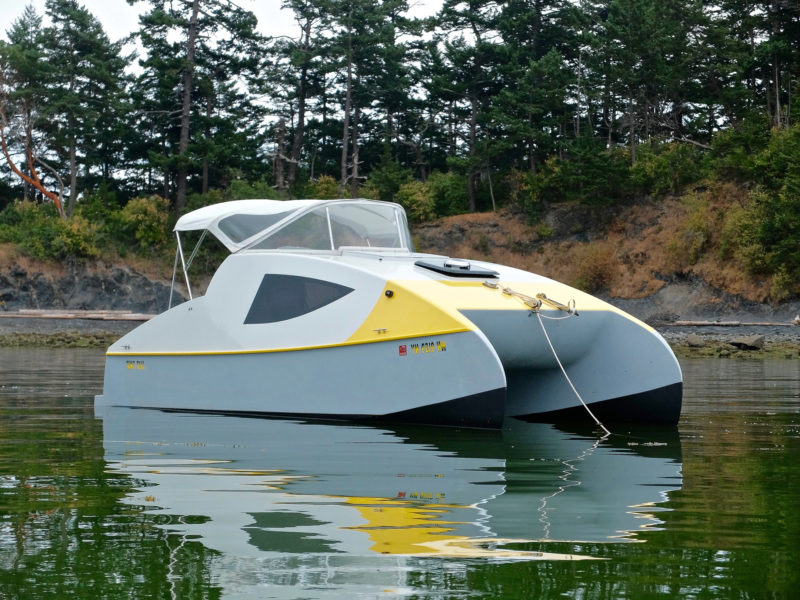
The Cat’s shallow draft and twin hulls open up options for anchoring in shallow coves. If the bottom is even and not too rocky, grounding out during a midnight low tide isn’t a problem.
D uring the boat’s first season we took a two-week cruise to British Columbia’s Broughton Islands. The cruise covered hundreds of miles, and we alternated between being the only boat in a secluded cove and being surrounded by the warm hospitality of wilderness float marinas. A comfortable 80-mile range and top speed of 10 knots allowed us to do plenty of exploring without concern for time or fuel. The EcoCat is comfortable in sea conditions of 2′ short, steep chop and can confidently deal with far rougher conditions.
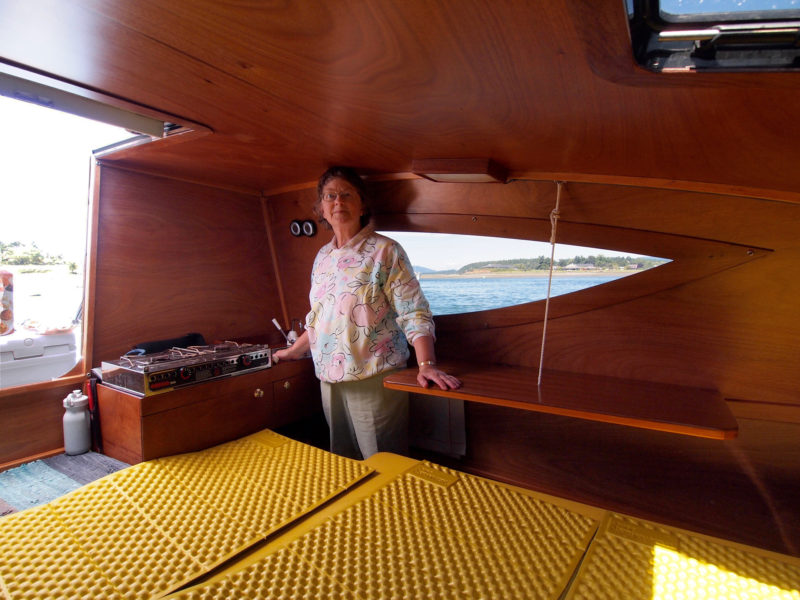
Having the lines of the Eco Cat in CAD files simplifies making alterations like raising the cabin roof to provide standing headroom.
This 8′-wide catamaran offers the stability and seakeeping of a far larger boat. There’s never a problem grabbing for a hot pan when another boat, zipping by to look at JUST ENUF, leaves its wake for us. There is plenty of room with a hanging locker and two cuddies for each person. Sleeping bags with integrated mattresses make a very comfortable double. When bags are folded over during the day, the large padded bridge deck area is very comfortable for sitting, cooking, and just hanging out. The starboard hull has a cushioned canoe seat atop the porta-potti. Just forward is hull storage for an inflatable kayak or two folding bikes and other bulky gear. The port hull has standing headroom at the sink and sit-down room for meal preparation with a flip-down table for dining.
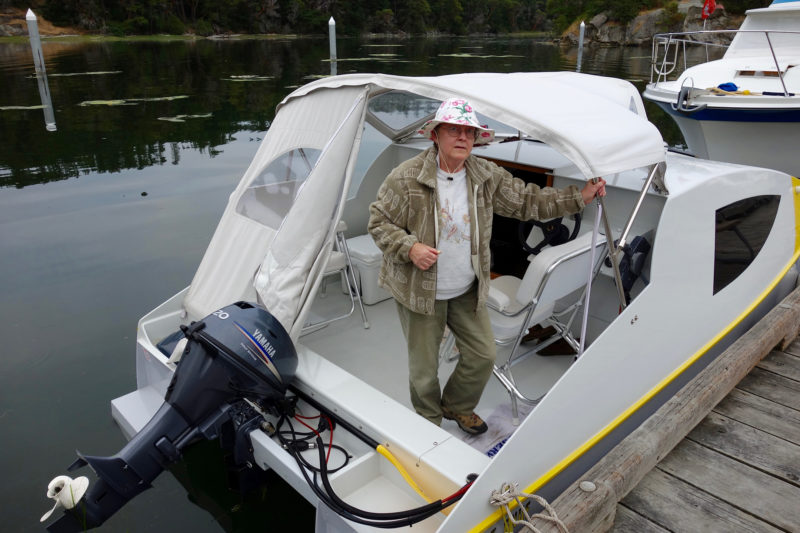
A single 20-hp outboard can outperform twin 5-hp outboards. Just behind the motor’s shaft you can see one of the extensions added to the hulls to improve the trim with the greater motor weight. The custom-made canopy doubles the Cat’s sheltered space.
The twin 5-hp outboards proved to be not enough power. They had no top-speed potential, pull-cord starting, and were noisy, especially with the steering linkage rattling between them. Worse, the tiny props had so little bite that docking maneuvers were a constant challenge. A repower with a single Yamaha 20-hp outboard yielded a 10-knot cruising speed, 15-knot top speed, and the same fuel economy as the twin 5s: 1 gallon per hour at any speed. Electric start, 6-amp charging capability, and a lightweight battery competed the package. A 1′ extension added to the stern of each hull helped offset the additional weight of the larger motor and its under-deck 12-gallon fuel tank. Docking was no longer embarrassing, and we could now talk while running 10 knots. The rougher the water got, the faster and smoother we would go. Life was good.
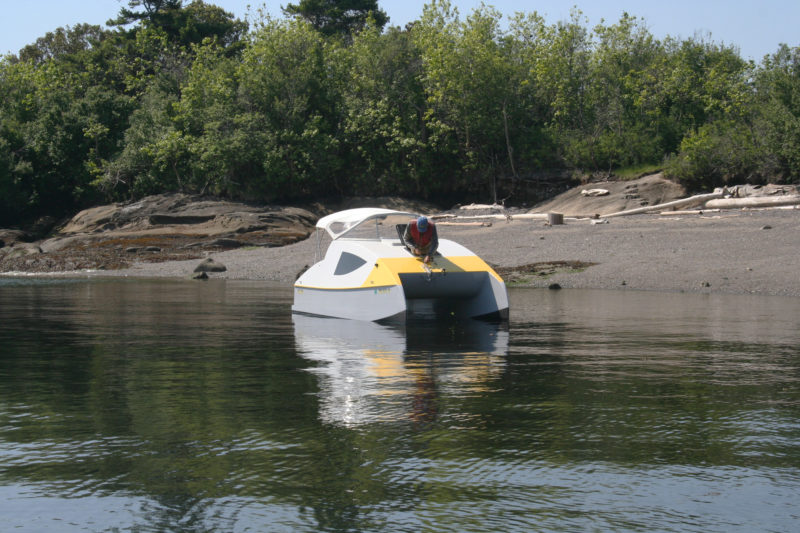
A hatch in the foredeck provides access to the bow for anchoring.
But as most of the weight was still aft with either engine arrangement, the EcoCat still squatted underway. One day, Mike Snook—experienced with super-large, high-speed Australian catamarans—suggested transom wedges and end plates as the cure. A 1″ x 4″ wedge was added like a trim tab to the each stern with skeg-like end plates added in line with the sides of the hull to contain the flow. The cat’s tracking was better, even with the previous centerline skegs removed. Trim was now level with clean entry and a very smooth exit. After a prop change, we had the same top speed with cruise speed reduced by 400 rpm for a noticeably quieter boat.
Outboards are designed to mount behind a transom with only the prop exposed below the hull. When centrally mounted on a catamaran, all of the lower unit below the bridge deck is exposed to bow wave convergence with lots of unwanted spray and, perhaps, added drag. We had tried several ideas on previous sailing catamaran but solved the problem on the EcoCat with a hull-mounted streamlined fairing that lets the motor think it’s on a transom.
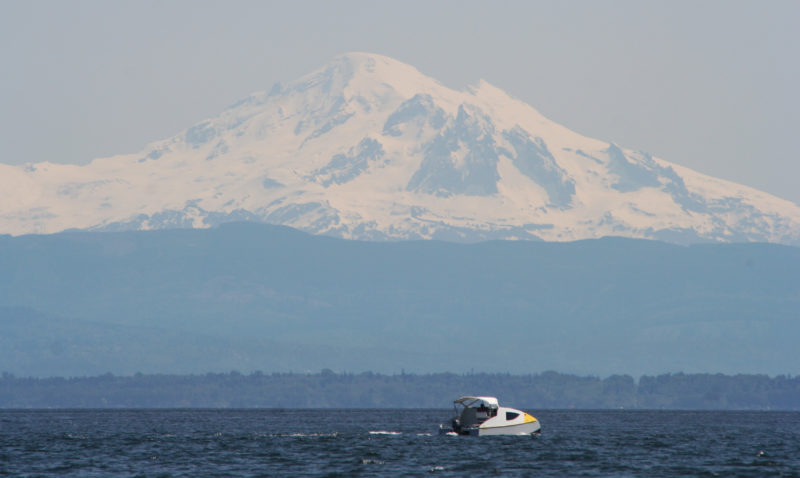
The EcoCat is quite at home in the broad reaches of Puget Sound that lie in the shadow of Mount Baker.
T he 10-knot cruise speed for our typical three-day, 50-mile round-trips lets us enjoy island life and not lose one day getting somewhere and another getting back. That’s the advantage of a gasser. It’s all about the destination, hanging out, enjoying a nice hike, being in a special place, especially for my wife Barbara and me. My solo trips continue to range farther and wider in all weather conditions.
Ron Mueller continues to design and build small boats and still rows most days in Bellingham, Washington. He started whitewater kayaking in the late ’60s, sailing in mid ’80s, and rowing in the ’90s when he founded Wayland Marine. Ron designed and built the Merry Wherry kits and was the Northwest dealer for Alden Ocean Shells and Echo Rowing until retiring in 2010.
Eco Cat Particulars
LOA/ 18′ (5.50m) Beam/8′ 2.4″ (2.50m) Draft/8.7″ (0.22m) Weight/606 lbs (275 kg) Capacity/1350 lbs (620 kg) Power/15–20 hp Construction/Approx. 400 hours
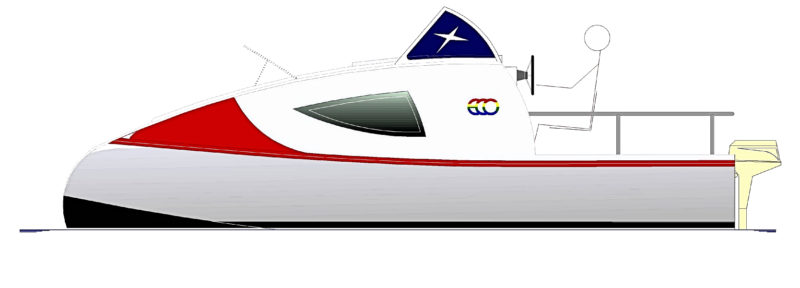
Plans for the EcoCat , with a digital manual and 16 pages of drawings as BMP or DFX files, come from Bernd Kohler at K-designs . A kit is also available.
Is there a boat you’d like to know more about? Have you built one that you think other Small Boats Monthly readers would enjoy? Please email us!
Share this article
Join The Conversation
We welcome your comments about this article. If you’d like to include a photo or a video with your comment, please email the file or link.
Comments (27)
I would really like to see a drawing of the modifications mentioned in the text. It sounds like the end product was significantly different from the original design.
Tim, JUST ENUF is built exactly to the furnished plans. Obvious additions were the cockpit sides and transom extensions when repowering. Plans are furnished as DXF files which may be printed out for “manual parts layout” or modified in CAD for CNC cutting. I hope this helps.
Form definitely follows function on your well built boat. The 20-hp outboard was a great idea and so were all of the modifications to get everything right.
Pete, thanks for your kind thoughts. Looking forward to seeing you on a Salish Sea beach soon!
I really enjoyed the article in the March issue of Small Boats Monthly about Ron Mueller’s JUST ENUF. Ron’s boat never fails to draw all kinds of attention when he’s pulled out on the beach or running with a group of other boats up here in the north Puget Sound, and looking carefully at his superlative build, one can easily see why. Though I am somewhat of a “traditionalist” at present, this boat looks like it could very well be in my build list sooner rather than later!
I love seeing articles from other Salish Sea folk. The photo with Mount Baker (Komo Kulshan is the name given to it long ago by the Lummi people) in the background is part of my life.
Vince, twins seem desirable but two 8.5-hp motors would use noticeably more fuel then a single 17-hp motor. Remote control would lend itself to a autopilot but complicated. Remember that each catamaran hull has a different turning radius in a turn. My previous sailing Jarcat had rudders set up with Ackerman steering (like a car). That’s probably not really needed for outboards. Just a thought.
I like the look of this craft. What would be the result if you went to twin 8.5-hp outboards which have the electric start and hardware to do twin rigs with remote control? Still the design appears to have a lot going for it. Enjoy it!
I’m just wondering if the deadrise at the end of each original hull was maintained on the 1′ extensions and if so, how the trim tabs were installed.
Mike, deadrise was just flowed out. The trim tabs are a solid wedge at the end of the hull about 4″ long and 1″ thick. An end plate (in line with hull side) contains the water flow for greater effect. The end plate is a skeg-like shape about 12″ by 4″ that provides better tracking than the original skegs on the keel centerline.
Most of the changes Ron made to the design—the hull extensions and other modifications—are incorporated in the plans. There are many ECO’s sailing world wide and it is my policy to update the plans to improve my designs. That applies not only for my ECO line of boats, but the others as well. By the way, I leveled out the deadrise of the extension to 0°.
Do the plans show the unique assembly method in case a builder wanted to have the parts CNC cut? Is the interior of the cabin also coated with epoxy?
Most parts were pre-coated and sanded (at least one side) prior to assembly. The plans are DXF files for display and would need to be, at least, nested for a CNC tool path prior to cutting. After importing to a CAD program, I added an inch in cabin height. Enlarged the windows, laid out cubby holes in the forward bulkhead and designed the cockpit sides with the same curvature used for the cabin. This is a real timesaver and provides great accuracy when having symmetrical parts and provides very smooth curves. The planking and cabin top is best (and easily) laid out directly on existing structure rather then CNC cutting. The construction was completed in just four months while attending to my normal business of selling rowing shells and making kits of same. Painting and canvas was “sent out” and fitting out was, at least, another month.
Thank you very much.
What is the contraption mounted on the forward hatch?
It’s a Nicro Solar Vent Fan. It runs mostly 24/7 as long as its self-contained battery is charged. There is enough leakage through the companionway hatch to keep the cabin dry during winter storage and summer nights when we’re sleeping aboard. We usually slide the main hatch open an inch or two at night (the dodger protects it from rain), and latch the foredeck vent hatch open rather the use the fan. Although fans may be quiet at first, they do develop a bit of noise after a few years.
I did some measuring. I wouldn’t have the ceiling height to flip the hulls over. Is there a real problem building them separately?
Walter, good news, the hulls are built separately. While the hulls were still upside down, I coated them with three coats of epoxy mixed with graphite powder. Those are the black surfaces in the video. This graphite/epoxy mix becomes “bottom paint” and is quite UV resistant, and does not need further painting.
The hulls are then rotated upright, aligned, and a 1/2″ plywood deck is glued to join both hulls. Everything else is built up from this deck—no need to turn the boat over! All of the painting is done from the waterline up. You could paint the bridge deck underside and inner hull sides while the boat is on a trailer.
What brand of windlass was used on JUST ENUF?
An 11-pound Bruce anchor with 10′ of chain is quite easy to haul with an arm-power winch while standing in the forward hatch.
I was looking at the thing below the hatch. Again, thank you.
Appromately how many sheets of plywood were CNC cut?
CNC cutting was used for all bulkheads, frames, cabin sides, cockpit sides, and interior trim— perhaps 10 sheets. The advantage of CNC is symmetrical parts, identical parts for both hulls and very smooth curves and cutout radius. When I had it (now retired six years), my ShopBot was the power tool of choice. Whatever I drew, I could cut and it would fit! Really miss it for my infrequent annual boat building project.
PS: The “thingy” below the hatch was a simple anchor bow roller.
Thank you very much for the information. I have found a local shop that has two ShopBot machines with the capacity of 66″ x 122″.
Greetings Ron, and congratulations on a well built project with very intelligent, yet simple modifications. My question is: Why were not twin 10-hp outboards considered when the twin 5s were insufficient instead of the single 20? Weight, perhaps? And could not the weight vs performance equation also be solved with transom trim tab re-engineering or re-positioning of gas tanks, etc? Love this boat. I am in Biscayne Bay, Forida. We get a chop, we get wind, squalls, hurricanes, etc. It’s a very open bay, but then we get to cruise to the Keys, the Everglades archipelagos, and a million places to explore and gunkhole. I have owned several sailboats here, all with retractable keels—a must if you’re on the bay and want to get off the beaten path of all the Olympic and Biscayne Bay Yacht Racing Association regattas.
Twin 5’s were specified as it was to be a EcoCat. The Honda 9.9 weighs on or about 100 pounds. The Honda rep insists that a single outboard (equivalent in HP to two twins) will always be more economical. I’d suggest today’s best choice would be a Suzuki 25, about the weight of the Yamaha 15/20. It’s said to be more economical and quieter. They sell a 30 (same block size) in the US but it only comes with power trim/tilt so the bracket would be dragging in the water. I hope this helps.
Comments are closed.
Stay On Course
More From This Issue
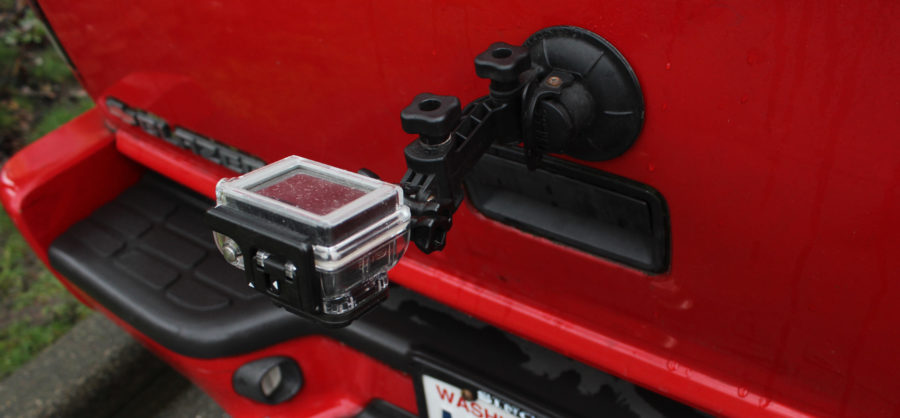
From The Editor
GoPro as a Trailer-hitch Cam
Harris Bucklin, a Small Boats Monthly subscriber, sent me this note after he had read our review of the iBall back-up camera in the January 2016 issue: “You gave me...
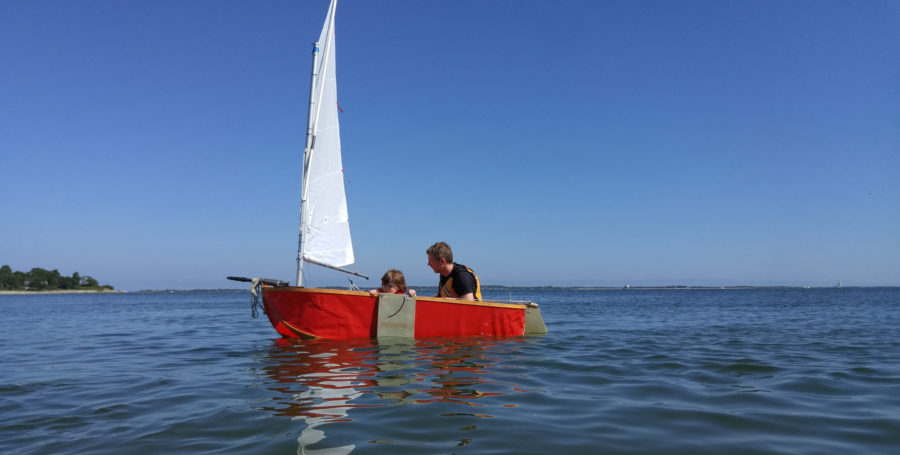
Zach, my sailing buddy/guru, had been shopping online for a sailboat for a co-worker when out of the blue, he sent me this instant messaging note: “Matt, I really think…
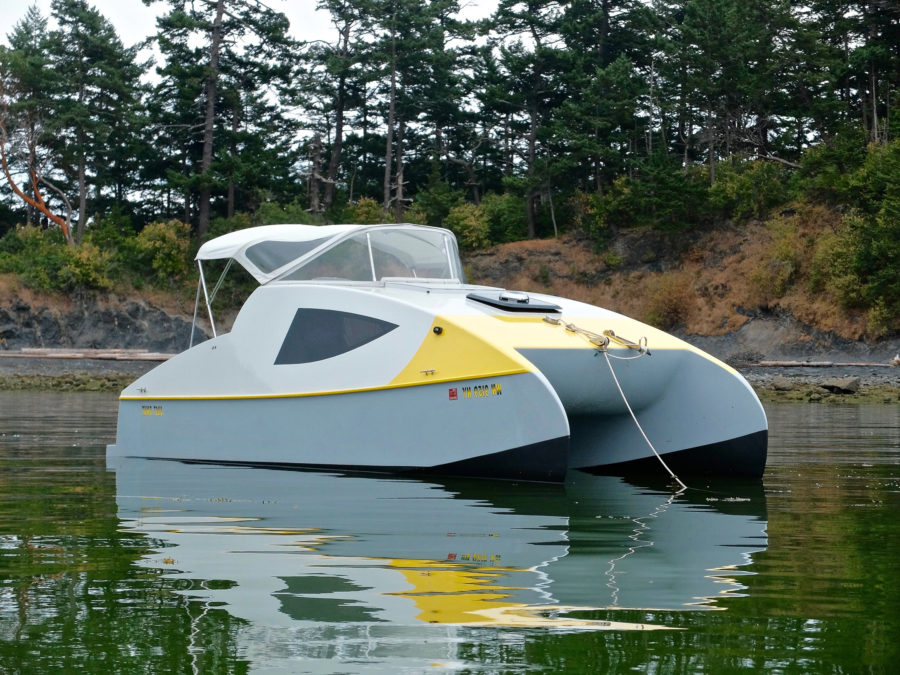
Was it time for another boat? In the 1980s, it was a 16′ sailing dinghy that awakened my wife Barbara and me to the beach-cruising pleasures of the San Juan…
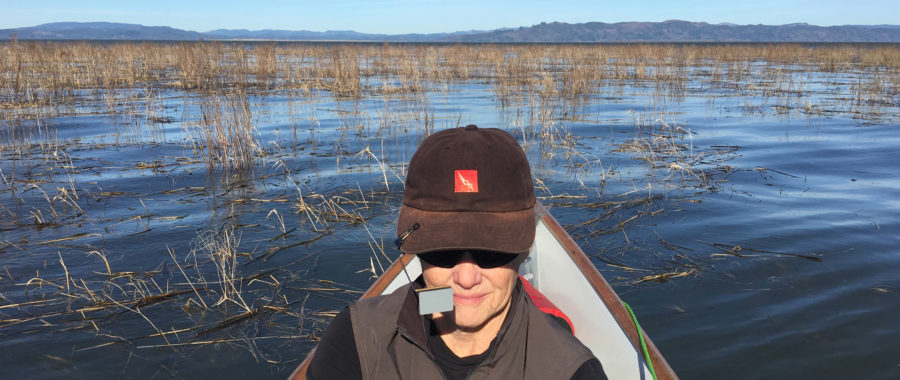
Taking Refuge
If there’s one thing I’ve learned about the rowing on the Lower Columbia River, it is to go with the flow. Winters there tend to be gray, windy, cold, and…
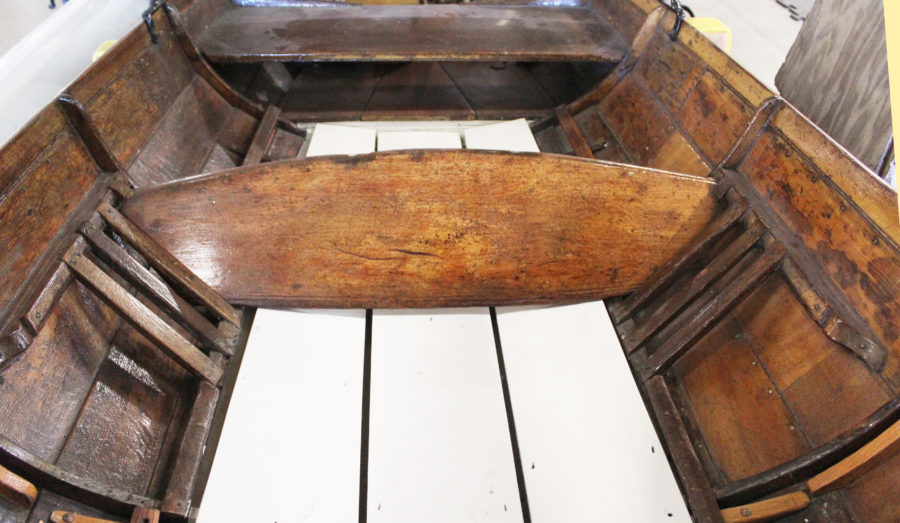
Foot Braces
To row with power you need to have your feet firmly braced against something solid enough to take your full weight. In some traditional boats you can get by with…
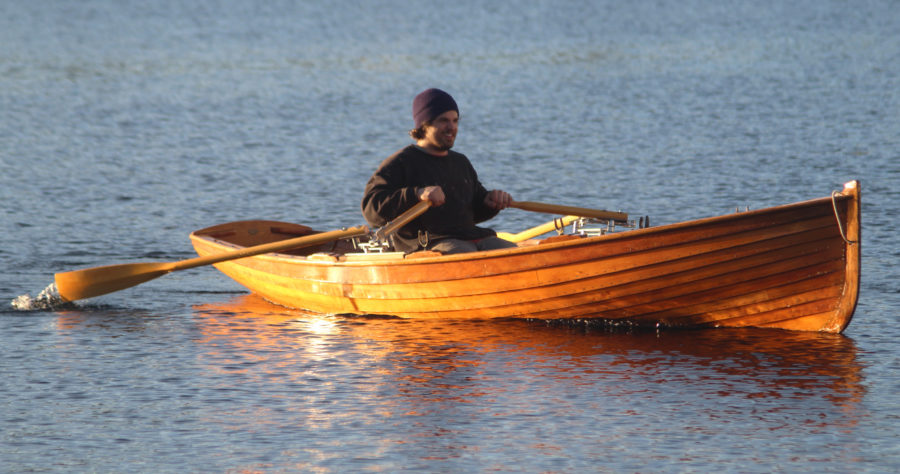
Whitehall Tender
Product Reviews
Oars with Elbows
Forward-facing rowing systems are nothing new. You’ll find many old patents for devices that use gears or pivots and connecting rods to get rowers to see where they’re going. The…
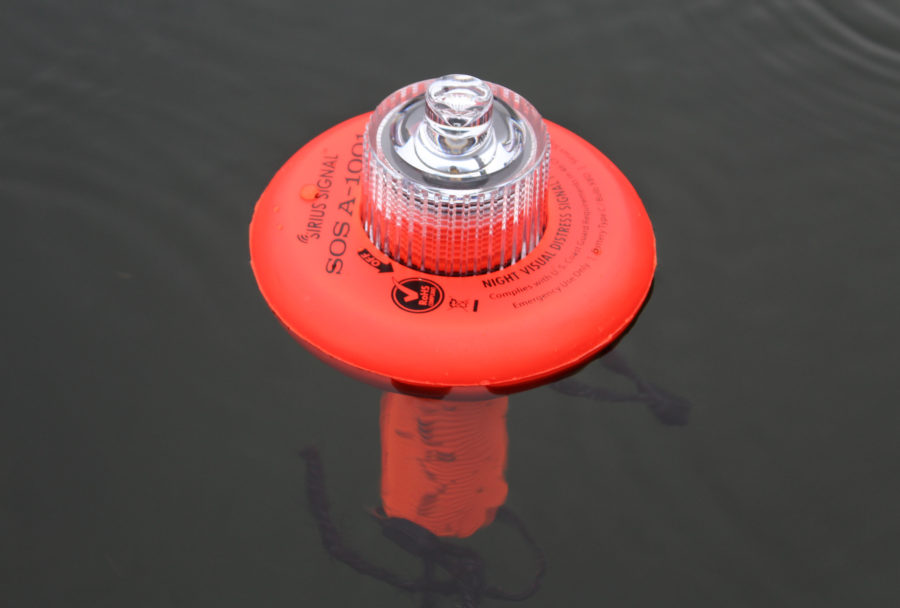
SOS Distress Light
The older I get, the more safety conscious I become. Every year I add to the emergency kit I bring on my small-boat adventures, but as yet I’ve never carried…
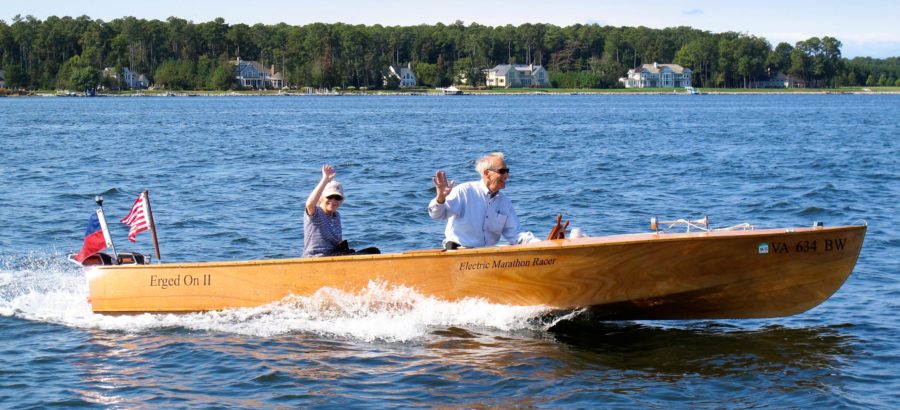
Reader Built Boats
ERGED ON II
Ned Farinholt of Winchester, Virginia, had a career as an electronics engineer, so it’s no surprise that he took an interest in electric boats. They had fallen out of favor…
More Boat Profile
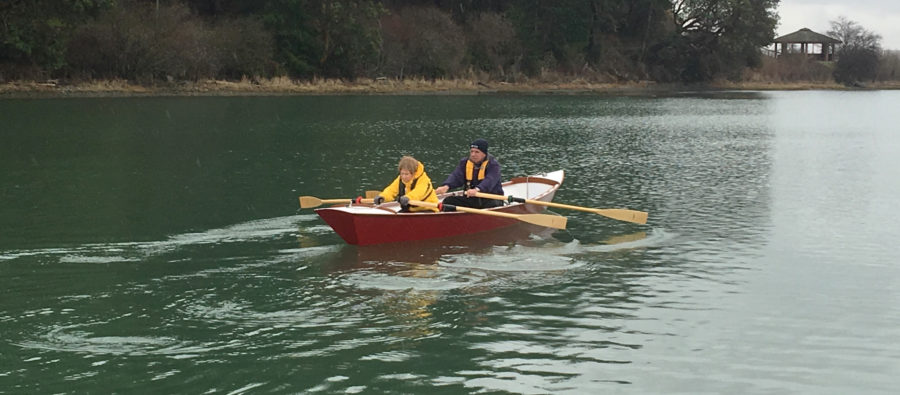
Fairhaven Flyer
The Fairhaven Flyer is a sturdily constructed, easily rowed light dory. It is also simple to build since Sam Devlin, a master of stitch-and-glue boat design and building, refined the…
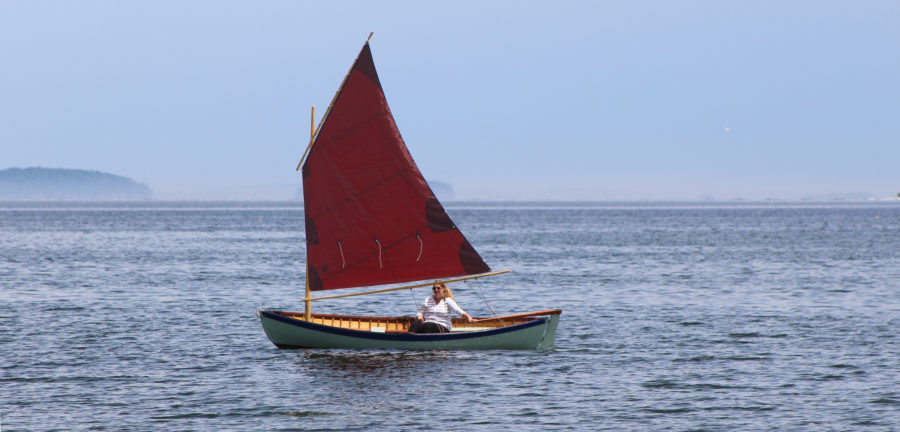
Maine Coast Peapod
The peapod might be one of the most easily identifiable, traditional small craft found on the coast of Maine today. Peapods were used as nearshore lobstering boats; a lobsterman could…
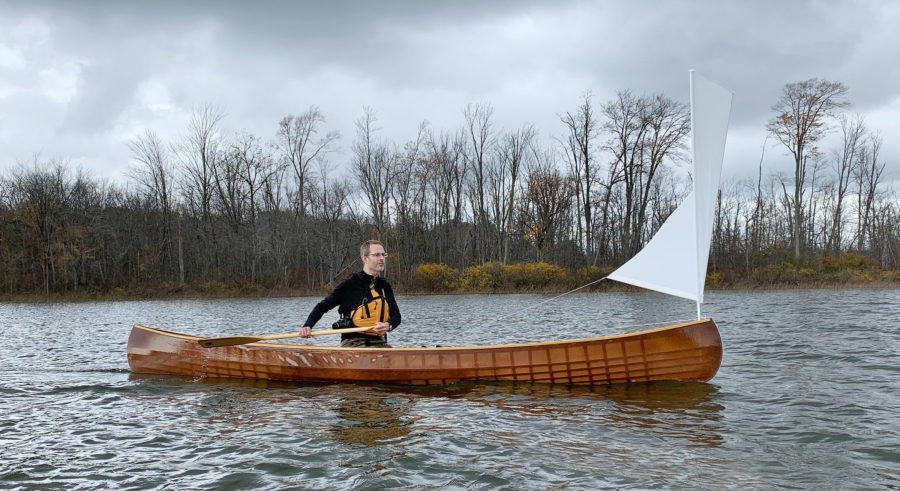
The 66 Canoe design is not simply a set of plans for a handful of different static models of various sizes, but rather a video class to guide the builder…

The boat is very easy to row solo. I used a temporary foot brace prior to making my floorboards last year and found it considerably helped applying power. The skeg…
Subscribe Today!
Become a subscriber today and you’ll recieve a new issue every month plus unlimited access to our full archive of backlogged issues.
Already a subscriber? Sign In
Subscribe For Full Access
Flipbooks are available to paid subscribers only. Subscribe now or log in for access.
- 0 No item in your cart
- SUBSCRIPTION
- Classified Ads
- Technical Specifications
- Destinations
- Address book

- All the magazines
2023 Power Buyer’s Guide - Under 30 feet

Article published on 28/10/2022
By Emmanuel van Deth
published in n°SP19 dec. / jan.
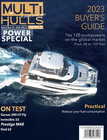
In the under-30-foot sector, monohull hulls are still resisting. But compact multipowers, catamarans for the most part, are now a feature of many manufacturers’ catalogs in the United States, Australia and even Brazil. The catamaran formula of course offers increased stability, both when under way and at anchor. These multihulls are most often propelled by twin outboards. Accessible and easy to handle, these units allow day trips, fishing and, why not, from 16 or 17 feet and above, a bit of coastal cruising. Most of the models are content with a moderate beam, thus limiting marina fees.
Create a notification for "Buyer's guide"
We will keep you posted on new articles on this subject.
POWERCAT 525
Small but seamanlike.
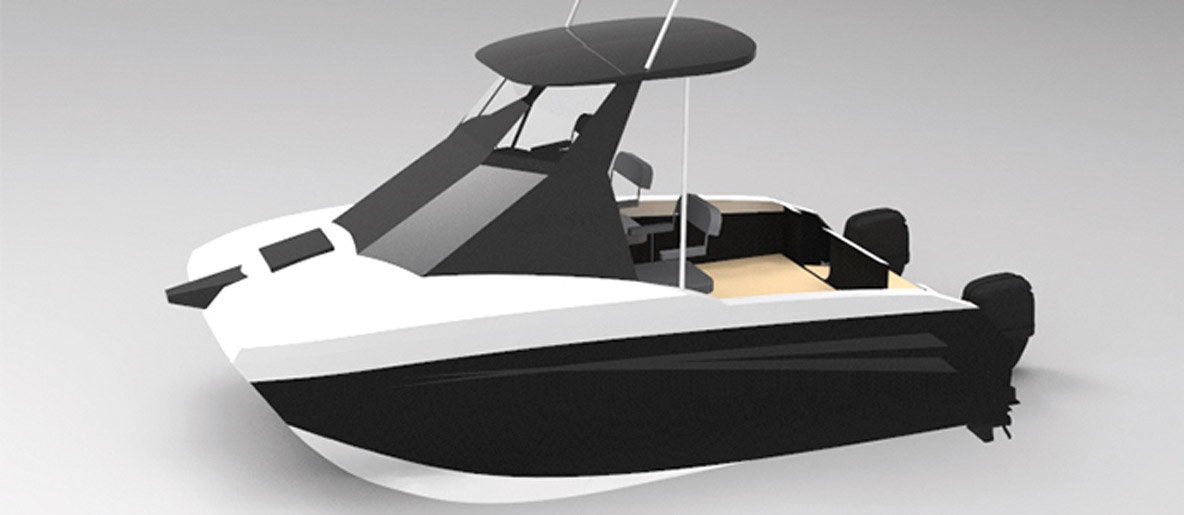
The test videos of this pocket powercat leave no doubt about its seakeeping qualities: the machine jumps from wave to wave and always seems to be at ease, whatever the sea state. For all that, the designers are not looking for power overkill - 2 x 30 to 2 x 120 HP. The maximum speed quoted by the builder, subject to the chosen drivetrain, ranges from 16 to 30 knots. The deck layout comes in several versions - open, central passage, cabin - and can accommodate 7 people.
Manufacturer: Powercat Length: 17’3” (5.25 m) Beam: 7’5” (2.25m) Draft: 12” (0.30 m) Light displacement: 1,300 lbs (590 kg) Engines: 2 x 30 to 120 HP CE Category: C
CASTLEROCK CARBON CAT
The temptation of a rib – and of extra power.
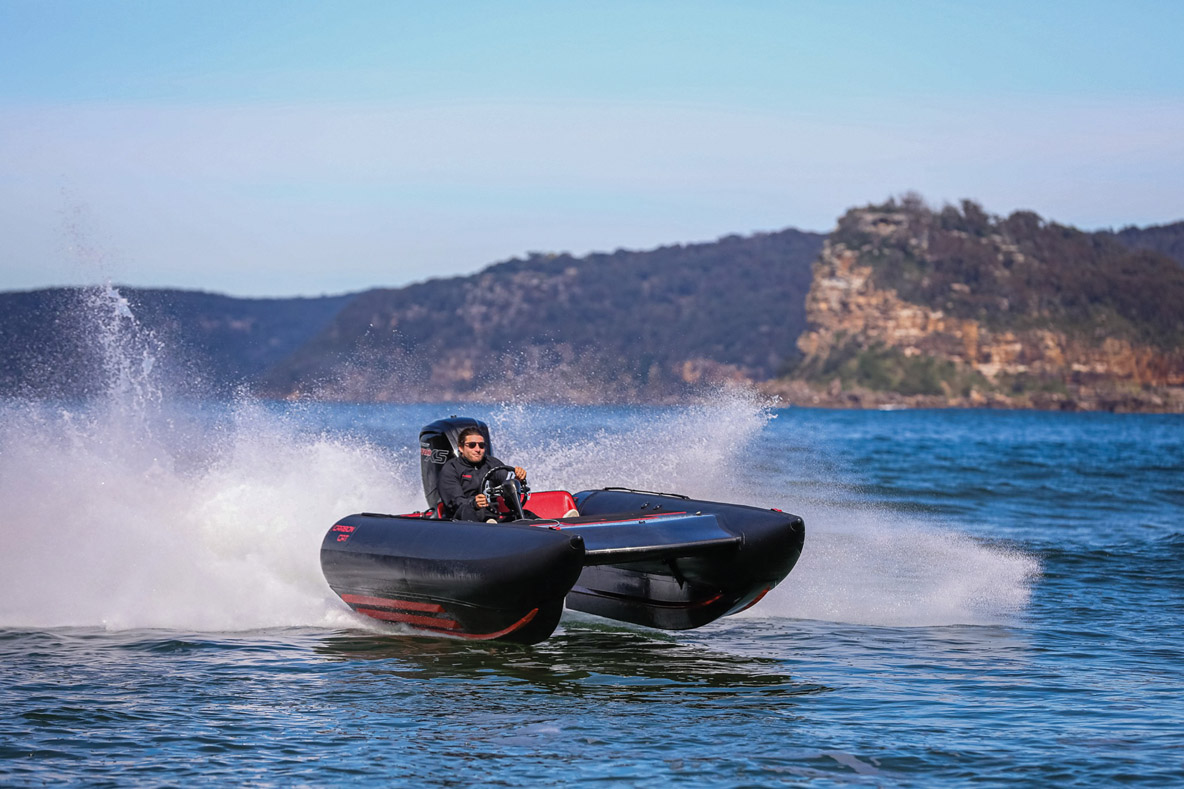
Designed in Australia and built in New Zealand, the Castlerock Carbon Cat was designed by Dan Oatley, a member of an Australian family well known in the boating world. This catamaran RIB is built from an aluminum chassis and a carbon deck. Trim is controlled by a pair of trim tabs. Although this boat’s short length confines it to relatively sheltered waters, the top speed recorded with a modest 115 HP is still 60 knots… We can only imagine that the Formula 1 version, with double the engine power, is reserved for very experienced skippers. The builder has already reinforced the structure of hull #3 so that it can take a more powerful engine.
Builder: Carbon Cat Length: 17’5” (5.30 m) Beam: 7’10” (2.40 m) Displacement: 2,200 lbs (1,000 kg) Capacity: 6 people Fuel: 21 US gal (80 l) Engines: 115/250 HP outboard Max speed: 60 knots with 115 HP outboard
CHEETAH 690/720 ADVENTURE
The all-purpose boat for everyone.
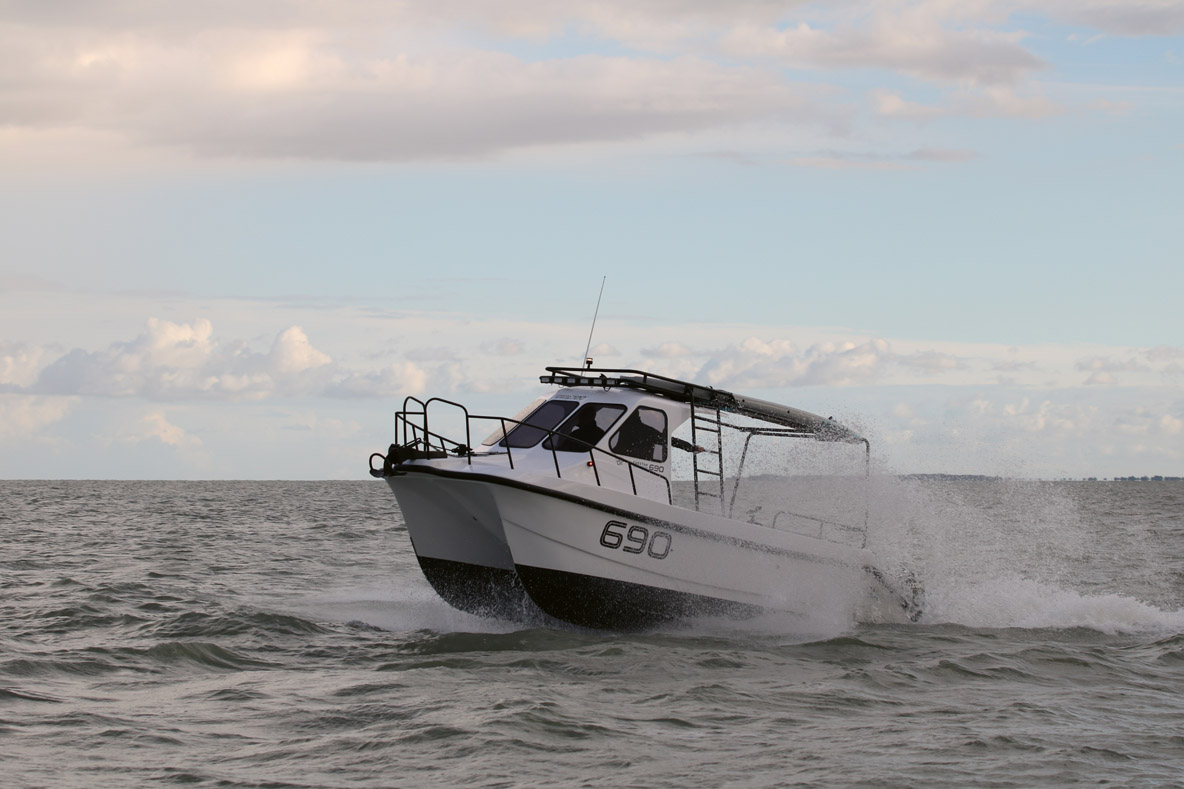
Discover our exclusive video
Cheetah is well known in the UK: the brand has produced nearly 400 motor catamarans over the past 30 years. Designed from the start to take on the rollers of the exposed beaches on the Isle of Wight, the first model initiated a complete range of powercats perfectly adapted to the demanding constraints of various services – firefighters, response operations, diving etc. The Adventure model, developed from the proven hull of the 720, features a bulwark opening to starboard, which provides a 10 by 12½-foot (3 x 3.8 m) deck when at anchor. A metal frame, not unlike a roof-rack you might find on a 4x4 that also goes on adventures, can be fitted to carry equipment (bikes, paddleboards, etc). A tent is also available so you can spend a night or two on board. We’ll be testing one soon in Multihulls World.
Builder: Cheetah Marine Catamarans Length: 22’8” or 23’7” (6.9 m or 7.2m) Beam: 8’4” (2.55 m) Draft: 12” (0.30 m) Engines: 2 x 80/100 HP outboards Fuel: 2 x 26 US gal (2 x 100 l) Price: € 129,167 ex-tax with 2 x 80 HP outboards
Compact but with no fear of anything!
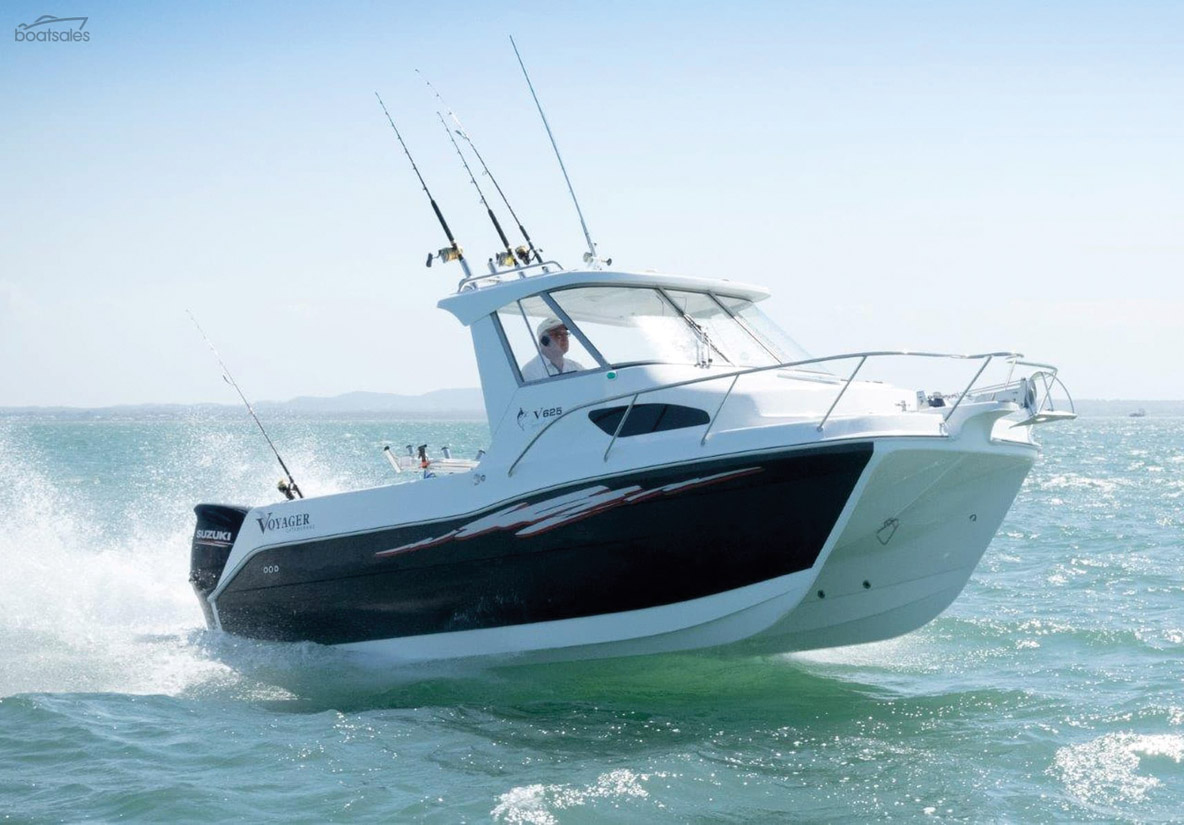
Despite its limited length, this Australian ...
Subscribe to Multihulls World and get exclusive benefits.
Tags :
- Power multihulls ,
- Power catamaran ,
- power trimaran ,
- 2023 power buyer's guide
Did you like this article ?
Share this article
Most-read articles in the same category.

2024 Multihull of the Year Election - You’ll soon be able to vote for your favorite multihulls!
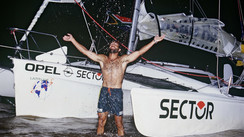
Who's Who - Mike Horn: “I fell in love with multihulls”
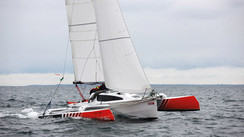
2023 Sail Buyer's Guide - Multihulls from 30 to 40 feet
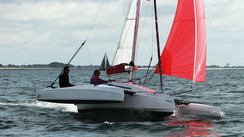
2023 Sail Buyer's Guide - Multihulls from 20 to 30 feet
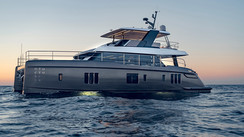
2023 Power Buyer’s Guide - 60 to 70 feet
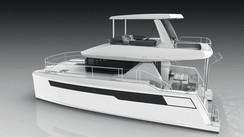
2023 Power Buyer’s Guide - 40 to 50 feet
What readers think.
Post a comment
No comments to show.
Follow us on
Vous avez ajouté " " à vos favoris., vous avez supprimé " " de vos favoris., in order to add this article to your favorites, please sign in..

9 Best Power Catamarans For Rough Seas and Coastal!
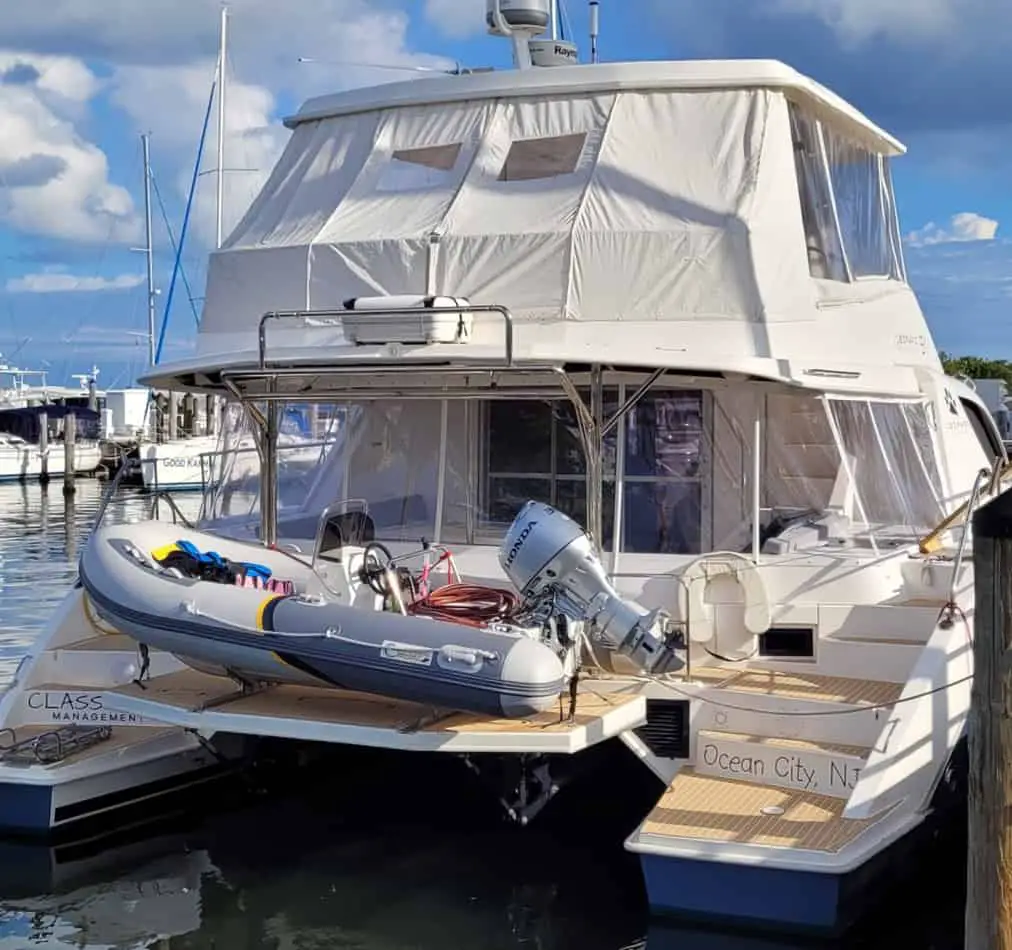
As an Amazon Associate, we earn from qualifying purchases. We may also earn commissions if you purchase products from other retailers after clicking on a link from our site.
Power catamarans are gaining popularity in the cruising world thanks to their enhanced stability and ease of operation. They’re ideal for coastal cruising but can also be used for ocean crossing thanks to their stability and speed.
Here are some of the best power catamarans on the market:
- Fountaine Pajot MY6
- Nautitech 47 Power
- Horizon PC74
- Lagoon Seventy 8
- ArrowCat 420
- Sunreef Supreme 68
In this article, I’ll review some of the best power catamarans out there. I’ll also go over the main features of different power cats and if they can handle rough weather.
But before we dive in, let’s get a better understanding of what power cats are.
Table of Contents
What Is a Power Cat?
A power catamaran (power cat) is a motor-powered boat that, unlike traditional boats, has two hulls connected by a bridge deck. These vessels are more stable than monohulls because of their wide base.
Power cats also don’t have a leaded keel to weigh them down, so they’re pretty lightweight and fast. The lack of a keel also means that power cats are more suitable for shallow waters.
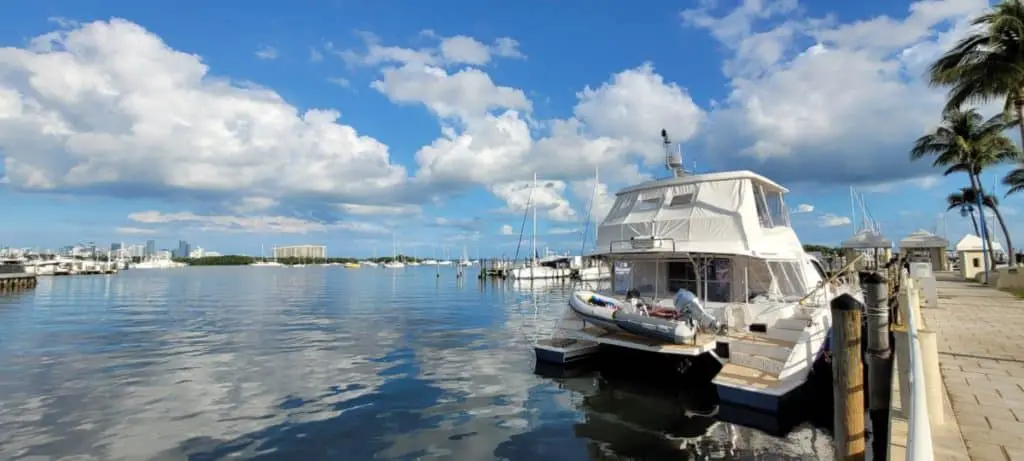
They feature large engines designed to handle their bigger bodies and weights, and serve different purposes, like fishing, cruising, or crossing rough seas. In addition, each hull has a separate engine which makes them more maneuverable, especially at turns and tight spaces.
Power catamarans don’t have sails or masts and get all of their power from the combustion engine (or electric motor), unlike their sailing cousins. In addition, these vehicles are much easier to steer because of their increased stability.
Power catamarans have more interior and exterior space thanks to their multihull design, making them perfect for cruising and liveaboard . They also have ample space for storing everything you need on a cruise without worrying about weighing it down. Catamarans offer increased privacy as well because each hull houses one sleeping area, separated by the living area between them.
Are Power Cats Good in Rough Water?
Power catamarans are good in rough waters particularly because of their multi-hull design. Their wide base makes them stable, and their high speed allows for outrunning bad weather.
Power cats that feature a high bridge clearance, will handle rough waters effortlessly. With the added height, you won’t experience pounding and slamming even in heavy waves, allowing the crew to easily control the vessel in challenging situations.
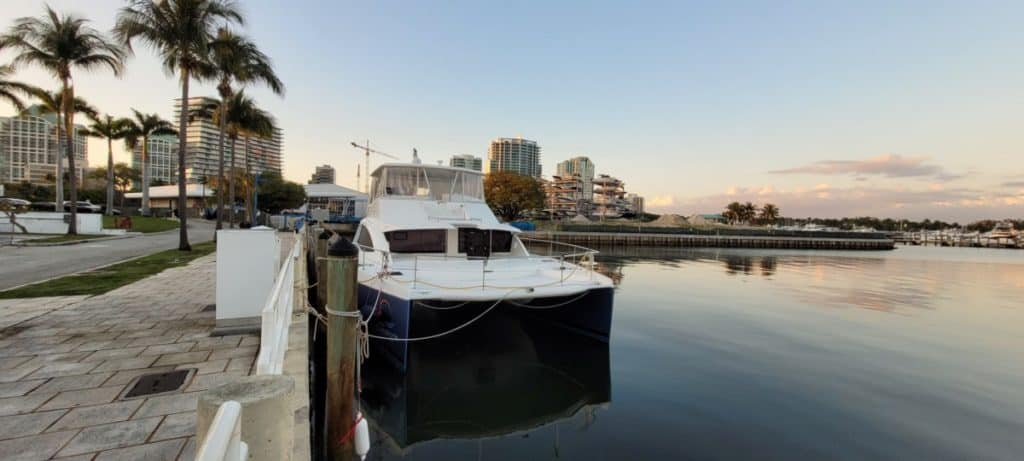
These boats are also faster than their sailing counterparts, which means they can get you out of rough waters quickly.
In addition, since catamarans are large and tall, maneuvering is easier because you have a better view of the surroundings. Additionally, you can steer from the interior cockpit (on certain models), making it easier to control the vessel in bad weather.
Finally, although a power cat doesn’t have a keel to help it right itself in case of capsizing, it will still float easily because of its positive buoyancy.
Are Power Catamarans More Efficient?
Power catamarans are more fuel-efficient than monohulls because they don’t have leaded keels. While keels are designed to offer stability by weighing down the vessel, they increase the wetted surface and thereby add drag.
Due to the catamarans’ narrow bow entry, there’s lower resistance, leading to smoother acceleration and greater fuel economy in catamarans. In addition, power cats show fewer spikes in fuel consumption in a single power band, especially because of their smooth acceleration and fuel consumption.
The figures reported by cat owners or manufacturers show that power cats have the best power-consumption-to-speed ratios.
That being said, you can improve fuel efficiency by maintaining lower speeds; studies have shown that speed can be the most important factor in fuel efficiency, regardless of the number of engines or hull types.
Now that you have a better understanding of power catamarans, let’s take a look at the ten best models on the market.
1. Leopard 53
This 53ft (16.19m) power cat is the fourth generation of the widely popular Leopard catamarans, and brings with it all the great features from her predecessor, the 51.
Although the 51 was the company’s best-selling cat, they added these features to the 53 along with new ones to repeat its success. For example, they have built an enormous saloon, flybridge, and galley by removing the foredeck cockpit in the 51 PC, making it 30 percent larger than the previous model.
This model comes with three or four stateroom layouts, with the 3-stateroom version featuring an owner’s stateroom, two sinks, a loveseat, and lots of storage space.
With two Yanmar 370 hp engines, a maximum speed of 22 knots, and a cruising speed of 17.5, you can enjoy a magnificent ride, whether it’s long-distance cruising or a fun night out with friends.
2. Fountaine Pajot MY6
This luxury power cat is 44ft (13.40m) long, making it super spacious and suitable for families and big parties. With its spacious flybridge, sunbathing lounge, and enormous galley, it’s nothing short of a second home on the water.
You can steer the cat from the saloon or the 21sqm (68 sq ft) flybridge which features a sunbathing lounge, a pool, and a galley.
This motor yacht continues to delight with its luxurious combination of privacy and pleasure, with views of the sea in almost every interior space. With three cabins, two bathrooms, six cabin beds, ample storage, and a kitchen that opens into the cockpit, you can enjoy practicality and luxury in one place.
The MY6 is exceptionally seaworthy and stable thanks to its wave-piercing hulls and Volvo IPS engines.
Like all power cats, it has straightforward steering, enabling you to control this beast even in the roughest circumstances.
3. Nautitech 47 Power
Powered by dual Volvo Penta D4 engines, this model can output 225-300hp, reaching a maximum of 22 knots and a cruising speed of 18-20 knots . This 46′ 8″ (14.23m) long power cat comes in three or four cabin versions, depending on the customer’s preference.
No matter which layout you choose, you’ll get a spacious, luxurious, and comfortable catamaran with panoramic views from the cabin. The sleek, streamlined exterior design ensures elegant sailing and seaworthiness.
It’s easy for passengers to navigate the deck thanks to its seamless design that connects the saloon to the cockpit and the rear deck. The stern features a big swimming platform that can also accommodate a tender. The cockpit is usable in different weather conditions thanks to the clear covers wrapping the whole area.
This efficient catamaran promises long cruising for big families and groups with two 300L water tanks and a pair of 645L fuel tanks.
4. Horizon PC74
The Horizon PC 74 is another luxury power cat that can give you the comfort of your home on water. This 73′ 9” (22.48m) long power cat with a 2,000gal (7570L) fuel tank is an enormous vessel that can accommodate more than 14 people.
The enormous hardtop on the three-piece windshield, the teak dining table, the U-shaped bar, the sun pad, and the swing-out stools all guarantee that you’ll have the luxury cruising experience of a lifetime.
This vast and wide catamaran allows you to access the aft deck from the flybridge via a curving staircase. The vast aft deck has a ten-person dining table, a wet bar, and storage space. You can separate the interior and exterior spaces through sliding glass doors and make the space appear bigger by opening them.
Reaching a top speed of 23 knots and a cruising speed of 19 knots, this enormous catamaran was built for efficiency and practicality.
5. Lagoon Seventy 8
This 78’1″ (23.80m) power cat with two 494 HP engines and a 2246gal (8500L) fuel capacity is one of the largest power cats on the market, offering both comfort and reliability. The enormous flybridge can feature a jacuzzi, a sunbathing area, a large foldable dining table, and a hardtop with a moveable roof. However, you can customize the flybridge based on your preferences.
The designers have compromised nothing in terms of elegance and high-quality materials with top-of-the-line finishes and interior paneling to create the kind of luxury you want.
The saloon is huge, well-ventilated, and separated from the exterior by glass doors and panoramic windows.
But what sets Lagoon Seventy 8 apart from other power cats, in addition to its enormous size, is the wide choice of layouts. You can choose between five different versions, all offering the same amount of storage space, living and sleeping area, and privacy.
Additionally, some versions are fully customizable, allowing you to pick every detail to your liking.
6. ArrowCat 420
This 41′ (12.73m) long express cruiser is a semi-custom catamaran with two-stateroom and three-stateroom layouts. The ArrowCat 420 is designed and built with comfort and strength in mind, and capable of handling rough waters safely.
The two Suzuki 350 hp engines give this model a maximum speed of 40 knots and a cruising speed of 20 knots.
The streamlined design and the angled hulls ensure the vessel cuts through the waves effortlessly, making it easy to maneuver.
The fully-equipped head features an electric toilet, a shower, sink, and mirrors, coupled with a dining table, floor storage locker, and teak-finished floors. This cat is built to combine luxury and comfort for both onshore and offshore cruising.
7. Bali 4.3
This 43′ (13.1m) power cat is made for ocean crossing in mind. With five different layouts featuring different combinations of cabins and heads, the company ensures you’ll get the kind of setup you want. Regardless of the layout, this cat offers a spacious master suite with a large double bed and other private sleeping quarters.
You can quickly add to the overall space by removing the adjustable glass doors to merge the cockpit with the saloon.
A feature that sets the 4.1 apart from its predecessor is the fixed aft deck between the hulls, which provides a passageway and eliminates the need to go from one hull to the other without entering the cockpit.
8. Sunreef Supreme 68
According to its designers, this model was built with a radical concept in mind while staying true to the company’s promise of building the most comfortable and spacious power cats in the world.
One of the greatest features of the Supreme 68 is its aft garage that houses a 5m (16 ft) tender and two jet skis in addition to other water toys.
You can also transform the aft to a large platform for water sports by lowering the garage door.
The four-stateroom layout features ample storage, ensuite guest cabins, queen-sized beds, and TVs to create a memorable stay. The white and beige furniture with chrome details and floor-to-ceiling glazing create a soothing atmosphere that blends with the practicality of the well-equipped galley.
However, if you’re looking for something different, you can opt for a customized model from three different layouts.
9. Hudson 48
The sleek, diamond-cut design of this 46.46’ (14.16m) long power cat is usually the first thing to catch your eye.
It’s a light displacement cat that ensures fast cruising with a top speed of 24 knots and cruising speed of 8 knots thanks to the two 370hp Yanmar V8 engines.
The three-cabin layout features a master stateroom with a spacious and well-ventilated design made possible via the three overhead windows and opening deck hatches.
The saloon’s enormous helm station allows for comfortable and safe accommodation, making it great for rough waters and bad weather conditions.
This model also offers a few entertainment options with its large TV systems and mood lighting. The storage areas and the full-sized walk-in wardrobe give this model a comfortable, homely setting.
Here are Some of My Favorite Catamaran Cruising Resources
Thank you for reading this article. I hope you found it helpful as you hopefully start your sailing adventures. Here are some resources that I use as a sailor that I hope you’ll also find helpful. These are affiliate links, so if you do decide to use any of them, I’ll earn a commission. But in all honesty, these are the exact things that I use and recommend to everyone, even my own family. Sailboats: If you’re looking for the best boat to suit your needs, I would recommend a catamaran. If you’re interested, I can show you the differences between catamarans and other types of sailboats .
Books: For getting started, I really like Cruising catamarans made easy . It is actually a textbook from the American sailing association; it is used to get a cruising catamaran certification. There are some other great books, and I have compiled a list of books about cruising catamarans that you will find useful.
Communication: Being out on adventures, whether it be sailing or climbing mountains, good communications are essential to being safe. I recommend two things Google fi (incredibly simple cellular data all over the world) and Garmin inreach mini (for text and voice in remote areas without cell coverage)
Sailing courses: Online sailing courses are great for beginners starting out their sailing career; it’s an efficient way of learning the basics of navigation, throttle controls, and maritime safety. I suggest starting with two free courses from NauticEd .
To see all my most up-to-date recommendations, check out this resource that I made for you!
Owner of CatamaranFreedom.com. A minimalist that has lived in a caravan in Sweden, 35ft Monohull in the Bahamas, and right now in his self-built Van. He just started the next adventure, to circumnavigate the world on a Catamaran!
Leave a Reply Cancel reply
Your email address will not be published. Required fields are marked *
Save my name and email in this browser for the next time I comment.
Recent Posts
Must-Have Boat Gear for Catamaran Sailors!
Sailing is probably the most gear-intensive activity I've ever done; there are so many decisions to be made about what gear to buy now, for tomorrow, and what to definitely never buy. The gear on...
6 Best Trailerable Trimarans For Bluewater and Coastal Sailing
Having a boat costs a lot of money, even when you are not using it, marina fees, etc. And once it is in the water most sailors never go very far from their "home marina" and sailing will be somewhat...
- THE PRINCESS PASSPORT
- Email Newsletter
- Yacht Walkthroughs
- Destinations
- Electronics
- Best Marine Electronics & Technology
- Boating Safety
14 Great Pocket Cruisers in 2023
- By Victor Tan
- Updated: July 20, 2023
Pocket cruisers and mini yachts are generally vessels under 50 feet in length overall, and can include express cruiser designs, flybridge yachts as well as either monohull or catamaran hull forms. They are cruising boats easily handled by a small, or even shorthanded, crew. Pocket cruisers generally have wave-taming hull designs and have the ability to take on sporty seas, offer comfortable accommodations belowdecks with one or two staterooms for extended voyages, “homelike amenities,” and the ability to cruise as slowly or as quickly as an owner desires with inboard- and outboard-power options. These pocket-cruising boats have the range for longer voyages , can pull up in skinny water at the sandbar thanks to shallow drafts, and head over the horizon where cruising adventure awaits. Pocket cruisers are true multitasking yachts. When it comes to family and couples cruising, it’s hard to beat a well-built and well-equipped and pocket cruiser.
Best Cruising Boats Under 50-Feet
The following 14 pocket cruisers and mini yachts are all vessels we’ve seen, been aboard, and tested. They are listed in no particular order.
- Hood 35 LM: high-tech, family-friendly pocket cruiser
- Galeon Yachts 375 GTO: mid-size boat with plenty of below-deck space
- Aquila 42: sleek power catamaran ready to entertain
- Azimut Verve 42 : small, yet mighty yacht ready for open water
- Hinckley Yachts 35: luxury picnic cruiser with range
- Beneteau Gran Turismo 45: sleek cruising yacht with all the amenities
- Solaris Power 48 Open: eye-catching power yacht with 360-degree views
- Cruisers Yachts 42 GLS: luxury cruiser yacht with powerful outboard options
- Back Cove 34O: modern outboard power combined with classic Downeast styling
- Picnic Boat 40: speedy and fuel-efficient vessel with great looks
- Aquila 36: comfortably seat up to 20 guests for fun on the salt
- Boston Whaler 350 Realm: multitasker built for fishing and entertaining
- MJM 35z: sporty, aesthetically pleasing, cruising-conscious features and elegant lines
- Greenline 39: sturdy-looking lines and environmentally-friendly power
When Android co-founder, Rich Miner, wanted a new family-friendly pocket cruiser , he turned to a custom-penned C.W. Hood design and a Lyman-Morse-built 35-footer, which has a timeless Down East profile matched to seriously modern technology under the hood.
This yacht looks like a traditional, cold-molded Down East dayboat, but actually, it has everything, from Hamilton HJX Series water-jet drives to a planned Sea Machines autonomous command-and-control system . Top speed: 40-plus knots.
Quick Specifications
Galeon yachts 375 gto.
Even the remnants of Hurricane Ian, couldn’t dissuade the Galeon Yacht 375 GTO from its cruising mission. The small yacht’s wave-splitting hull form is paired to torque-filled 600 hp Mercury Verado outboards , giving this fun-in-the-sun boat a 47-knot top hop.
The 375 GTO is a speedster, to be sure, but it’s also so much more. Just about every aspect of the main deck seating is transformable and multifunction, from the aft seating to the alfresco dining abaft the helm, and beyond. It also has a family-size and eminently cruise-worthy belowdecks space for four guests, all while providing a foredeck entertaining lounge too.
The Galeon Yachts 375 GTO ticks all the boxes for an easy-to-handle and sporty cruiser.
Aquila 42 Yacht Power Catamaran
Following the success of its 44-, 54- and 70-foot power catamaran models, Aquila has launched the stable-as-a-table, owner-operator-ready Aquila 42 Yacht Power Catamaran .
The Aquila 42 is the entry point into the builder’s yacht line and is noteworthy for its ability to accommodate anywhere from a two- to four-stateroom layout, depending on the owner’s cruising requirements. There are alfresco spaces to manage the sunset cruise with friends and family, including a foredeck lounge area that can be accessed via centerline steps from the flybridge. The Aquila 42 is available with several Volvo Penta diesel-engine options .
Azimut Verve 42
Want to cruise from Florida to Bimini in about an hour? The Azimut Yachts Verve 42 can do that thanks, in part, to triple 450 hp Mercury Racing outboards and a hull designed to dice-and-slice a seaway. Top hop: 45 knots. The Verve 42 also has style for miles with a fine entry, raked hardtop, and a razorlike sheerline accented by sweeping hull glass from bow to stern. It’s striking.
With accommodation for a family of four, the Verve 42 is also solid under the hull tokeep everyone safe on those passages. The Verve 42’s hull is built of fiberglass and uses vinylester resins for blister protection. The yacht’s deck and hardtop are comprised of carbon fiber for strength without added weight. This all means that the Azimut Verve 42 is built to CE Classification Type A , making it suitable for sea voyages where winds can exceed 45 mph and seas to 13 feet.
Hinckley Yachts 35
The Hinckley Yachts 35 takes everything that yachtsmen like about this pedigreed-brand’s classic profile and infuses today’s modern outboard power to create 40 knots of sheer fun wrapped in sheer luxury.
This 35-foot Hinckley is built on a Michael-Peters-penned hull form with a fine entry, wider-than-average chines and a moderate deadrise. While the boat is built to sprint when desired, it’s also a relatively economical cruiser. For instance, a comfortable 24-knot cruise the Hinckley Yachts 35 has a 276-nautical-mile range.
It also has a tech-build thanks to vacuum-infused carbon-fiber composites and epoxy resin. An integrated interior structure is infused with the hull adding rigidity. The hull is then post-cured in an 80-foot oven, further strengthening the structure.
Beneteau Gran Turismo 45
The Beneteau Gran Turismo is the flagship of the builder’s four-model GT series, which also includes 32-, 36- and 41-foot models.
The Gran Turismo 45 ’s cruise-centric layout includes two staterooms and two heads belowdecks, as well as a galley down. There is also a dinette for meals and a settee for rainy-day lounging. Entertaining guests and enjoying the sun is the primary mission of the main deck.
Solaris Power 48 Open
The Solaris Power 48 Open was the first powerboat from this longtime builder known for its sailing yachts, ranging from 40 to 110 feet length overall. The Solaris Power 48 Open is notable for its wave-slicing plumb-bow design, high freeboard forward and 32-knot-plus speed. Power is twin 480 hp Volvo Penta IPS650 diesels.
The high freeboard keeps the deck dry and help creates sizable volume belowdecks with an average 6-foot-6-inch headroom. This enables real estate for either one or two staterooms. With the single-stateroom setup, there is a forepeak master stateroom while an L-shaped settee converts to sleeping accommodations for family or occasional guests. Interior wood options are oak or walnut.
Cruisers Yachts 42 GLS
Outboard-power cruising aficionados will appreciate the triple-engine options for the Cruisers Yachts 42 GLS . The 42 GLS we got aboard had the triple 400 hp Mercury Verados , which produced a top hop of 45 knots, but triple 450 hp Verados are available. Triple 350 hp Mercury Verados are the standard engine option. No matter the power arrangement, this express cruiser can easily be used for wakeboarding and tube towing. The 42 GLS is designed to handle the rough stuff too, with a fine entry and 21-degree transom deadrise.
For cruising enthusiasts, the 42 GLS has a master stateroom with an athwartships and a nearly queen-size berth, and the lower salon’s U-shaped dinette converts to a queen-size berth for the kids.
Back Cove 34O
Combining modern outboard power with classic Downeast styling, the Back Cove 34O touts award-winning standards with cruising in mind. The 34O is equipped with twin 300 hp Yamaha outboards, engines that allow the Newport International Boat Show’s 2018 Best Powerboat Under 35 Feet winner to travel up to 214 nautical miles at 24 knots on a 250-gallon fuel tank.
Belowdecks, the 34O has an island double berth and a split-head arrangement with the toilet to port and a separate shower stall to starboard. On the main deck, a U-shape dinette to port accommodates four or more guests on the Back Cove Yachts vessel. The 34O’s galley is equipped with a Cuisinart microwave, a two-burner Kenyon electric cooktop and a Vitrifrigo fridge and freezer.
Picnic Boat 40
Hinckley Yachts unveiled its first Picnic Boat more than two decades ago. Now, after two previous, sub-40-foot models, the Maine-based boatbuilder has developed its largest and most advanced model to date: the Picnic Boat 40.
Twin 480 hp Cummins diesel engines paired to twin Hamilton 322 jet drives propel the yacht to a 30-knot cruising speed and 34 knots on the pins. With optional twin 550 hp Cummins diesels, cruise and top-end speeds jump to 35 and 38 knots, respectively.
There is an L-shaped settee with a table and a wet bar on the main deck to port. The helm station is forward and to starboard with a benchseat for two. There is also a companion seat across from the helm. Belowdecks, there is 6-foot-2-inch headroom, and the dinette table drops to form a California-king berth for overnights and weekending.
Aquila Power Catamarans started its line with 44- and 48-footers, and now the builder’s Aquila 36 takes the line into the midsize market.
The 36 features a single, main-living area from bow to stern, helped in part by the vessel’s 14-foot, 7-inch beam. The boat can comfortably seat up to 20 guests for fun on the salt. Several Mercury Verado engine options are available for the Aquila 36, including twin 250-, 300- and 350-hp four-strokes. With the 350s, the Aquila has a top-end speed of 37 knots.
Other notable features include a fiberglass hardtop, a dinette, a cooktop, a fridge, a sink and a smokeless grill. Belowdecks, there are two staterooms with nearly queen-size berths, en suite heads and 6-foot-6-inch headroom in each.
Boston Whaler 350 Realm
From fishing and entertaining guests to diving and overnight cruising, Boston Whaler ‘s 350 Realm is a multitasker. And it’s fast, too. It’s powered with either triple 300 hp or triple 350 hp Mercury Verados. The 350 Realm can reach a top speed of 46 knots.
At the helm, two Raymarine displays provide vital navigation data. The captain can take in the displays’ view from a doublewide helm seat. There’s a flip-down platform for standing when needed and a footrest when desired.
There is a V-shaped berth that converts into a double berth with a filler cushion. The separated head has a VacuFlush MSD and a hot-and-cold shower. Owners also have the option to add a microwave and a flat-screen TV.
The MJM 35z can reach a top speed of 44 knots and a cruising speed of 33 knots on its optional 350 hp Mercury Verado outboards; twin 300 hp outboards are standard on this MJM Yachts vessel. Additionally, the 35z can travel up to 304 nautical miles on its 250-gallon fuel tank.
The 35z has a flush-deck layout and to port is space for an electric grill, a baitwell, a sink, an ice maker and a fridge. There are two Stidd helm seats—one for the helmsman and the other for a copilot—that rotate to face the rest of the seating aft. In the cabin is V-shaped seating forward that can be converted to a berth.
Owners also have the option of adding a Seakeeper 3 gyrostabilizer and a full-length Bimini top to shade the cockpit.
Greenline 39
Greenline Yachts ‘ vessels are aptly named for their environmentally friendly means of moving about; the Greenline 39 is no different. The Slovenian yacht manufacturer produces two types of this model: hybrid and solar.
If owners opt for the latter, the 39’s four solar panels atop the salon power all of the vessel’s systems for three hours. With the power of the sun, the 39 can achieve a max speed of 6.5 knots and a cruising speed of 4 knots. The hybrid type uses those same panels to help power a 220 hp Volvo Penta D3 with a Mahle electric-drive system. Owners have the option of replacing the standard engine with a 370 hp Yanmar 8LV diesel.
Belowdecks, scissor berths provide accommodations for long weekends.
- More: Center Consoles , Express and Flybridge Cruisers , Tenders , Yachts
- More Yachts
New Shipyards for Sirena and Sunreef
Tankoa introduces 230-foot milano, new flagship for bering yachts: the b165, power catamaran popularity rising, lowrance unveils the eagle, for sale: 2005 grand banks 49 eastbay hx, for sale: 2006 marlow 72e long range cruiser, the family sailboat.
- Digital Edition
- Customer Service
- Privacy Policy
- Email Newsletters
- Cruising World
- Sailing World
- Salt Water Sportsman
- Sport Fishing
- Wakeboarding
- Paddle Board

A Guide to Power Catamaran Boats
If you’re into offshore fishing or water sports, the Power Catamaran or “multi-hull powerboat” offers you a great option for your first vessel. These powerboats provide you an excellent combination of performance, stability, and maneuverability.
These boats have a catamaran design, relying on two hulls to float the vessel instead of the typical deep-V hull found on other powerboat models. The multi-hull powerboat is ideal for cruising, and you can set it up for fishing or watersports as well.
With the multi-hull powerboat, you get options for multiple fishing stations over each hull without disrupting the boat’s balance on the water. They are ideal for use in lakes and estuaries, and they excel on the open ocean.
These boats come in lengths ranging from 16 to 30-feet, with plenty of customizable options and accessories. Typically, you get a stern-drive or outboard motor configuration, with center consoles for the driver and loads of storage space onboard.
These boats can carry from six to eight passengers easily, and most models will fit on trailers. This post gives you all the information you need on selecting the right multi-hull powerboat to suit your aquatic needs.
What Is a Multi-Hull Powerboat?
The multi-hull powerboat features a catamaran design, with two hulls running down the boat’s length, featuring a gap between the two. This configuration makes the boat exceptionally stable at higher speeds, allowing fast movement through choppy water inshore or offshore.
The catamaran might seem like a niche boat design. However, it offers you several advantages on the water, such as a smooth ride, stability, and economy. These boats come in a wide range of designs and lengths, with the smallest versions measuring around 12-feet, and the largest extending up to 70-feet or longer.
The longer vessels come with liveaboard facilities and all the amenities you need to spend days out on the water. We like to think of the multi-hull powerboat as the catamaran design of the cabin cruiser or cuddy cabin boat. You get all the same advantages as these models but with an added performance on the water.

You get plenty of options for live wells, rod holders, gear storage, and integrated coolers for drinks and fish. Whether you’re planning a weekend trip or just going out for the day, the multi-hull powerboat is a great choice for your ocean-going excursion.
While the catamaran model is the most popular choice in this category, there are models featuring a tri-hull design. Typically, these vessels cater more towards fishing than performance or watersports, offering slightly less steering maneuverability than the dual hull setup. However, the addition of the third hull brings superior stability to the boat, making them ideal for fishing in choppy water or cruising from island to island on rougher seas.
The ripple hull models typically feature more liveaboard space, with some models having multiple separate living areas beneath the deck.
Benefits of Multi-Hull Powerboats
The Multi-hull powerboat offers you plenty of advantages for fishing, cruising, and watersports. Here are our top reasons for adding this boat to your shortlist of considerations.
Speed and Handling
The multi-hull boat relies on two separate hulls contacting the water. As a result, there is less drag from the hull when cutting through the water. You get faster speeds than you do with a mono-hull design and excellent handling with tight turning circles. These boats do well on open water, allowing for superior stability in rough waters when fishing offshore.
Dynamic Cruising
The multi-hull powerboat features dynamic cruising capability. These boats are most popular with recreational users that want to cruise down the coastline on the weekend or take a few days out on the water for a fishing trip. The built-in accommodations in many designs make it suitable for staying out on the water overnight.
Stability and Performance
Multi-hull powerboats can come with several engine configurations. The motors on these boats offer excellent performance, propelling the watercraft up to speeds of 50 to 80-mph, depending on the model. They also make suitable watersports boats, allowing for skiing and wakeboarding.
Plenty of Storage
The multi-hull boat offers you more storage capability than mono-hull models. You get loads of storage room above and below deck for your dive gear or fishing equipment. There is under-seat storage, and the v-berths in the bow of these models can include plenty of amenities.

Center Console Design
The center console driver configuration is common with the multi-hull performance boat. This driver position gives you more control over the vessel when turning. Some consoles may position closer to the bow or aft of the boat, depending on the length and design features of the boat.
Hardtop Designs
Most multi-hull powerboats come equipped for long ocean-going trips. As a result, they may have a covered driver cockpit leading to below deck accommodations or storage facilities. Some models have wraparound cockpits with doors sealing the cabin, allowing for air conditioning inside the boat on hot days. Other models come with an open plan design and a hard roof.
Trailerable
Most models of multi-hull power bats range from 16 to 24-feet, but there are plenty of longer models. The shorter lengths are easy to trailer, allowing for easy removal for the water and transportation. However, some models may be wider than 10-feet, requiring a special license to operate the loaded trailer. Check with your local authorities for trailer regulations and laws.
Fishing and Watersports Capability
These boats are excellent fishing vessels, offering you plenty of stability for casting on any side of the boat. The center console design means you have walkways on either side of the console, allowing the angler to chase the fish around the boat if it decides to drag the line. Most models also feature setups for watersports like wakeboarding, with T-tower bars or Bimini tops for higher tow points.
Outboard or Stern Motors
The multi-hull powerboat comes with a design for performance out on the water. As a result, these boats usually feature outboard motors with capacities ranging from 150-HP to 450-HP. Some models may use dual-motor setups or stern-mounted motors that hide out of sight.
Multiple Sizing Options
As mentioned, the multi-hull boat comes in a variety of lengths to suit your requirements. Whether you need a large boat for spending days out on the water or a simple day fishing vessel, there’s a multi-hull design to suit your requirements.
Disadvantages of Multi-Hull Powerboats
While the multi-hull powerboat is a flexible design suited for cruising, fishing, or water sports, it does come with a few drawbacks.
Large Engines and More Fuel
These boats feature design and construction for speed, with large outboard motors. As a result, they are somewhat heavy on fuel, especially with a large-capacity dual-motor setup.
Top Multi-Hull Powerboat Models
You have plenty of choices when selecting your multi-hull powerboat. Here are some of our top picks for the best models available.

Calcutta 480
This multi-hull powerboat has a 51-foot length, and it’s ideal for offshore use, providing exceptional stability thanks to the size and the 17-foot beam. It’s one of the largest models available, featuring world-class multi-hull design.
You get a spacious deck with a center console configuration and enough room to walk down either side of the boat when fishing. The dual hull provides exceptional stability combined with the long length, and you get options for diesel-powered or gasoline engines in outboard or in-stern setup to suit your requirements.

The Calcutta brand custom-builds boats for its clients. You get options for fully enclosed bow areas and fishing-style cabins with a roomy helm deck and a sleeping berth included in the bow. You also have an enclosed head for ablutions, but there is no option for a shower.
This model comes with an enclosed cockpit and air conditioning to keep you cool when cruising. The motors on this boat are monsters, featuring a twin setup of 550-HP Cummins diesel inboards available on the sports version for superior power and speed on the water while maintaining the boat’s maneuverability.
There’s a 600-gallon fuel capacity for the thirsty engines, allowing you to spend days out on the water without running out of fuel.
Insetta 35 IFC Hydrofoil
The Insetta 35 IFC hydrofoil offers you the smooth-sailing benefit of hydrofoils, with premium multi-hull designs. The hydrofoil system generates the lift under the hull, allowing for superior, stable sailing in rough water conditions.
The hydrofoil reduces friction and dragging on the hulls, reducing your fuel consumption by as much as 40% compared to other models with a similar dual hull design. The foil fits between the sponsons, featuring design and construction with stainless steel.
Another interesting design feature with this model is the way the inboard motors have positioning towards each other. This configuration allows for maximum thrust for the propellors on the asymmetrical multi-hull.

The foil and motor setup design also allow for much tighter turns than you get with other multi-hull models, giving you similar performance to what you expect in a mono-hull design.
The boat comes with a large coffin box with 156-gallons of space available and an insulated finish. You get eight rod-holders positioned in the bow and aft of the boat. You also get dual 30-gallon transom live wells and an option for a third below the mezzanine seat.
The Insetta 35 IFC hydrofoil comes with a three-pump sea chest, a folding bait station, and plenty of tackle storage. The boat gets its power and performance from dual Mercury 400 Verados, with the vessel topping out at speeds of 58-mph on open, calm waters.
Invincible 46 Cat
This model is the largest in the Invincible range, and it’s a great choice for offshore fishing. This flagship model comes with a 42-foot length and a center console design for easy driver operation. This multi-hull powerboat relies on a hybrid semi-asymmetrical multi-hull giving it great turning capability and maneuverability out on the open water.

The Invincible 46 Cat features a stepped hull with fast acceleration and plenty of lift. You get a quad engine setup with Mercury 450 Racing outboard motors, and the craft can reach a top-end speed of 78-mph. Other notable features of this boat include a vacuum-infused hull and grid-stringer system for an “invincible” boat that’s virtually unsinkable.
Bali Catspace
If you’re looking for a luxury powercat model, the Bali Catspace Motoryacht is a fantastic – but expensive choice. This model features a design from legendary boat maker Olivier Poncin. This model is a natural cruiser and ideal for the longest ocean-going trips.
The dual hull and high ride height from the water provide exceptional stability for the boat, even in the roughest offshore and coastal waters. The boat comes with a lounge on the deck, and there’s plenty of room around the center console cabin to walk the length of the boat on either side of the vessel. The top level of the boat features the captain’s station and wheelhouse, with luxury living quarters underneath.

You get a huge lounge and a v-berth with sleeping quarters for spending the night out on the water. The cockpit presents the captain with a 360-degree view of the water, and the high riding position gives you a view of the ocean that extends for miles.
The boat comes with all the amenities you need, including tables, a full kitchenette, and luxury sleeping accommodations. There are plenty of entertainment options for TVs and stereo systems down below, with an optional hardtop Bimini.
The Bali Catspace Motoryacht receives its power from a single or dual engine setup featuring 150-HP or 250-HP Yamaha motors.
Wrapping Up
With so much variety available in multi-hull powerboats, you have options for any activity out on the water. These boats are more common in coastal waters, and they make excellent fishing vessels.
Decide on the model that suits your activity, as most have a purpose-built design for fishing, watersports, or cruising. There are plenty of customization options, so make sure you keep a budget in mind as the additions can cost more than 20% of the boat’s initial sticker price, increasing your costs.

John is an experienced journalist and veteran boater. He heads up the content team at BoatingBeast and aims to share his many years experience of the marine world with our readers.
A Complete Guide to Micro Skiffs: All You Need to Know!
A complete guide to narrow boats: all you need to know, a guide to aluminum fishing boats.
Comments are closed.
Type above and press Enter to search. Press Esc to cancel.

My Cruiser Life Magazine
How To Pick a Small Catamaran — Everything You Need to Know
Catamarans have had the sailing world abuzz for several decades now. To the salty monohull sailors’ chagrin, they aren’t going away any time soon. They’re roomy, comfortable, spacious, airy, and light-filled. They ride flat and don’t heel over when the breeze freshens. When you step aboard a modern catamaran, even the most landlubber-y of landlubbers can envision moving aboard and setting sail to distant horizons.
There’s no set definition, so we’ll have to look to the boat manufacturers for answers. If you look at the lineup from Leopard, Lagoon, Fountaine Pajot, Bali, and others, you’ll find that the smallest cats are generally somewhere between 38 to 40 feet long. There are other manufacturers making some 35-foot boats, but these look a lot different.
The appeal of the small catamaran is nothing new, and many different boat makers have made attempts over the years. Here are a few things you might want to consider before purchasing a small catamaran boat.
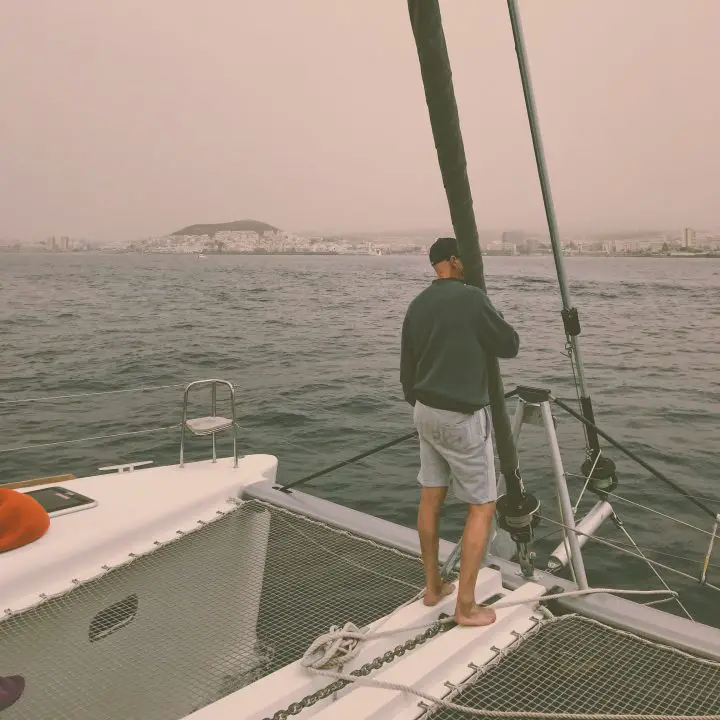
Table of Contents
What is a small catamaran sailboat, pros of a small catamaran boat, cons of small catamaran boats, not all catamarans have the same feel.
- Size (Of Your Liveaboard Catamaran) Matters
Priorities: Affordable Catamarans or Small Catamarans?
- Picking the Right Small Sail Catamaran
Best Small Catamaran FAQs
For liveaboard, long-distance sailors, a small catamaran is a twin-hulled sailboat between 35 and 40 feet long.
There are a few designs, but the most comfortable ones are those with wide beams and the hulls set farther apart. This size catamaran is necessary to ensure the boat can carry enough supplies and retains enough stability to be safe at sea. However, these small boats still feel very large and have beams of 19 to 21 feet. Boats of this size have twin diesel inboard engines. These boats come with four cabins or three cabins in an “owner’s version” layout.
Many of these boats could be described as French-style charter catamarans. Examples of boats like this include those made by Lagoon and Fountaine Pajot. South African companies like Leopard make them too, and there are a few one-off designs, like the American-made Manta share these features.
Generally speaking, a 38-foot-long, 21-foot-wide sailboat is not a small one. But if you love the French-style catamaran, this is about the smallest you’ll find. That’s because this type of boat depends on its width for stability and its length for carrying a load. A shorter boat is very easy to overload. Most boat makers, Lagoon, Bali, Leopard, and the rest, currently make nothing less than 37 feet.
View this post on Instagram A post shared by Katamarans (@katamarans)
But there are some smaller options.
On the other end of the spectrum from the super-wide French-style cat, there are small catamaran sailboat designs built for day-tripping and short-term coastal cruising. These are often narrower than offshore boats and can be stored in a regular boat slip. This is an especially important consideration in coastal areas where big offshore catamarans aren’t very common and marina options are limited.
These boats will sometimes have beams of 15 feet or less. These smaller and lighter boats are often propelled by a single engine, either an inboard diesel or a gasoline outboard. All of these factors make them cheaper.
Examples of boats like this, small and made for nearshore coastal cruising, are the 105MC from Gemini Catamarans and the Endeavour 30. The Gemini is one of the most popular coastal cruiser cats made. It is 35 feet long with a single center-mounted diesel inboard engine, retractable centerboards for shallow-water cruising, and distinctive hard dodger. They usually have two cabins or three cabins and one or two heads.
View this post on Instagram A post shared by Jeremy Ryan Davidson (@jeremy_ryan_photo)
A third group of catamarans doesn’t fit neatly into these two categories. They lie somewhere between small, say 30 to 37 feet, and are built well enough to be considered bluewater boats. They take their designs from seaworthy British catamarans built in the 1980s and 1990s, namely those built by Catalac and Prout. These were solid boats built tough to take on the North Sea that earned the excellent reputation they still have today. The Island Packet PacketCat and Dean Catamarans 365 are two more recent examples.
They tend not to be as beamy as the French charter catamarans and are much less common. However, for owners lucky enough to find a good one, they make excellent long-distance cruisers and liveaboard boats.
View this post on Instagram A post shared by Nadia & Joël autour du monde (@sailing_gypsy_sirena)
Of course, the smallest catamaran of all is the beach cat that everyone is familiar with. It’s nothing more than two small hulls connected by poles and netting. Fun and fast, there’s no better toy on the resort’s beach. They have no interior accommodation—they are just for day sailing. We’ll keep our discussion limited to liveaboard catamaran options.
Catamarans appeal to many sailors, but the reasons folks like them vary from person to person. For example, some are in love with the way cats sail. Faster and lighter than monohulls, they speed up quickly in light wind and skip over the waves.
Others prefer the living space aboard a catamaran. They usually have open, airy salons with tons of light and fresh air everywhere. Big windows are the norm, unlike monohulls described by many as “caves.”
Here are a few reasons to consider a small catamaran with cabin.
- Cheaper than bigger catamarans
- Shallow draft for exploring more places, especially compared to fixed keels on monohulls
- Easy handling and happy sailing
- Large windows and great ventilation in the living space
- Large, open cockpits to entertain guests
- Faster cruising than a similar-sized monohull
- More interior living space than a monohull
- Does not heal under sail as monohulls do—rides flatter
- Fits in more slips and at more marinas than larger, wider boats
- The narrower the boat, the more boatyards are available to you
- One diesel engine price tag—keeps boat and maintenance cheap compared to twin inboard diesels
- Option for outboard engines, which saves even more money in maintenance—some smaller boats have one or two outboard engines
View this post on Instagram A post shared by Elena und Ben (@elenaundben)
There are some struggles for catamaran and would-be catamaran owners, of course. But, by far, the biggest problem you’ll face with choosing a small catamaran is the problem of having limited choices. There aren’t many cats in the world when you compare them to monohulls, and those catamarans you find are more expensive.
Another problem with small catamarans is that they are very sensitive to overloading. While they have lots of storage space, they can’t hold much weight. As the hulls ride lower in the water, sailing performance and overall stability decrease. In other words, a catamaran will hold less weight than a monohull of a similar length.
- Fewer available on the market than monohulls
- Interior space feels different than that on bigger models
- Weight carrying capacity is less than may be required for comfortable long-distance cruising
- Lack of overall stability due to narrower beams
- Seakeeping and ride qualities are poorer than long cats
- Some find the ride quality of shorter catamarans to be uncomfortable
- Lightly built with thin fiberglass layups, susceptible to flexing issues—some require more repair and maintenance than similar-sized and aged monohulls
- High-quality offshore models are hard to find
- Low bridgedeck clearance may mean wave slapping and pounding with some boats on some points of sail
Tips When Shopping for a Small Catamaran Sailboat
Here are a few things to remember if you want to purchase a small catamaran with cabin.
When looking at the latest models, you’ll see that catamaran construction has changed quite a bit in the last two decades. So it’s really important to understand what you like so much about your dream catamaran.
Is it the open feeling you get when standing in the salon, looking out of those huge windows? Or is it the way you can easily walk from the salon to the cockpit to the side decks or helm without stepping up and over seats, in and out of a deep cockpit? What about the easy access to your dinghy, which is on davits at the rear? Or maybe it’s the way that there’s plenty of light below decks in your cabin, and the boat feels open and airy?
The choices look very different when you start downsizing and looking at small cruising cats. Some or all of these features were things that designers had to learn to do. In some cases, they’re still learning how to do them. And in some cases, they’re impossible to do on a small boat.
Size (Of Your Liveaboard Catamaran) Matters
Small catamarans have never been and will never be designed to carry a load. Catamarans are performance-oriented, even if some are built for charter and look like condo buildings. When you stuff too much weight in a catamaran, its sailing characteristics are degraded. As the waterline gets lower and lower, the boat sails noticeably slower, and stability is adversely affected.
As a result, it’s frightfully easy to overload a small catamaran. Going out for a daysail is easy, as you might only bring a towel and some water. But living aboard or traveling long distances is another thing entirely. With a catamaran under 37 feet, it is very difficult not to overload it while keeping enough stuff—tools, spare parts, food/groceries, water, fuel, clothes, gadgets, books, etc. Cats 35 feet and under can be dangerously overloaded, which is another reason these boats are usually not generally considered bluewater vessels.
This is one of the biggest reasons you don’t see many small catamarans being built and crossing oceans—most people need more stuff than a small cat can safely hold.
So with the quality of the living space and the weight of your stuff in mind, most cruising couples are most comfortable on a 40 or 42-foot catamaran. Peformance-wise, a 42 or 44-foot catamaran is the sweet spot for most. Unfortunately, these boats are expensive! Much more so than a 35-footer.
Shorter catamarans also handle big seas differently. The shorter a catamaran is, the more likely it is to hobby horse—the tendency towards a quick, bow-up bow-down motion at sea. This is another reason that 44-footers are ideal—they’re long enough to escape this tendency and ride better in open water. Plus, their longer waterlines and narrower hulls mean these bigger cats will be significantly faster on all points of sail. If you want to see a list of bigger catamarans, check out our list of the best liveaboard catamarans .
So, you must approach your choice with these things in mind. A lot of people downsize their plans to fit their budget. But are you willing to put up with the problems associated with a smaller catamaran than you need? Would a different type of boat actually suit your goals better?
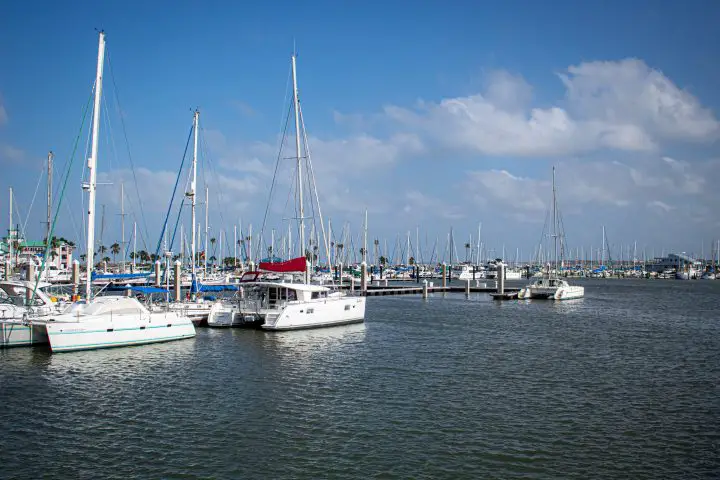
Picking the Right Small Sail Catamaran
Every boat purchase is a compromise, and there is never a perfect boat that can do everything. First, keep a clear mental picture of your goals and what you love about the catamarans you’ve seen. Then, keep an open mind! There are so many different types of boats, and catamarans are just one of them.
When you’re ready to start shopping for a small catamaran sailboat, check out our list of cheap catamarans for some great options in the under-40-foot range.
What are small catamarans called?
A small catamaran is a boat with two hulls. The smallest are beach catamarans like the Hobie Cat . For liveaboard sailors, small catamarans are between 35 and 40 feet long.
How much does a small catamaran cost?
Prices for small catamarans vary greatly depending on the boat’s popularity, quality, and design. For example, one of the most popular small liveaboard catamarans is the French-built Lagoon 380, built from 1999 to 2020. Depending on features, age, and location, these boats currently sell for between $200,000 and $400,000. On the other hand, the much smaller American-built Gemini 105MC can be found for half as much.
What is the best small catamaran to live on?
Everyone is looking for something a little different in their liveaboard catamaran. The Lagoon 380 and Fountaine Pajot Mahe are popular options if you’re looking for a spacious and comfortable charter catamaran.
What is the smallest catamaran to circumnavigate?
Many catamarans in the 35-foot range have successfully circumnavigated. Smaller ones have likely made the trip, albeit less comfortably. But generally, most sailors agree that a 38 to 40-foot cat would be the smallest size that should make the trip, and a 42 to 44-footer would be best. The WorldARC, a 15-month-long around-the-world sailing rally hosted by the World Cruising Club, requires boats to have a 40-foot length, although they will consider smaller vessels on a case-by-case basis.
Matt has been boating around Florida for over 25 years in everything from small powerboats to large cruising catamarans. He currently lives aboard a 38-foot Cabo Rico sailboat with his wife Lucy and adventure dog Chelsea. Together, they cruise between winters in The Bahamas and summers in the Chesapeake Bay.
Leave a comment
Your email address will not be published. Required fields are marked *
Save my name, email, and website in this browser for the next time I comment.
- Skip to main content
- Skip to primary sidebar
- Skip to footer
The Boat Galley
making boat life better

10 Small Catamarans for Cruisers
Published on January 23, 2021 ; last updated on November 7, 2023 by Carolyn Shearlock/Rick Marcarelli

I hear from many readers interested in small catamarans. Recently, the folks at www.CatamaranSite.com reached out to interview me about our experience cruising on our Gemini 105, Barefoot Gal and we began chatting about the various small catamarans on the market. One thing led to another and I’m pleased that Rick Marcarelli was willing to contribute a guest post sharing information comparing ten of the most popular small catamarans on the market.
When most buyers think of catamarans these days, they think of designs by Lagoon, Leopard, and Fountaine Pajot.
These are all fine vessels. But they were built to cater to the charter markets. And so they may not be the best boats for long-term, liveaboard cruisers.
Charter vs Liveaboard Cruising
The typical charter catamaran accommodates three or four couples sailing for one to two weeks in the Caribbean or Mediterranean. Usually they will provision once, sail a few daylight hours, eat out more than a typical cruiser, and anchor or moor for the night.
Compare that itinerary to the typical liveaboard cruiser.
Most cruisers spend over 90% of their time at anchor or a dock. They provision repeatedly and usually for many months at a time. Many cruisers rarely eat out at restaurants. And most importantly, cruisers sometimes sail non-stop through the night for multiple days or weeks when making a passage between cruising destinations.

The differences between charterers and cruisers cause them to desire different cabin layouts and amenities.
For charter boats, the focus is on several small cabins, each having its own accompanying head. They also have minimal storage space and enormous salons and cockpits.
Long-term liveaboards generally desire a large master cabin, fewer heads, and significant storage space. They are usually willing to compromise space for superior sailing performance to reduce passage making days and increase safety by avoiding severe weather.
Affordable Catamaran Market
Unfortunately for liveaboard cruisers interested in catamarans, the market is dominated by enormous, often very expensive, four cabin-four head charter models. In fact, our analysis of sales data suggests that about 38% of the market consists of Lagoon catamarans and over 50% are Lagoon or Fountaine Pajots. In addition, 90% of the market consists of catamarans over 38 feet in length. Please see the infographic.
While a majority of catamarans for sale are large, expensive, charter catamarans, our site’s traffic suggests that 40% of buyers are looking for smaller, simpler, affordable catamarans under 38 feet in length.
These are buyers like Carolyn was when she purchased S/V Barefoot Gal . And they are buyers who may be like you and are looking for something affordable that is suited to your liveaboard needs.
Modest Cats for Cruisers
Consider widening your net. Here are some additional models to consider in your search:
Prout 37 Snowgoose
- Cruising Grounds: Bluewater
- Underbody: Fixed Keels
- Draft (max): 2.08′
- Mast Height: 40’ (Standard) / 50’ (Elite)
- Bridgedeck Clearance: Average
- Layouts: 3 cabins, 1 head; galley down; open version has larger salon while private stateroom has larger master cabin
- Speed: Slow
- Engines: Usually single outdrive; rare versions have twin inboards
- Availability: Relatively common all over the world
- Ballpark Price: Around $100,000 USD

- Cruising Grounds: Built for North Sea
- Draft (max): 2.5′
- Mast Height: tabernacle mast
- Bridgedeck Clearance: Above Average
- Layouts: 3 cabins, 1 head; galley down
- Engines: Single gas outboard or twin inboard diesels
- Availability: Somewhat rare; usually a couple on the market or 8M sister ship; more in Europe
- Ballpark Price: Under $50,000 USD
Lagoon 37 TPI
- Draft (max): 4′
- Mast Height: 55’
- Layouts: 3 or 4 cabin; 2 heads; galley down
- Speed: Fast
- Engines: Twin inboard diesels
- Availability: Very rare; cult classic
- Ballpark Price: Over $100,000 USD

PDQ 36 Capella
- Draft (max): 2.82′
- Mast Height: 47’ (Standard) or 55’ (LRC)
- Layouts: 2 or 3 cabin; 1 or 2 heads; galley down
- Engines: Single gas outboard, twin gas outboard, or twin diesel inboard
- Availability: Usually a few on the market and more likely in USA
- Ballpark Price: Over $100,000 USD
Seawind 1000
- Draft (max): 3.2′
- Mast Height: 47’
- Layouts: 4 cabins; 1 head; galley down
- Speed: Fast
- Engines: Twin gas outboard
- Availability: Usually a few for sale; newer models still being built; originally built in Australia
- Ballpark Price: Over $150,000 USD

- Cruising Grounds: Coastal
- Draft (max): 3.35′
- Layouts: 4 cabins or 2 cabin Maestro; 2 head; galley up
- Engines: Twin inboard diesels with saildrives
- Availability: Usually a couple on the market often in Caribbean
- Ballpark Price: Around $150,000 USD
Endeavour 36
- Draft (max): 2′ 9″
- Layouts: 3 cabin; galley down
- Engines: Twin inboard diesels
- Availability: Rare and likely in the USA

- Draft (max): 3.62′
- Mast Height: 55′
- Layouts: 3 cabin / 1 head; 2 cabin / 2 head; galley up
- Availability: More common especially in Caribbean
- Ballpark Price: Newer version up to $300,000 USD
- Underbody: Centerboards
- Draft (max): 5′
- Mast Height: 47’ (M) or 48’ (MC)
- Bridgedeck Clearance: Below Average
- Layouts: 3 cabin; 1 head; galley down but open
- Engines: Single inboard diesel with retractable outdrive
- Availability: Common especially in the USA

- Draft (max): 3′
- Mast Height: 46′
- Layouts: 4 cabin / 1 head; 3 cabin / 2 head; galley down; bathtubs on some
- Engines: Single or twin inboard diesels
- Availability: Rare model
- Ballpark Price: Around $50,000 USD
Rick Marcarelli is the webmaster of CatamaranSite.com featuring cruising catamarans for sale by owner as well as educational articles. Rick is the owner of S/V Catalpa , a Catalac 8M based out of Merritt Island, Florida. The site also functions as the owner’s website for Catalac catamarans. If you are planning on buying a catamaran, CatamaranSite.com might save you a considerable amount of money and lead to years of happy sailing.

And check out our other courses and products
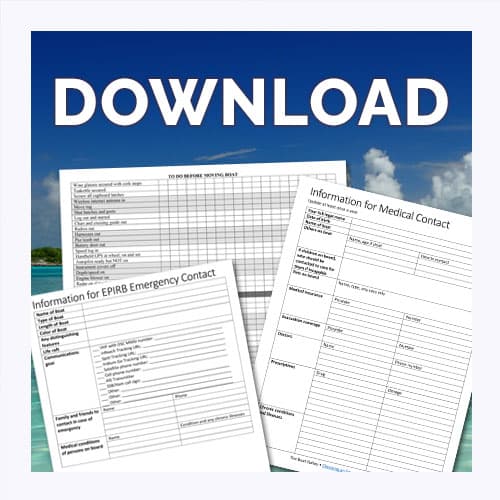
Find this helpful? Share and save:
- Facebook 359
- Pinterest 171
Reader Interactions
January 31, 2021 at 5:58 pm
I would think draft on the fixed keel boats would be important to many who are considering cats.
Carolyn Shearlock says
February 1, 2021 at 12:49 pm
I’ll see if we can perhaps add that.
Richard says
February 9, 2021 at 11:03 am
Good addition. I have provided drafts to Carolyn, so please watch this article for that to be updated. Any questions or additional information you would like added please comment again.
Drew Frye says
February 20, 2021 at 11:46 am
The best way to look at speed ratings is the PHRF rating or other handicaps. I used to own a PDQ 32 and never found a Gemini I couldn’t pass rather easily on autopilot, so I don’t think it rates slow if well handled. Granted, mine was turboed a bit and carried a 120 rating.
Florida ratings, according to US Sailing
PDQ 32 135 Seawind 1000 137 PDQ 36 156 Gemini 105 MC 168 Snowgoose 250 The others rate around 130-145
And of course, this is only fast or slow within the class. Fast multihulls cruising (?) multihulls rate 0-60.
February 21, 2021 at 7:59 am
Thanks! Good info.
September 10, 2023 at 5:55 am
I have an Edel 35′. For their price, they are a good option, for this size of catamaran. They are not slow, by any means. Disadvantage: clearance under nacelle.
Erin Michaud says
February 23, 2021 at 10:22 am
Great info, we met an owner of a Catalac 9M in Key West Garrison Bight Marina a couple of weeks ago. His name is Eric & he moved his boat to the Boca Chica Navy Marina. I will send the contact info for Rick to him specifically for the Catalac boats! Thanks!
February 24, 2021 at 5:54 am
Catalacs are great boats. We saw a couple for sale around the time we bought Barefoot Gal but they were sold the same day they were listed so we didn’t get to even look at them.
January 6, 2022 at 11:32 am
Hello. I was wondering if you can identify this open catamaran which boasts a GRP cockpit with seating?
https://imgur.com/gallery/2wzUJmR
Bruce Bayne says
February 20, 2022 at 9:57 am
I noticed that the Privilege 37 and 39 were not mentioned in your 10 list of catamarans. Is there a reason? How do they stack up to the others with regard to speed and bridgedeck clearance?
June 6, 2022 at 10:44 am
Leave a Reply Cancel reply
Your email address will not be published. Required fields are marked *
Each week you’ll get:
• Tips from Carolyn • New articles & podcasts • Popular articles you may have missed • Totally FREE – one email a week
SUBSCRIBE NOW
- Questions? Click to Email Me
- Visit Our Store


13 Best Small Catamarans For Cruising 2024
The best small catamarans for cruising are affordable and comfortable, making great sailboats for a number of different purposes. If you’re looking for the best small catamarans to start your cruising life then look no further!
When searching for a catamaran for our adventures we scoured the internet for any and all information we could find on just about every size, shape, and model!
Although in the end, we opted for a bigger catamaran, in the hopes of having more family and friends on board, we did heavily research the best small catamarans as an option.
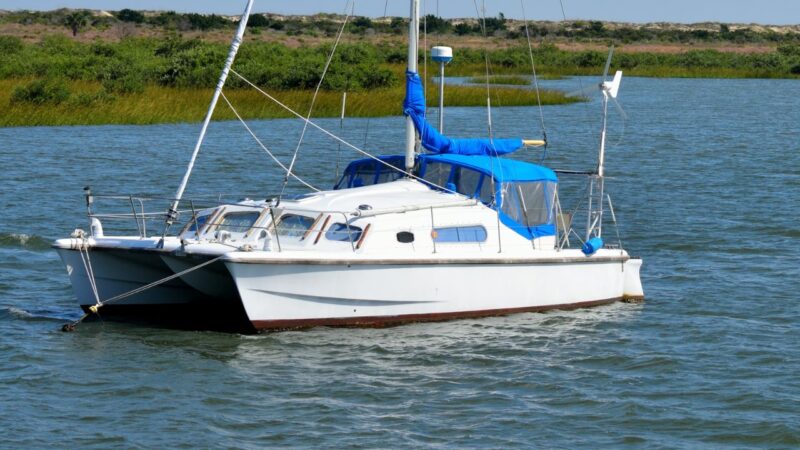
Each small catamaran has different pros and cons. As with every sailboat, there will be compromises, but hopefully, this post will help you firm up what you’re really looking for in a multihull and find the right smaller catamaran for you!
Here are what we consider the best small cruising catamarans out there, costing anywhere from $40,000 to $300,000. You can also read up on the average costs of sailboats here.
Why choose a small catamaran for cruising?
The downsides to small multihulls for cruisers
The best small catamarans for ocean sailing
The best small catamarans for coastal cruising
Why Choose A Small Catamaran For Cruising?

The main advantage to choosing a small catamaran for cruising has to be the cost. Not only are smaller sailboats cheaper to buy initially, but they are also cheaper to maintain and to dock in marinas or dry storage.
Why buy a small catamaran over a monohull? This isn’t the post to go into the pros and cons of multihulls vs monohulls, but a few of the main reasons you might prefer to buy a small cat over a bigger, cheaper monohull is the living space and the comfort underway and at anchor.
Living on a sailboat is very different from taking the boat out for a sporty sail every now and again. Having a catamaran over a monohull means you won’t be heeling or rolling at anchor half as much, you can leave out your coffee cup, and you have the space you need to spread out a little.
A small catamaran will enable the more comfortable lifestyle you’re seeking at a more reasonable price tag. So what’s not to love about small cruising multihulls?
The Downsides To Small Multihulls For Cruisers

Of course, just with everything in sailing, there are always compromises to be made when it comes to small multihulls.
One of the biggest downsides for cruisers is the weight issue smaller catamarans present. You won’t be able to carry half as much as you would on a larger catamaran or monohull, which might be a problem if you live onboard full time.
The other negative is that smaller boats usually aren’t quite as seaworthy as larger ones. You might find you’re limited to coastal cruising if you choose a small catamaran, so make sure you have your cruising intentions in mind before you buy.

Another big thing to look out for when it comes to choosing the right small cat for you, is the bridge deck clearance. This is often worse on smaller catamarans, and can cause nasty slamming in any sort of sea, both when sailing and at anchor.
With these downsides in mind, we’ve split this post into the best small catamarans for ocean sailing and the best for coastal cruising. Obviously this is a little subjective, as many people have sailed around the world in much smaller and less seaworthy vessels!
The Best Small Catamarans For Ocean Cruising
#1 wharram tiki.
- Suitable for: Bluewater sailing
- Fixed Keels
- Draft (max): 2.08′
- Engines: Single outboard, though some versions have twin inboards
- Price: Roughly $100,000

We have lusted after the Wharram catamarans since our adventures began and would have opted for one of these if we had found one for sale this side of the pond.
Designed by the legendary James Wharram, these small multihulls are pretty unique. They are based on the Polynesian catamaran design, and the plans enable you to self-build these boats if you have the time, money, and space for a project of this magnitude.
If you aren’t keen on taking on a project then you can commission a boat builder to complete the design for you, or buy one second-hand. The advantages of having one made yourself are that you can tweak things to your personal taste, and you can even contact the Wharrams themselves to see if they can adjust the designs for individual requests.
The Wharram catamarans have a lot of charm dues to their traditional design, and the old-fashioned appeal continues inside the boat too. You won’t find the same huge hull space as some of the modern design catamarans now have, but the outside entertainment space is perfect for entertaining.

These small catamarans don’t have an inside space across the hulls, so all of your inside living space is below. If you’re used to monohulls then this won’t be a problem but if you like the idea of a galley-up then these boats aren’t for you.
Wharram catamarans, especially the Tiki 38, have great reputations as around the world, bluewater boats. They have fantastic bridge deck clearance so slamming is minimum and they sail well.
Most models have a double cabin and two singles, a galley, a head, and a small salon area below. They are smaller catamarans than many newer 38ft multihulls but this does make them more affordable.

A big appeal for us was the fact these boats are designed to be self-made. Although a secondhand model could potentially come with a lot of problems (get a decent survey before you buy!) it does mean that almost everything onboard can be self-fixed. This is a huge bonus if you plan on sailing your small catamaran around the world.
Another thing we loved about these smaller catamarans is the fact they have outboard engines, which we felt would be easier to maintain and replace if necessary. This is a personal choice though so consider this before you get your heart set on one!
One of the downsides to the Tiki 38 is that there aren’t many of them around. These are unique boats and they don’t come on the market frequently. When they do, they tend to be scattered all over the world so you’ll have to be prepared to travel to find one!
#2 Prout Snowgoose 37 : Small Catamaran For Ocean Cruising

Prout catamarans are a popular choice for cruisers, and you’ll find many owners who have circumnavigated in them. The Snowgoose is no exception. Prout no longer exists as a company, as it was bought by Broadblue in the 90s.
Broadblue still makes catamarans today, and they have very similar features to the original Prouts, though obviously they are far fancier and have all the benefits of a more modern design!
The Snowgoose is a great small multihull to go for as you get quite a lot of space inside and out. We weren’t sure about the berth in the salon area, but it might make a great space for a baby or small child while underway!
The compromise in the Prout Snowgoose is the bridge deck clearance and this was something that put us off these smaller cruising catamarans. A low bridge deck clearance makes the boat slam in waves, both at anchor and underway.
#8 PDQ 36 : A Small Catamaran Without Too Much Slamming
- Suitable for: Bluewater
- Draft (max): 2.82′
- Engines: Twin inboard or outboard
- Price: Over $100,000

These small catamarans have an excellent reputation among cruisers because of their solid build and use of decent materials. They come with either outboard engines for coastal cruising or inboard engines designed to withstand offshore use.
If you like the sound of the PDQ 32 but need a little more room then you’ve got that here! It’s also a boat that people have crossed oceans in, though you might want to consider something more tried and tested like the Prout Snowgoose or the Wharram if you’re planning longer ocean sails.
The boat has three cabins, a galley, salon and head, but there’s a more spacious feel compared to the smaller model. Again, the bridge deck clearance is good so you shouldn’t experience too much slamming.
#9 Lagoon 380 : One Of The Most Popular Small Multihulls

- Fixed keels
- Engines: twin diesel engines
- Price: from $100,000, used
The Lagoon 380 is one of the most popular catamarans out there, and you’ve probably already spotted a lot of them in your search! This is a great option if modern cats appeal to you, as it’s pretty ‘with the times’ as far as smaller catamarans go!
There are lots of different layouts of this boat available all over the world. Some were built for charter with numerous berths and others were commissioned for couples or families with differing cabin and head options.
This is a proven catamaran from a reputable company, but obviously with so many of these boats out there, they come in a range of conditions. Make sure you get a thorough survey done before purchase!
Lagoon 37 TPI
- Draft (max): 4′
- Engines: Twin inboard diesels
- Price: Over $100,000 USD
This is the smallest catamaran built by Lagoon, and unfortunately there aren’t many of them out there. These boats were built mainly for the charter market, and have a smaller rig than some similar sized catamarans.
There are two big queen-size forward doubles port and starboard and a smaller double in the starboard hull aft. The galley and salon are designed to be simple and timeless, with none of the fancy trims you’ll find in the newer Lagoons.
As this boat was intended for charter it probably wouldn’t make a great ocean-going vessel. For starters, it isn’t designed to carry too much in the way of provisions. That’s not to say it won’t be a suitable bluewater boat with a few tweaks. Sailors who have circumnavigated in them have increased sail area and added folding props to get more speed from the vessel.
#11 Catalac 9M/30

- Draft (max): 2.5′
- Engines: two outboard engines or one diesel engine
- Price: from $50,000
The Catalac 9M is a little different to a lot of the catamarans on this list, as it was built for sailing in the North Sea! This is a great small catamaran for anyone wanting a boat built to be safe!
The bridge deck clearance is reasonable but the boat is light, which can make it more prone to slamming. The unique feature of this small sailboat is the hard dodger, designed as somewhere safe and dry to stand in bad weather.
It sails well, though like a lot of catamarans there is technique involved in getting it to tack smoothly. Once you’ve got the hang of though, this boat will make good speeds for its size.
The Best Small Catamarans For Coastal Cruising
- Suitable for: Coastal
- Draft (max): 3.62′
- Engines: Twin inboard
- Price: Up to $300,000 for a newer model
The Mahe 36 is the smallest of the Fountaine Pajot range, and these small catamarans can go for a heafty budget if you find a newer model!
This tiny multihull packs a lot into a small space, and because of its modern features, you’ll feel like you’re in a much bigger boat when you step aboard.
This boat is a fast mover, with an ok bridge clearance and some attractive upgrades compared to their last small catamaran design. Most notably the full-length hard top bimini which has the reviewers raving!
If you have the money to splash out on a newer, more expensive small catamaran then this should definitely be on your list to consider! Although they come with a large price tag, these small catamarans are considerably cheaper new than some of the bigger models.
#4 Gemini 105Mc (34ft)

Suitable for: Coastal cruising Centreboards Draft (max): 5′ Engines: Single inboard Price: from $80,000
The Gemini 105Mc is still in production in the US, which speaks to its popularity. Obviously if you buy new you’ll pay a much higher price! This is one of the smallest catamarans on the list, but it’s still a great option for coastal cruising (or some have even successfully completed ocean passages on them in relative comfort).
For a small multihull this boat sails pretty well and is fast for a coastal cruiser. The living space is decent with good headroom. It has two double cabins and a master bedroom, and the interior finishes are nice too.
A big negative to this boat is the bridge deck clearance which really isn’t amazing, but as we said at the start, there’s always a compromise! This is a sporty-looking little catamaran that’s a good contender for the top smallest catamarans out there!
#5 EndeavourCat 36
Suitable for: Coastal cruising Fixed keels Draft (max): 3′ Engines: two inboard Price: from $100

Designed and built by Endeavour Catamaran, these American built boats are great cruising catamarans. A big advantage to this little multihull is that it will fit into most monohull slips, so if you anticipate using marinas a lot then this might be the small catamaran for you!
This isn’t a slow boat, and owners report speeds of 8-9 knots. Bear in mind though that the narrow beam does make it less suitable for any offshore passages. It has good interior space with 6′ standing headroom throughout, three double cabins, and a decent-sized galley below. The salon area can seat 6 people comfortably.
This cat is great for single-handed sailors, as all the lines lead to the cockpit and the main and jib are completely self-tacking.
#6 Prout Event 34

Suitable for: Coastal/bluewater Fixed keels Draft (max): 2.72′ Engines: Single inboard Price: from $30,000
These multihulls are quite hard to find, but if you like the Snowgoose but are on a tighter budget then they might be just what you’re looking for. They share lots of features with the Snowgoose and look very similar, only smaller!
There are three cabins, one head, a salon, and a galley, only they are rather squeezed in compared to the larger model. Personally, we thought there was plenty of space for a smaller sailboat but it’s worth seeing them in person if you’re keen on this model.
They do have the same downsides as the Snowgoose though, with limited headroom and low bridge deck clearance. These boats are known for their slamming!
Coastal Engines: twin outboards Price: from $80,000, used

The PDQ 32 is a great budget option catamaran and should be cheap(ish) to buy second hand and maintain. With two outboards that are easy to replace on a smaller budget, you’re looking at some of the usual pinch points on a boat becoming a lot more affordable!
This small catamaran only has two cabins, so sleeps less than a lot of the boats on this list, but it is roomier than you’d imagine inside with a decent galley and salon area. It has decent bridge deck clearance so shouldn’t slam too much in any waves.
This isn’t a boat for longer passages as it is a little small (and perhaps underpowered) to face serious weather. If you’re searching for something to potter around in then this is a fun boat to sail and live in!
#12 Dean 365

Crew Application Freebie
Exactly what you need to write to get accepted as sailboat crew, and some top tips to help you have the adventure of a lifetime!
You have successfully joined our subscriber list.
- Suitable for: Coastal cruising
- Draft (max): 3′
- Engines: one or two inboard
- Price: from $45,000, used
These South African catamarans are great little coastal cruising catamarans that are hard to come by anywhere other than South Africa!
They’re pretty tiny, but have enough space for a galley, 3 or 4 cabins, and 1 or 2 heads. Some of the designs even have a bathtub, which speaks of their liveaboard suitability rather than their sail performance!
These boats are some of the smallest multihulls on this list, so don’t expect much in terms of headroom or bridge deck clearance. That being said, if you’re looking for a tiny catamaran to live on and you are prepared to compromise on sailing ability then these are a solid choice.
We have heard that the build quality can vary somewhat with these multihulls, so make sure you do some solid research and get a good surveyor when buying one of these. If you get a good version then they can make really solid boats.
#13 EndeavourCat 30

Suitable for: Coastal cruising Fixed keels Draft (max): 2.1′ Engines: single or twin outboard Price: from $70,000
This is a boat built for comfort over all else, so if you’re looking for a budget catamaran to live in then take a look at the endeavourcat 30. Some people don’t like the boxy design, but we quite liked how it looked in the water. I guess it’s personal taste!
This sailboat has two double cabins, a decent sized galley and salon for the size of the boat, and a head. The bridge deck clearance is low so that’s something to bear in mind before you buy, but the headroom is good (another reason why this would make a good liveaboard catamaran).
Hopefully this has given you some inspiration when searching for small catamarans for cruising, and helped you to find your dream boat!
We’re passionate about helping people live this incredible cruising lifestyle, so if you’re planning your dream liveaboard life make sure you check out our guide on how to run away to sea, with everything you could possibly need to know before, during, and after starting this adventure of a lifetime!

Similar Posts
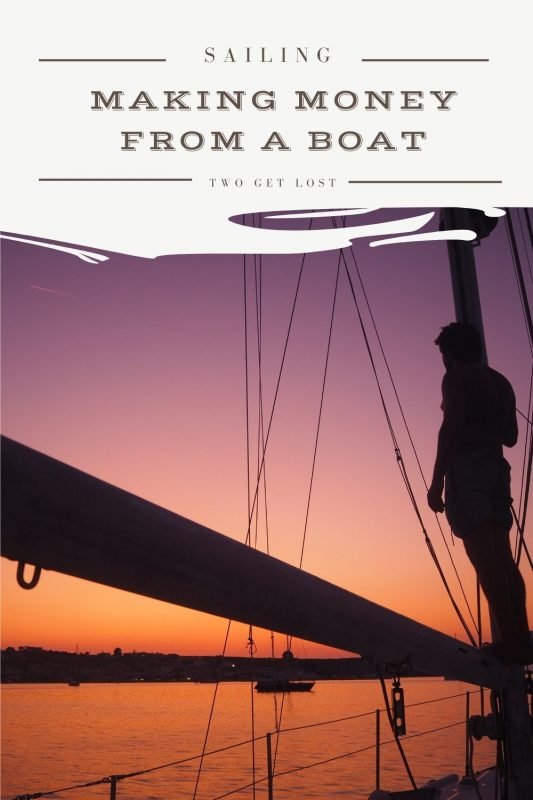
How to Make Money While Living on a Sailboat

101 Awesome Boat Puns And Yacht Captions For Instagram 2024
Cobb bbq review: the best bbq for sailing.

7 Large Cockpit Sailboats: When Size Matters

The Best Hot Chocolate Recipe For Sailing!

13 Best Sailing Lifejackets 2024
Such small mention of probably the best catamaran for overall cruising, focusing on ease of helming, speed and livability. Simple rig, great ergonomic features, style and definitely a pedigree on the water. The FP Mahe duo! Sea proven. Most delivered on their own bottoms from France. Wide beams and light. Beautiful interior arrangements and easy to maintain. I’m confused about so little mention of probably the best entry level and beyond real cruiser out there.
You forgot the edelcat 35. Great boats, and have circumnavigated!
I wonder why Broadblue 346 is not on the list.
Leave a Reply Cancel reply
Your email address will not be published. Required fields are marked *
- Search Search Hi! We’re Emily, Adam and Tiny Cat, liveaboard sailors travelling the world on our 38ft sailboat and writing about it as we go. We hope we can inspire you to live the life you’ve always dreamed, whether that’s exploring the world or living a more simple way of life in a tiny home. Find out more. Patreon
- Privacy Policy
Small Sailing Catamarans: The Ultimate Guide
by Emma Sullivan | Aug 14, 2023 | Sailboat Gear and Equipment

Short answer: Small sailing catamarans
Small sailing catamarans are multi-hulled boats that offer stability, speed, and ease of handling. They typically have two parallel hulls connected by a platform and are designed for recreational or racing purposes. Popular among sailors due to their maneuverability and shallow draft, they are suitable for both inland and coastal waters.
The Beauty of Small Sailing Catamarans: Why They’re Perfect for Adventurers
Are you an adventurer at heart, longing to set sail and explore the vast depths of the ocean ? If so, we have just the vessel that will capture your imagination and ignite your sense of wanderlust – small sailing catamarans. These marvels of engineering offer a unique sailing experience like no other, making them the perfect choice for those seeking both adrenaline-pumping escapades and tranquil moments at sea.
What makes small sailing catamarans so enthralling is their remarkable combination of stability, speed, and space. Unlike their monohull counterparts, which tip precariously with every gust of wind, catamarans gracefully slice through the water with elegance and poise. Their dual hull design effortlessly balances weight distribution, providing unparalleled stability even in rough seas. This ensures a smoother ride and allows adventurers to indulge in exciting activities without compromising safety.
Speaking of thrills, these nimble vessels possess an inherent need for speed – a characteristic that perfectly suits adventure enthusiasts who crave excitement on the open waters . With their lightweight build and low-drag hull design, small sailing catamarans are designed for rapid acceleration. Imagine skimming across waves at exhilarating speeds as you feel the salty mist caress your face; it’s an experience that truly elevates adrenaline levels to new heights!
But don’t let their penchant for speed fool you – these catamarans also cater to those yearning for serene moments amidst nature’s grandeur. When you have had your fill of fast-paced adventures, simply anchor in a secluded bay or sandy cove to relish peaceful sunsets or immerse yourself in snorkeling adventures beneath crystal-clear waters. The ample deck space offered by small sailing catamarans allows adventurers to bask in the serenity surrounding them while indulging in much-needed relaxation.
One might ask: what about onboard amenities? Small sailing catamarans boast of clever and innovative storage solutions that make them an adventurer’s dream. From hidden compartments to specialized equipment storage areas, these vessels are designed to accommodate all the gear an explorer could possibly need. Whether you’re a scuba diver with tanks and fins or a kayaker seeking new waterways to conquer, rest assured that your equipment will be stowed efficiently on board.
In addition, small sailing catamarans offer spacious cabins for overnight trips or long expeditions – a welcome respite from the elements after an adrenaline-filled day at sea. With comfortable sleeping quarters and well-appointed interiors, adventurers can enjoy a good night’s rest as they prepare for another day of unforgettable conquests.
The versatility of these stunning vessels also opens up opportunities for exploration in shallow waters unreachable by larger boats. The shallows hold their own charm with vibrant coral reefs teeming with exotic marine life waiting to be discovered. Small catamarans’ reduced draft allows adventurers to venture where others cannot, granting unrivaled access to unspoiled paradises that remain hidden to most.
So, if you’re an intrepid soul ready to embark on thrilling escapades on the high seas without compromising on comfort and stability, look no further than small sailing catamarans. These magnificent creations combine performance, resilience, and adventure into one breathtaking package – ensuring that every voyage is nothing short of extraordinary. Let the beauty of small sailing catamarans unleash the adventurer within you!
How to Choose the Right Small Sailing Catamaran for Your Needs
Are you dreaming of sailing the open seas, feeling the wind in your hair and the salt on your skin? If so, then choosing the right small sailing catamaran is crucial to ensure that your dreams become a reality. With so many options available in the market, it can be overwhelming to narrow down your choices. But fret not, as we have compiled a comprehensive guide to assist you in finding the perfect small sailing catamaran for your needs. So grab a cup of coffee, sit back, and let’s delve into this exciting world of sailboats!
1. Determine Your Sailing Goals: Before embarking on your catamaran search, it’s important to establish what you want from your sailing adventures . Are you looking for weekend getaways with friends and family or planning to circumnavigate the globe? Identifying your goals will help narrow down the size, features, and capabilities that your ideal catamaran must possess.
2. Consider Your Budget: Catamarans come in various price ranges depending on their size, brand, condition, and features. It’s crucial to understand how much you’re willing to invest in this endeavor. Keep in mind that besides purchasing costs, there will also be ongoing expenses such as mooring fees, maintenance costs, fuel consumption, insurance premiums etc. Setting a realistic budget will prevent potential financial strains down the line.
3. Size Matters: Catamarans generally range from 30 to 50 feet in length; however smaller ones tend to be more maneuverable and easier to handle. For novices or those who prefer solo sailing adventures, opting for a smaller sized catamaran might be a wise choice due its simplicity and ease of use.
4. Assess Performance & Stability: One of the main advantages of small sailing catamarans is their unparalleled stability compared to monohull boats; they are less prone to heel (tilting) which ensures a smoother ride even in rough waters. Performance wise, they are renowned for their speed and ability to slice through waves effortlessly, offering an exhilarating sailing experience .
5. Comfort & Accommodation: While small sailing catamarans may be compact in size, they still managed to maximize the available space for comfort and accommodation. Look for features such as spacious cabins, ample storage compartments, well-equipped galleys, comfortable seating areas, and a layout that suits your needs. Remember, the more comfortable you are on-board, the more enjoyable your sailing adventures will be.
6. Check Quality & Construction: Investing in a well-built catamaran is essential to ensure longevity and durability. Pay attention to the construction materials used; fiberglass is commonly utilized due to its strength and resistance against corrosion. Assess factors like build quality, reputation of the manufacturer, craftsmanship standards and seek expert opinion when necessary.
7. Seek Professional Help: If you’re new to the world of small sailing catamarans or feel overwhelmed by the decision-making process, consult with a professional yacht broker or sailboat specialist who can guide you towards making informed decisions based on your needs and preferences.
8. Research & Test Sail: Thoroughly research different models of small sailing catamarans that align with your requirements; read reviews, participate in online forums or sailboat communities to gather insights from experienced sailors. Additionally, wherever possible test sail various models before making your final decision – experiencing firsthand how a particular catamaran handles will allow you to gain valuable knowledge before committing.
Remember that choosing the right small sailing catamaran requires patience and due diligence. Take your time exploring all available options while keeping in mind your specific needs and preferences. By doing so, you’ll soon find yourself aboard an incredible vessel that will take you on unforgettable journeys across vast seas! Happy Sailing!
A Step-by-Step Guide to Building or Buying a Small Sailing Catamaran
Are you ready to set sail on your very own small sailing catamaran? Whether you’re a seasoned sailor or a beginner itching to embark on your sailing adventure, this step-by-step guide will walk you through the process of building or buying your dream boat. Get ready to navigate the waters with confidence and style !
Step 1: Determine Your Budget and Research Options Before diving headfirst into building or buying a small sailing catamaran, it’s crucial to establish your budget. Consider how much you’re willing to invest in this endeavor, factoring in costs such as materials, equipment, and professional assistance if needed. Once your budget is determined, start researching different options available on the market. Take note of key features and characteristics that align with your sailing preferences.
Step 2: Evaluate Building vs. Buying Now that you have an idea of what’s out there, it’s time to weigh the pros and cons of building versus buying a small sailing catamaran. Building a boat allows for customization and complete control over its design, but it can be time-consuming, challenging, and potentially more expensive. On the other hand, buying a pre-built catamaran offers convenience but may limit customization options. Carefully consider your skills, resources, and overall objectives before making a decision.
Step 3: Build Your Small Sailing Catamaran – DIY Style! If you’ve decided to take on the exciting journey of building your own small sailing catamaran, preparation is key! Start by gathering essential tools and obtaining comprehensive plans or blueprints from reputable sources. Familiarize yourself with different construction techniques like stitch-and-glue or strip planking—each having its own requirements based on materials chosen (fiberglass ply vs wood). Assemble necessary materials such as marine-grade plywood or fiberglass sheets while paying attention to quality and durability.
While constructing your small sailing catamaran at home may seem daunting at first, approach it with enthusiasm and attention to detail. Follow the plans step-by-step, ensuring precise measurements, accurate cutting, and thorough sealing. Seek guidance from experienced builders or seek advice through online forums dedicated to boat-building communities.
Step 4: Consider Professional Assistance For those lacking time, experience, or simply looking for a faster route, enlisting professional help may be a smart move. Consult with boat builders specializing in small sailing catamarans to discuss your requirements and desired specifications. They can guide you through the selection of materials, provide design recommendations based on your needs, and oversee the construction process.
While utilizing professional assistance may increase your budget initially, it offers peace of mind knowing that experts are handling the intricate details involved in crafting a seaworthy vessel.
Step 5: Owning Your Dream Small Sailing Catamaran – Things to Remember Congratulations! You’ve built or purchased your very own small sailing catamaran. But before setting sail into the sunset, there are a few important factors to keep in mind:
1. Safety First: Ensure your catamaran is equipped with all essential safety equipment including life vests, fire extinguishers, flares, and navigational tools like charts and compasses.
2. Maintenance Matters: Regularly inspect and maintain your catamaran’s hulls, rigging systems (including ropes), sails, and engines (if applicable). Proper upkeep will enhance performance and ensure longevity.
3. Expand Your Knowledge: Keep honing your sailing skills by attending courses or workshops offered by reputable sailing organizations. Strengthening your knowledge will enhance safety on board while broadening your horizons as a sailor.
4. Embrace Adventure: Finally, don’t forget why you embarked on this endeavor in the first place – to embark on exciting adventures! Explore new waterscapes while embracing the freedom and serenity that comes with owning a small sailing catamaran.
So there you have it – a comprehensive, step-by-step guide to building or buying your dream small sailing catamaran. May the winds be forever at your back as you set sail into this thrilling and wondrous world of sailing!
Frequently Asked Questions About Small Sailing Catamarans Answered
Frequently Asked Questions About Small Sailing Catamarans Answered: Sail the Seas with Ease!
Are you a sailing enthusiast searching for the perfect vessel to embark on your next adventure? Look no further than small sailing catamarans! These nifty crafts have gained popularity among sailors of all levels, thanks to their unique features and exceptional performance. However, we understand that you may still have some burning questions about these marvelous vessels. In this blog post, we’ll walk you through the frequently asked questions about small sailing catamarans and provide detailed and witty answers that will help you make an informed decision.
1. What makes small sailing catamarans different from other sailboats?
Ahoy there! Small sailing catamarans are quite distinct from traditional monohull sailboats. Unlike their single-hulled counterparts, these beauties boast two parallel hulls connected by a deck platform. This innovative design offers improved stability, reduced heeling (leaning), greater living space, and enhanced maneuverability – giving you ample freedom to explore the open waters like never before!
2. Are small sailing catamarans suitable for beginners?
Absolutely! One of the main advantages of small sailing catamarans is their user-friendly nature, making them an excellent choice for novice sailors. With their twin hulls promoting balance and stability, even those new to sailing can confidently navigate without fretting too much about capsizing or feeling uneasy at sea.
3. Can I experience high speeds on a small sailing catamaran?
Fun comes first when it comes to these agile watercraft! Thanks to their lightweight construction and efficient aerodynamics, small sailing catamarans are known for their remarkable speed potential. So if you’re looking for an adrenaline rush or simply wish to reach your destination swiftly while harnessing the power of wind , these vessels won’t disappoint.
4 . Are they spacious enough for extended cruising?
Oh yes! Space is not compromised aboard a small sailing catamaran. The dual-hull design offers a generous deck area that can be utilized for outdoor lounging, dining, and soaking up the sun’s glorious rays. In addition to this spectacular exterior space, these catamarans typically provide spacious cabins, salons, and ample storage compartments – making them perfect for extended cruising adventures without feeling cramped.
5. Can a small sailing catamaran handle rough seas?
Ahoy, Captain! While no boat is impervious to the vastness of Mother Nature’s wrath, small sailing catamarans are renowned for their resilience in challenging conditions. The robust construction and wider beam offer stability even in choppy waters. However, it’s always prudent to exercise caution and check weather conditions before setting sail on any vessel.
6. How about maintenance and docking?
Have no fear – maintaining a small sailing catamaran is not as daunting as you may imagine! Due to their lightweight materials such as fiberglass or carbon fiber composites, these vessels require less maintenance compared to traditional boats made of steel or wood. When it comes to docking, their maneuverability shines yet again! The dual-engine setup allows for precise control when navigating tight spaces or docking at marinas.
7. What about the cost? Are small sailing catamarans budget-friendly?
Now comes the juicy part – budgeting! Small sailing catamarans do tend to have a higher initial price tag compared to monohulls due to their advanced design features and improved performance capabilities. However, many sailors argue that the long-term benefits outweigh these upfront costs. Think fuel efficiency with less reliance on fossil fuels thanks to wind power—cutting down operational expenses and making them quite economical in the grand scheme of things!
So there you have it—the frequently asked questions about small sailing catamarans answered with wit and wisdom! These remarkable vessels combine stability, speed, and comfort while offering an unforgettable experience on the high seas. Whether you’re a seasoned sailor seeking a new adventure or a beginner looking for the perfect vessel to embark on your first voyage, small sailing catamarans may just be your ultimate ticket to maritime bliss. Anchors aweigh, sailors!
Exploring the Benefits of Small Sailing Catamarans: Speed, Stability, and More
Sailing enthusiasts are constantly seeking thrill and adventure on the open waters. Whether you’re an experienced sailor or a beginner heading out for your first voyage, choosing the right sailing vessel can make all the difference in your experience. While monohulls have been the traditional choice for many sailors, small sailing catamarans have gained immense popularity in recent years. These sleek and nimble vessels offer a host of benefits that make them an attractive option for any sailing enthusiast .
One of the most enticing advantages of small sailing catamarans is their exceptional speed. These multi-hulled vessels are designed to slice through water with minimal drag, allowing them to achieve impressive speeds even in light winds. Unlike their monohull counterparts, which rely heavily on heeling to generate forward momentum, catamarans can reach high velocities while maintaining stability and comfort.
Speaking of stability, this is another significant advantage that sets small sailing catamarans apart from monohulls. With two hulls instead of one, catamarans provide enhanced balance and reduced rolling motions. This means you can enjoy smooth sailing even in choppy conditions or strong winds . The absence of heeling – when a monohull tilts due to wind pressure – not only keeps passengers more comfortable but also eliminates the need for constant readjustment while underway.
Another benefit worth noting is how easy it is to handle a small sailing catamaran. Thanks to their twin hulls and wide beam, these vessels have incredible maneuverability compared to their single-hulled counterparts. They turn sharply and respond quickly to helm adjustments, granting sailors greater control over their course and making navigating tight spaces or crowded marinas a breeze.
Furthermore, small sailing catamarans offer generous space onboard that translates into increased comfort during trips on the water. Their broad decks provide ample room for lounging or socializing with friends and family while enjoying uninterrupted views of your surroundings. Many modern designs feature spacious cabins equipped with modern amenities, allowing for extended cruises without sacrificing comfort.
In addition to these primary advantages, small sailing catamarans also boast excellent fuel efficiency. With their lightweight construction and streamlined designs, they require less power to propel through the water when compared to heavier monohulls. This translates into reduced fuel consumption and lower operating costs, making catamarans an environmentally friendly choice as well.
Moreover, small sailing catamarans are highly versatile vessels that can adapt to various sailing experiences. Whether you’re looking for a thrilling race on the open ocean or a relaxed day trip exploring coastal bays and coves, these boats are up for any challenge. Their shallow draft enables them to access shallow waters or anchor close to shorelines that may be inaccessible to larger vessels. This versatility makes small sailing catamarans not only suitable for seasoned sailors but also an ideal choice for families or those new to sailing.
In conclusion, the benefits of small sailing catamarans are undeniable. From their remarkable speed and stability to their ease of handling and spaciousness onboard, these vessels offer an unmatched sailing experience. So whether you’re chasing adrenaline-fueled adventures or seeking a comfortable escape on the water, consider embracing the wonders that only a small sailing catamaran can provide – setting sail into smooth seas while leaving behind all your worries onshore.
Tips and Tricks for Maintenance and Upkeep of Small Sailing Catamarans
Welcome to our blog where we will share a plethora of invaluable tips and tricks for maintaining and keeping your small sailing catamarans in top-notch condition. Whether you are a seasoned sailor or just starting to explore the thrilling world of catamaran sailing, these well-researched insights are sure to help you enhance the lifespan and performance of your beloved vessel. So, without further ado, let’s dive right into our expert recommendations!
1. Meticulous Hull Cleaning: The hulls of your catamaran are constantly exposed to water , salt, algae, and other elements that can deteriorate its structural integrity over time. Regularly cleaning the hull with appropriate marine-grade cleaners not only removes unwanted substances but also prevents the accumulation of dirt that can add unnecessary weight and drag.
2. Rigging Inspection: Catamaran rigging plays a crucial role in ensuring sail efficiency and overall stability. Periodic inspections should be carried out to identify any signs of wear and tear on your mast, shrouds, forestay, and other components. Replacing worn-out parts promptly ensures optimal safety while sailing .
3. Sail Maintenance: Your sails act as the powerhouse propelling your catamaran through seas; hence it is imperative to give them proper attention. Avoid leaving your sails exposed to prolonged sunlight when not in use and regularly inspect them for any tears or loose stitching that might need immediate repair.
4. Anti-Fouling Protection: Applying an effective anti-fouling barrier on the bottom surface of your catamaran helps prevent marine organisms from attaching themselves to the hulls – saving you valuable time and effort spent on cleaning later on.
5. Battery Care: After a thrilling day out at sea, don’t forget about the batteries powering various systems onboard! Routinely checking battery terminals for corrosion and ensuring they are charged adequately will ensure uninterrupted functionality during future adventures.
6. Adequate Storage Solutions: Organizing storage space efficiently is crucial for maintaining a clutter-free and well-balanced catamaran. Investing in smart storage solutions, such as hooks, nets, or designated compartments for different equipment, can significantly contribute to the longevity of your vessel.
7. Regular Engine Maintenance: Engines are the backbone of any sailing experience, so regular maintenance is essential . Following manufacturer guidelines regarding oil changes, filter replacements, and general inspections will help keep your engines purring smoothly.
8. Safety Equipment Check: Safety should always be a top priority when sailing catamarans. Inspecting life jackets, flares, fire extinguishers, and other safety equipment at regular intervals ensures that they are in optimal working condition – contributing to peace of mind during your voyages.
9. Docking Techniques: Mastering proper docking techniques contributes not only to the smooth maneuverability of your catamaran but also protects it from accidental damage while mooring. Taking the time to practice docking methods can save you from costly repairs caused by mishaps.
10. Weather Monitoring: As with any water-based activity, keeping an eye on weather forecasts is imperative when planning your trips aboard a small sailing catamaran. Being aware of potential storms or unfavorable conditions empowers you with knowledge to make safer decisions while out at sea.
These tips and tricks form a comprehensive guide to prolonging the life and enhancing performance when it comes to maintaining small sailing catamarans. Implementing these suggestions alongside regular servicing and upkeep practices will undoubtedly result in countless unforgettable journeys on the open waters ahead! So hop aboard your small sailing catamaran and embark on new adventures with confidence!
Recent Posts

- Sailboat Gear and Equipment
- Sailboat Lifestyle
- Sailboat Maintenance
- Sailboat Racing
- Sailboat Tips and Tricks
- Sailboat Types
- Sailing Adventures
- Sailing Destinations
- Sailing Safety
- Sailing Techniques

- Plans & Kits
- Plans by type
ECO 55 Power Cat Plans
Write a review.

- Create New Wish List
Description
Additional information.

The ECO 55 power catamaran is an affordable DIY power catamaran. As the owner proved the boat is a capable coastal cruiser. The inside layout is the same as for the ECO55 sail version but the underwater shape is changed. The cockpit is wider and has a size of 1,45m x 2 m. With the bigger size normal deck chairs can be used. With a cockpit cover two more can sleep on the boat.
Accommodation is simple but practical.

Because of the easily driven hulls the boat will travel at about 12 knots with the a 15 HP outboard engine. But practice showed that a single outboard of 20 HP is more feasible - less noise and lower operating costs.

The boat has a double bunk, but the cockpit is big enough to sleep 2 more persons. The construction and list of materials is similar to the ECO55 sail version . The difference is that you need no rig, rudders or dagger board. With the low weight of about 325 kg including engines the boat can be towed behind a relative small car.

Construction is as always the plywood/glass/Epoxy construction system. The hulls are V-shaped with vertical sides - easy to build by a beginner. For cost estimation see the list of materials below.
- All drawings are CAD drawings
- Wood/epoxy composite for easy construction and low maintenance.
- Sleeps up to four
DELIVERY: 16 Drawings: JPG or DXF files. + Manual: 12 pages description (PDF)

Related Products

ECO 75 Power Cat Plans

ECO 55 Sail Plans

New ECO 55 Sail Plans

Skoota 18 Power Cat Plans PDF
Check out our inventory of pre-owned aspen power catamarans and other cruising yachts
Aspen Power Catamarans builds and sells new boats with a patented, groundbreaking proa hull design. Our owners enjoy their boats and take good care of them, but sometimes they want a different boat to accommodate changed circumstances—think better range for longer cruises or a different layout to carry more friends and family comfortably. They contact us for their new boat, but they also ask if we can take their current boat in trade.
Keeping Their Value: Aspen’s Maintain High Resale Value
Buying an Aspen (new or used) is an investment, thanks to one of the highest resale values in the industry. It’s no wonder then, that we often see trades of good cruising boats from other manufacturers. Have confidence in buying an Aspen that the value of these cruising multihulls holds up over time.
Pre-owned boat listings
Let Aspen help you get into your next boat. We’re confident that, after working with us and getting to know our brand better, you’ll have your eye on an Aspen in the near future. Have a look at our listings below, and contact us for more information or to schedule a viewing.
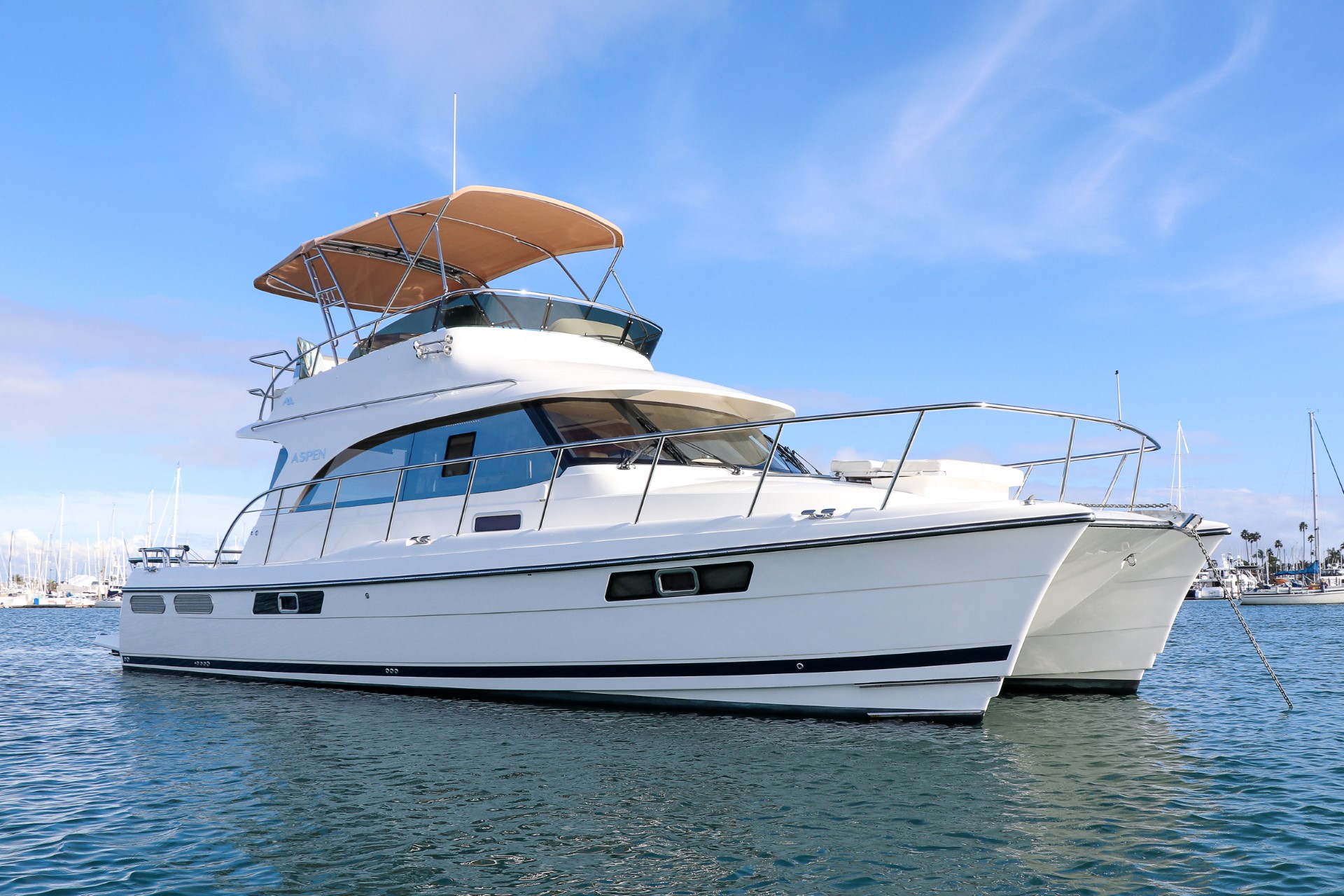
2022 Aspen C120
$1,049,000 See Full Description
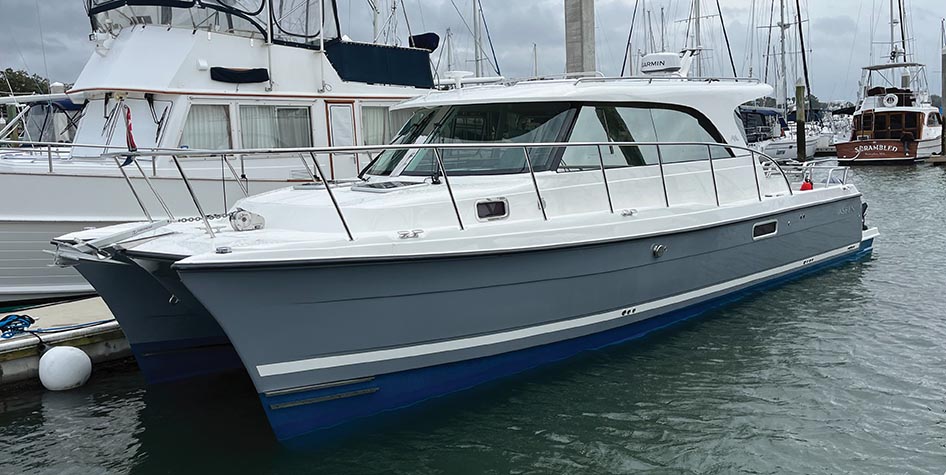
2024 Aspen C108
$665,000 See Full Description
2020 Aspen C120
$949,000 See Full Description

2021 Aspen C120
$1,079,000 See Full Description

2018 Aspen C120
$849,000 See Full Description
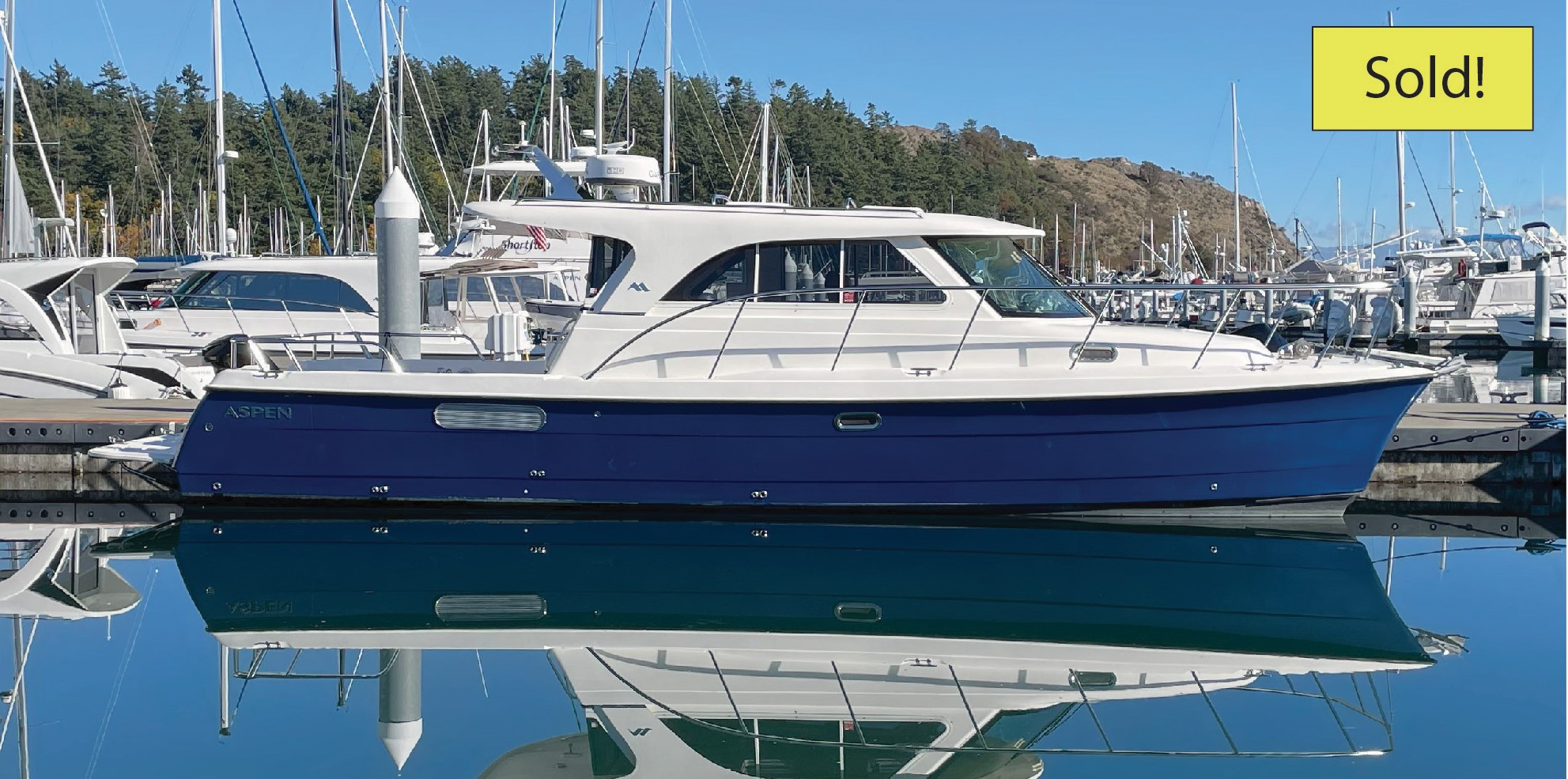
2015 Aspen C100
$327,000 SOLD! See Full Description
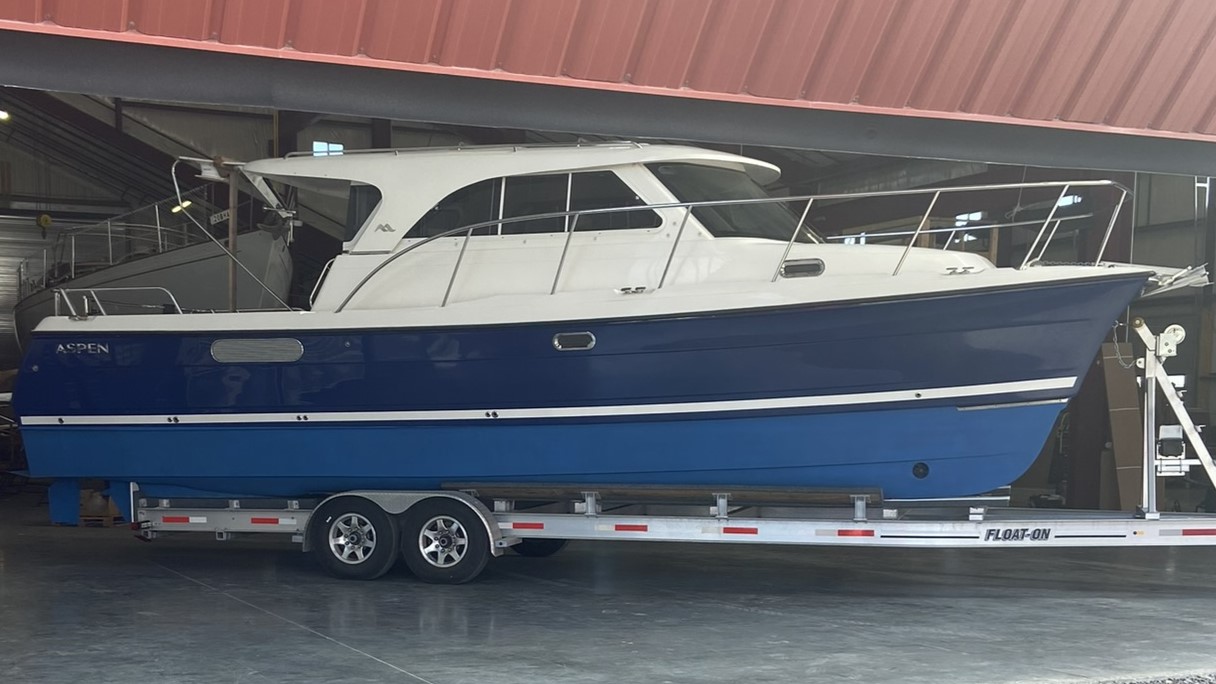
2016 Aspen C100
$320,000 See Full Description
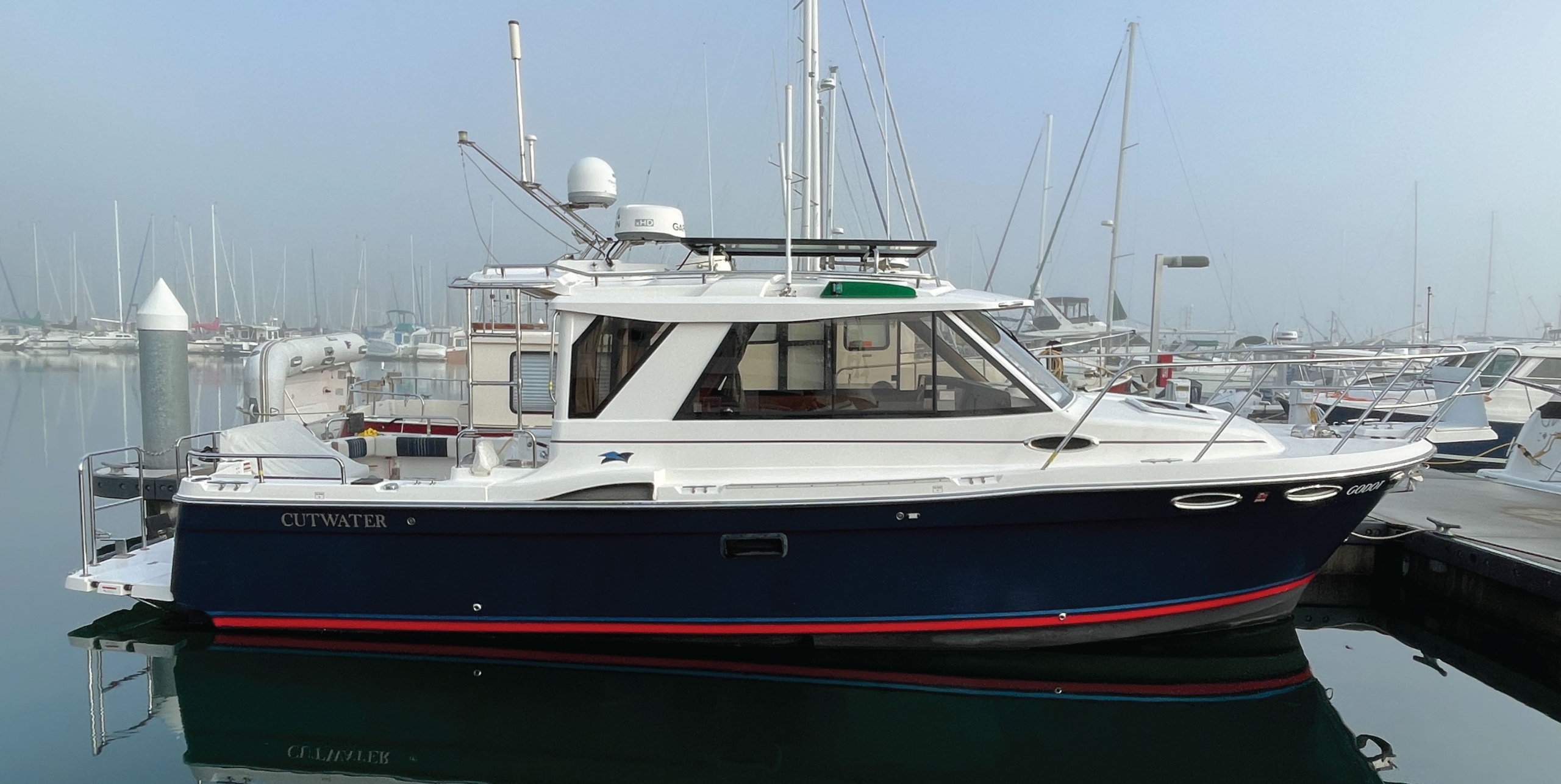
2018 Cutwater C28
See Full Description
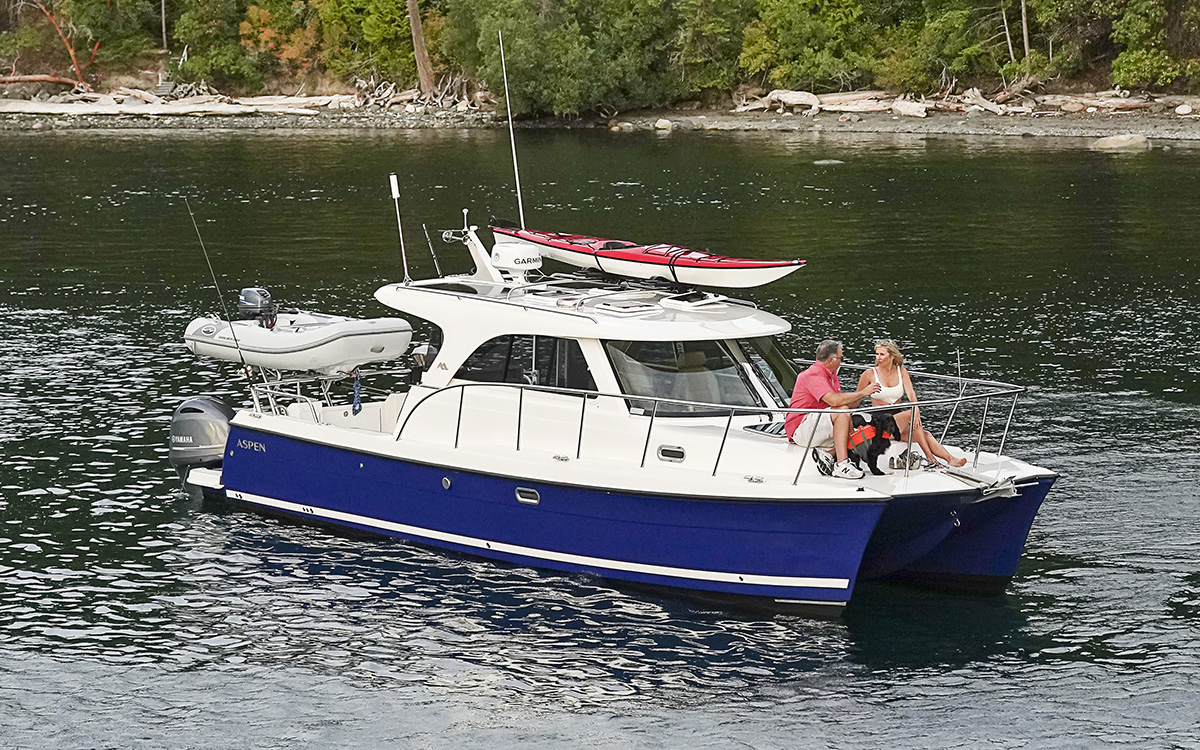
2019 Aspen C107 – SOLD!
$380,000 SOLD! See Full Description
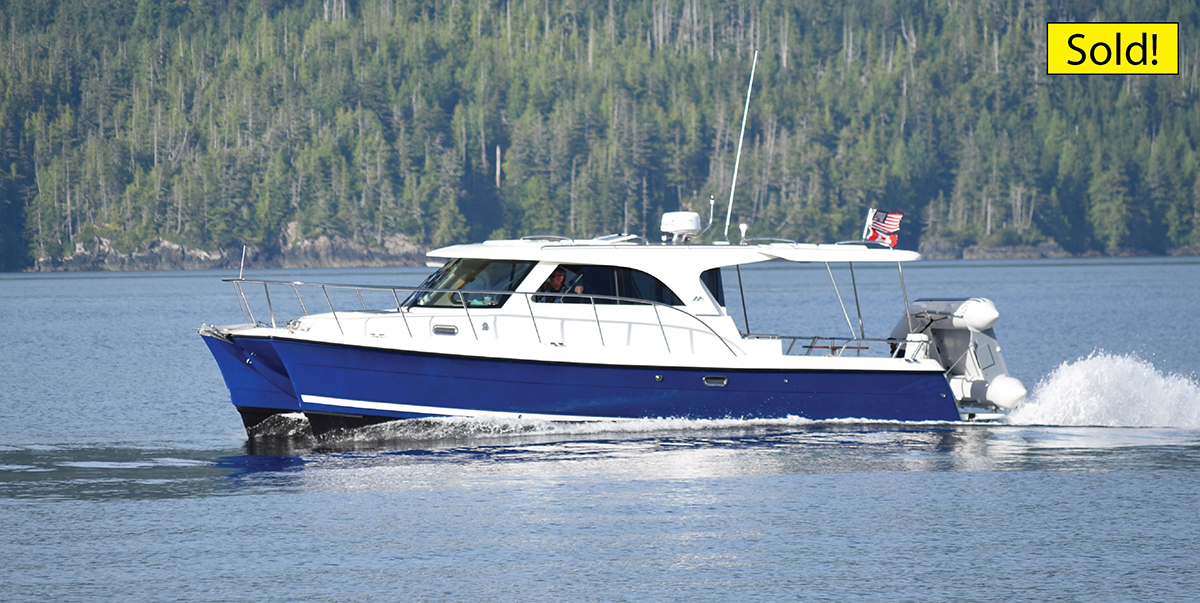
2018 Aspen C100
$390,000 SOLD! See Full Description
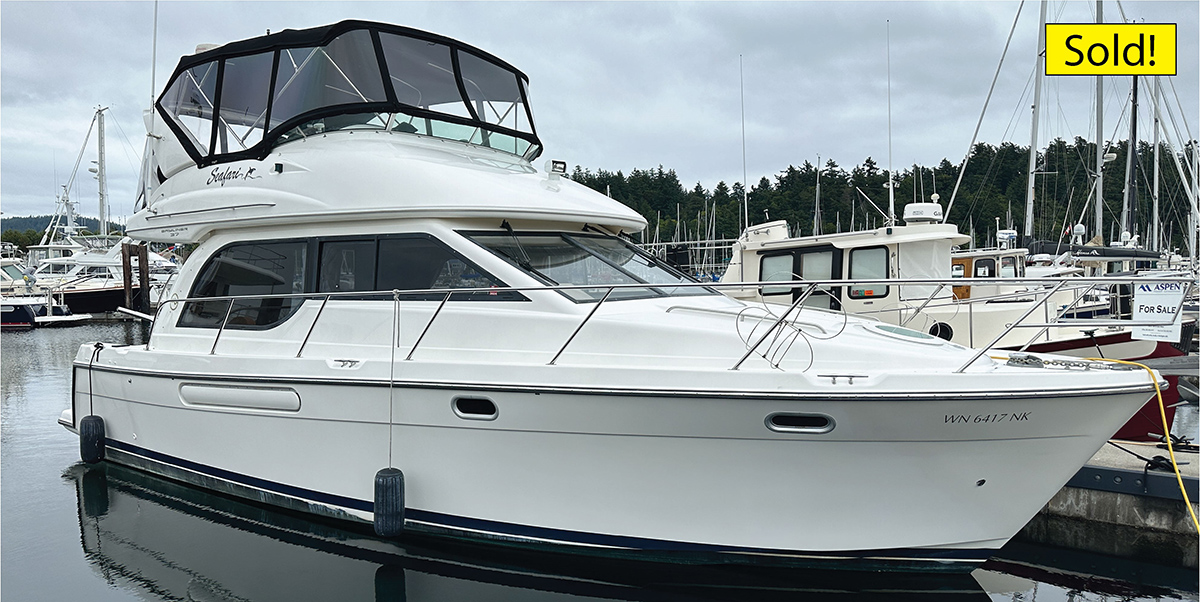
2001 Bayliner 3788
$125,000 SOLD! See Full Description
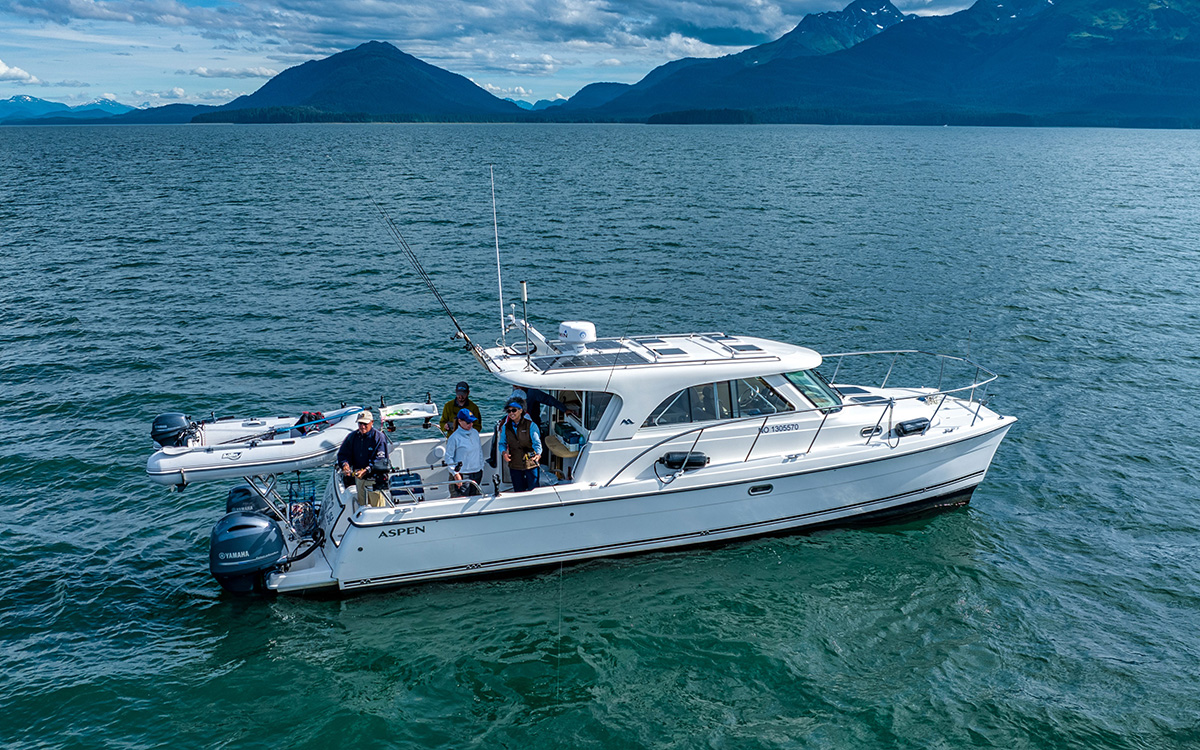
2020 Aspen C107
$449,000 SOLD! See Full Description

SOLD at $330,000 See Full Description
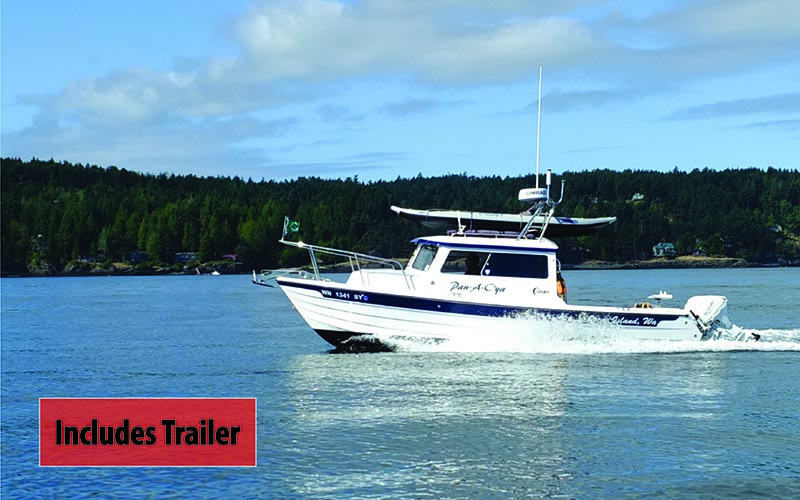
2021 C Dory 23
Sale Pending at $119,000 See Full Description
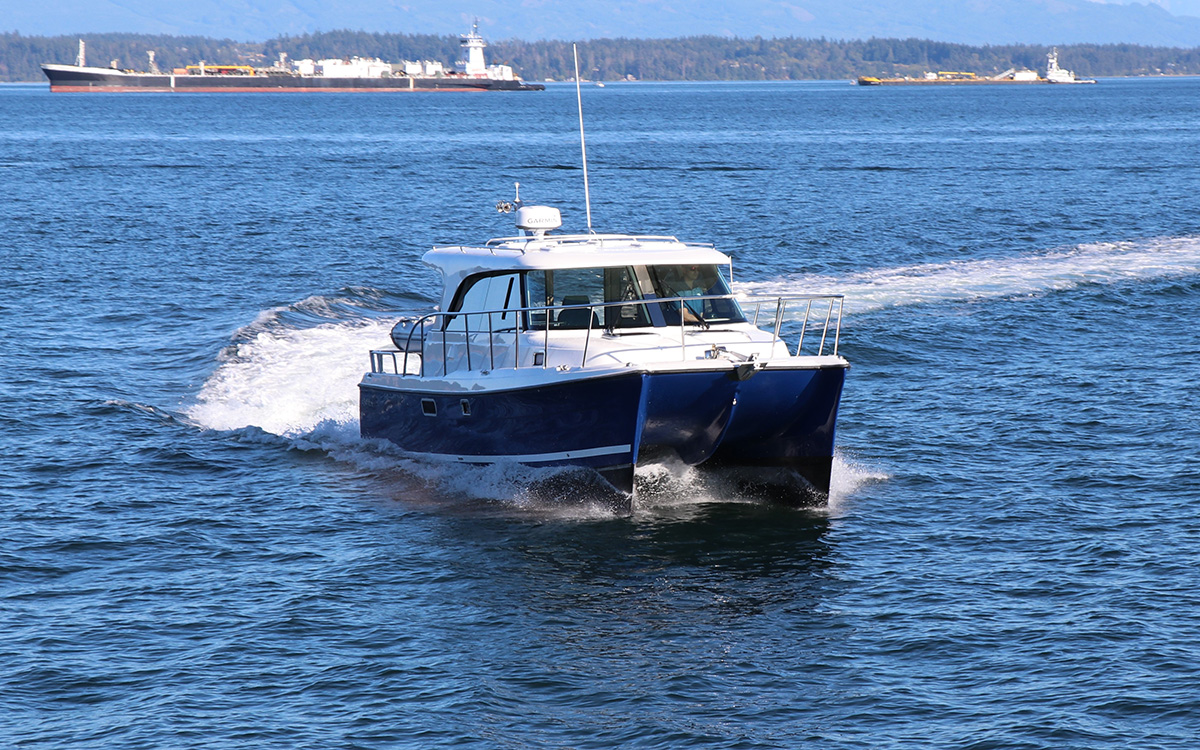
2021 Aspen C108
$505,000 SOLD! See Full Description
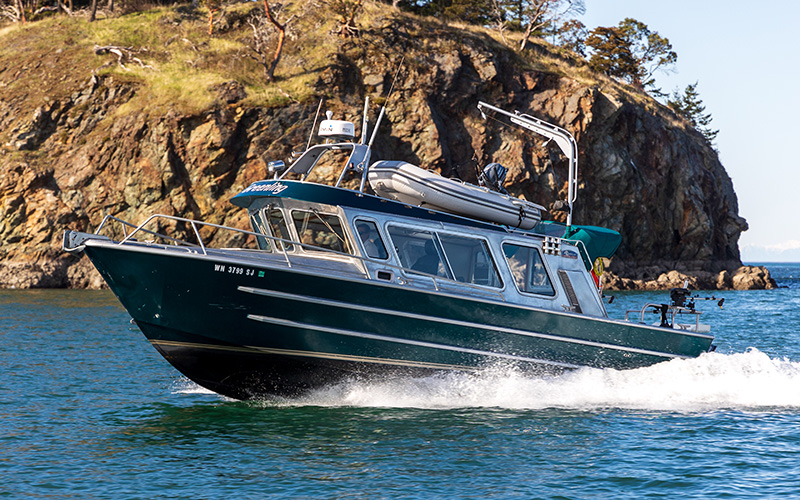
2007 Eagle Craft 32
SOLD at $209,000 See Full Description

2014 Aspen C100
$300,000 SOLD! See Full Description

2016 Cutwater C30 CB
$239,500 (Sold) See Full Description
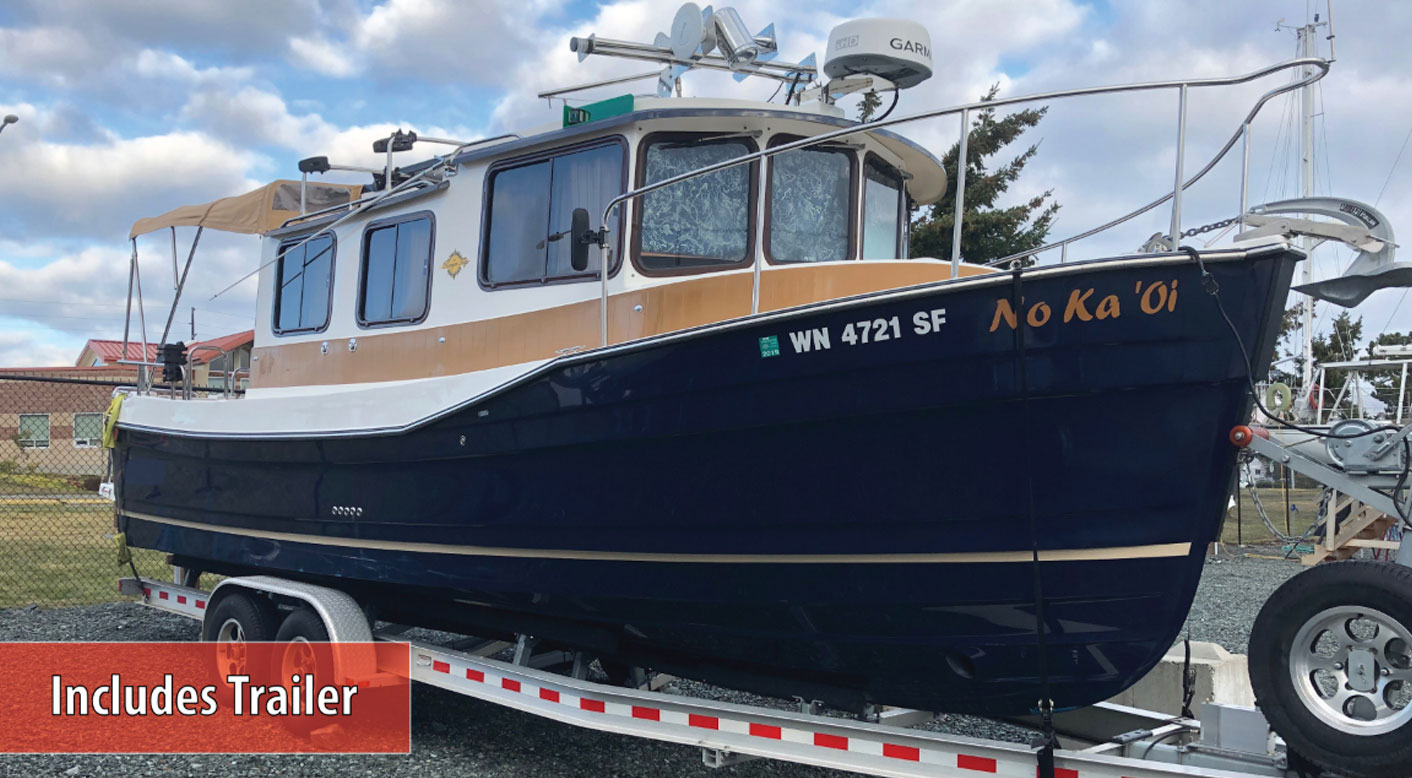
2015 Ranger Tug R-27
$149,950 (Sold) See Full Description
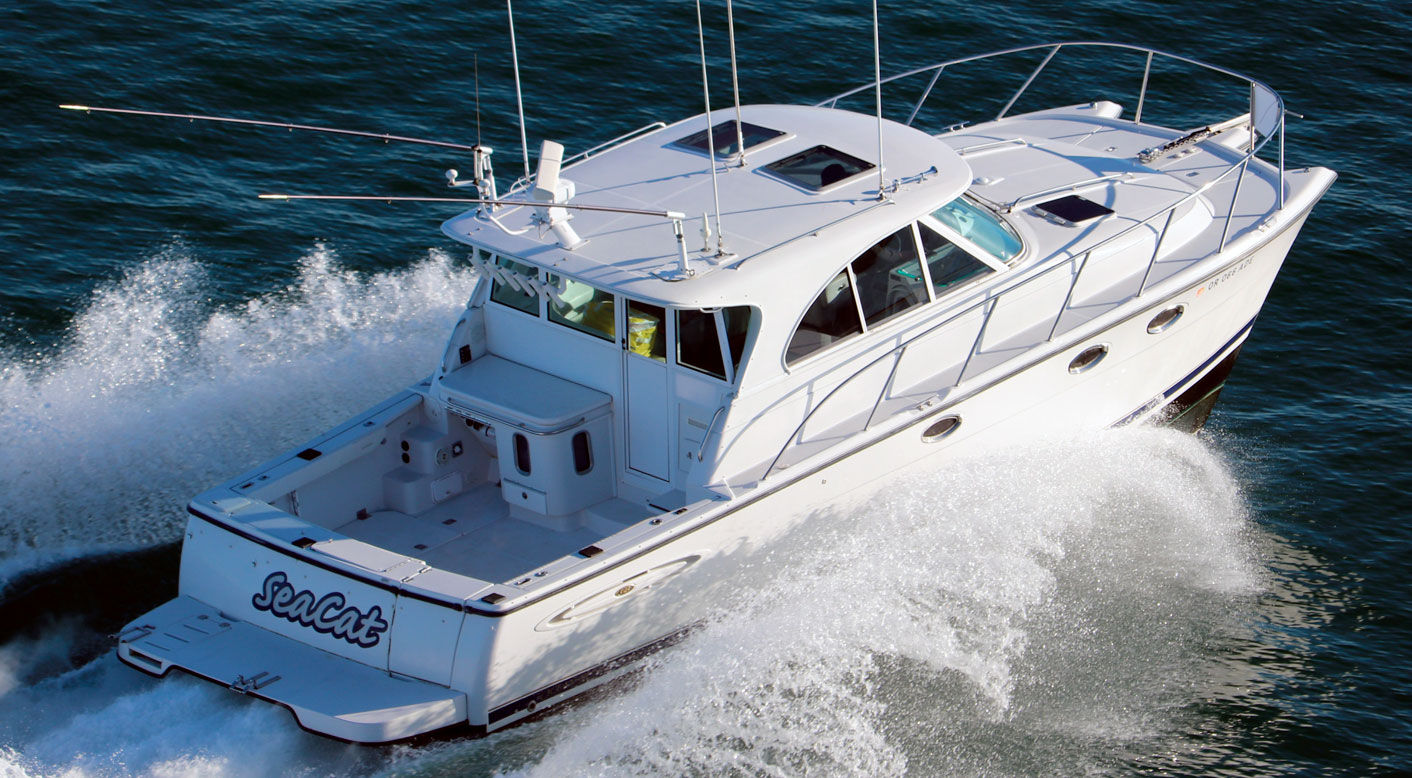
2007 Glacier Bay 3480
$169,900 (Sold) See Full Description
Patent No. US 8,109,221 B2
Stay Up to Date with Aspen Sign up to receive our enewsletter.
11656 Knudson Rd. Burlington, WA 98233
Privacy Policy
© Copyright 2012 - 2024 | Aspen Power Catamarans
(360) 668-4347 EMAIL US

IMAGES
VIDEO
COMMENTS
Explore Our 32' & 42' Signature Cabin Models. Perfect for offshore and inshore cruising, long distance and overnight trips, cold off seasons and hot boating seasons, and much more. The ArrowCat 32-foot and 42-foot models provide an exciting and versatile experience on the water. Explore to see which one could best suit your boating lifestyle.
At a time when most of the major multihull builders' ranges start at 40 feet or even 42, it's refreshing to see that Aquila Power Catamarans, leader in the powercat market, offering a little sistership to the 32 Sport - though this doesn't prevent the Chinese-American builder from also being interested in larger units, notably their recent 54 Yacht and 70 Luxury.
Power Catamaran boats listed for sale on YachtWorld offers a diverse price range, from $38,015 on the relatively lower-priced, classic models to an astonishing $11,077,391 for the more sophisticated yachts available. When evaluating your budget and the listed price of a yacht for sale, it is crucial to factor in the cost of ownership.
Nor-Tech has built power catamarans with 3,700-hp turbine engines that can break 200 mph, and many of their power cats will easily run in excess of 100 mph. See Nor-Tech power catamarans for sale on boats.com. Twin Vee Power Catamarans Twin Vee has a wide range of boats in its lineup, stretching from 24' all the way to 40'. Photo via Twin Vee.
The Smart Cat S280 is the smallest catamaran on the market today. The Korean-made catamaran offers a mix of space, shallow sailing, and affordability. At the 2020 Miami Boat Show, the starting price of the Smart Cat S280 was $149,900. It runs on a 19.8 Yamaha HorsePower engine with a 50 Horse Power option.
Benefits of catamaran designs typically include increased stability, deck space, ride, and cruising efficiency. At Aspen we think differently and refined the concept further by developing a unique PRO cat that maximizes fuel efficiency and range while improving ride and seaworthiness. Patent No. US 8,109,221 B2.
The Aquila 36 is the first vessel in the builder's series with outboard power. Aquila Boats. The Aquila 36 is a departure from her sisterships in that she is an outboard-powered, express-cruiser-style catamaran, but she also adheres to MarineMax's philosophies.. With a single main living level from bow to stern and a beam of 14 feet 7 inches, the Aquila 36 is like a bowrider on steroids.
Ron Mueller. A single 20-hp outboard can outperform twin 5-hp outboards. Just behind the motor's shaft you can see one of the extensions added to the hulls to improve the trim with the greater motor weight. The custom-made canopy doubles the Cat's sheltered space. The twin 5-hp outboards proved to be not enough power.
The maximum speed quoted by the builder, subject to the chosen drivetrain, ranges from 16 to 30 knots. The deck layout comes in several versions - open, central passage, cabin - and can accommodate 7 people. Manufacturer: Powercat. Length: 17'3" (5.25 m) Beam: 7'5" (2.25m) Draft: 12" (0.30 m)
Nautitech 47 Power. Horizon PC74. Lagoon Seventy 8. ArrowCat 420. Bali 4.1. Sunreef Supreme 68. Hudson 48. In this article, I'll review some of the best power catamarans out there. I'll also go over the main features of different power cats and if they can handle rough weather.
These powerboats use the following propulsion options: outboard engine. There are a wide range of Power Catamaran boats for sale from popular brands like World Cat, Twin Vee and Aquila with 558 new and 694 used and an average price of $465,751 with boats ranging from as little as $18,154 and $7,209,605.
Aquila 42: sleek power catamaran ready to entertain. Azimut Verve 42: small, yet mighty yacht ready for open water. Hinckley Yachts 35: luxury picnic cruiser with range. Beneteau Gran Turismo 45: sleek cruising yacht with all the amenities. Solaris Power 48 Open: eye-catching power yacht with 360-degree views.
Increased deck and/or cabin space. Since powercats generally carry their beam all the way to the very bow of the boat (while monohulls taper to a point) they can have a lot more room. Many people say that a cat usually has around 1.25 times the square footage of a monohull the same length. Enhanced maneuverability.
These powerboats provide you an excellent combination of performance, stability, and maneuverability. These boats have a catamaran design, relying on two hulls to float the vessel instead of the typical deep-V hull found on other powerboat models. The multi-hull powerboat is ideal for cruising, and you can set it up for fishing or watersports ...
Generally speaking, a 38-foot-long, 21-foot-wide sailboat is not a small one. But if you love the French-style catamaran, this is about the smallest you'll find. That's because this type of boat depends on its width for stability and its length for carrying a load. A shorter boat is very easy to overload.
Prices for power catamaran boats on Boat Trader range from a reasonable $18,000 at the low-end to $7,614,524 for the more lavish boat boats. While affordable utility models may have engines with as little as 70 horsepower on them, models with more power can have motors up to a blazing 2,900 horsepower (although the average engine size is 600HP).
Affordable Catamaran Market. Unfortunately for liveaboard cruisers interested in catamarans, the market is dominated by enormous, often very expensive, four cabin-four head charter models. In fact, our analysis of sales data suggests that about 38% of the market consists of Lagoon catamarans and over 50% are Lagoon or Fountaine Pajots.
Arrowcat offers three models 32-42 feet and concentrates on fit and finish, a smooth ride, amenities and a top speed of 44 knots on their 32-footer. Aspen Catamarans' Power Proa design has dialed in superior fuel economy. Two asymmetrical hulls, one of which holds a single Volvo Penta diesel, deliver 9-20-knot speeds and 300-500 miles of ...
Engines: Single outboard, though some versions have twin inboards. Price: Roughly $100,000. The Wharram Tiki is one of the best small catamarans for cruising. We have lusted after the Wharram catamarans since our adventures began and would have opted for one of these if we had found one for sale this side of the pond.
Short answer: Small sailing catamarans. Small sailing catamarans are multi-hulled boats that offer stability, speed, and ease of handling. They typically have two parallel hulls connected by a platform and are designed for recreational or racing purposes. Popular among sailors due to their maneuverability and shallow draft, they are suitable ...
Availability: The ECO 55 power catamaran is an affordable DIY power catamaran. As the owner proved the boat is a capable coastal cruiser. The inside layout is the same as for the ECO55 sail version but the underwater shape is changed. The cockpit is wider and has a size of 1,45m x 2 m. With the bigger size normal deck chairs can be used.
Aspen Power Catamarans builds and sells new boats with a patented, groundbreaking proa hull design. Our owners enjoy their boats and take good care of them, but sometimes they want a different boat to accommodate changed circumstances—think better range for longer cruises or a different layout to carry more friends and family comfortably.